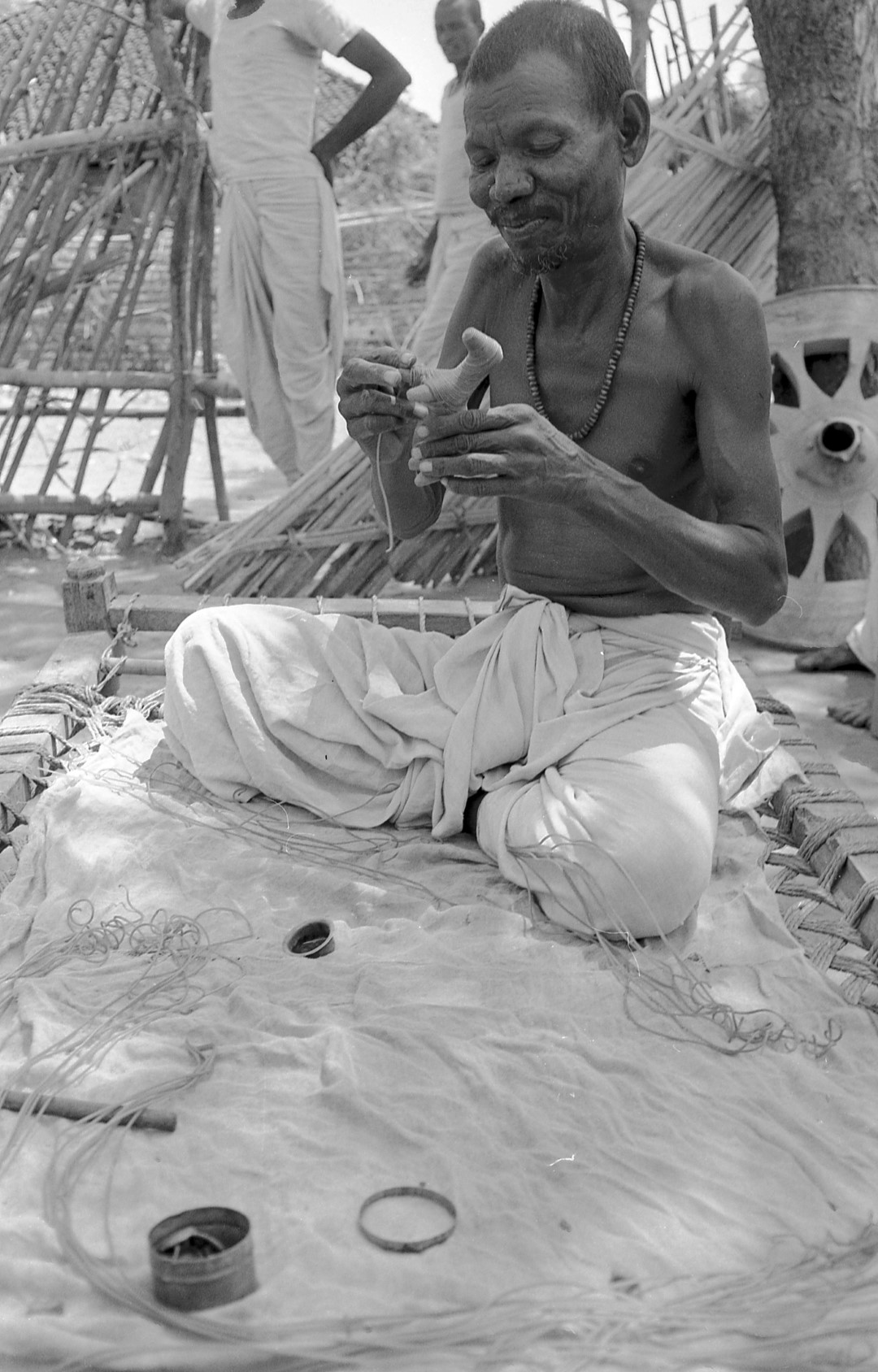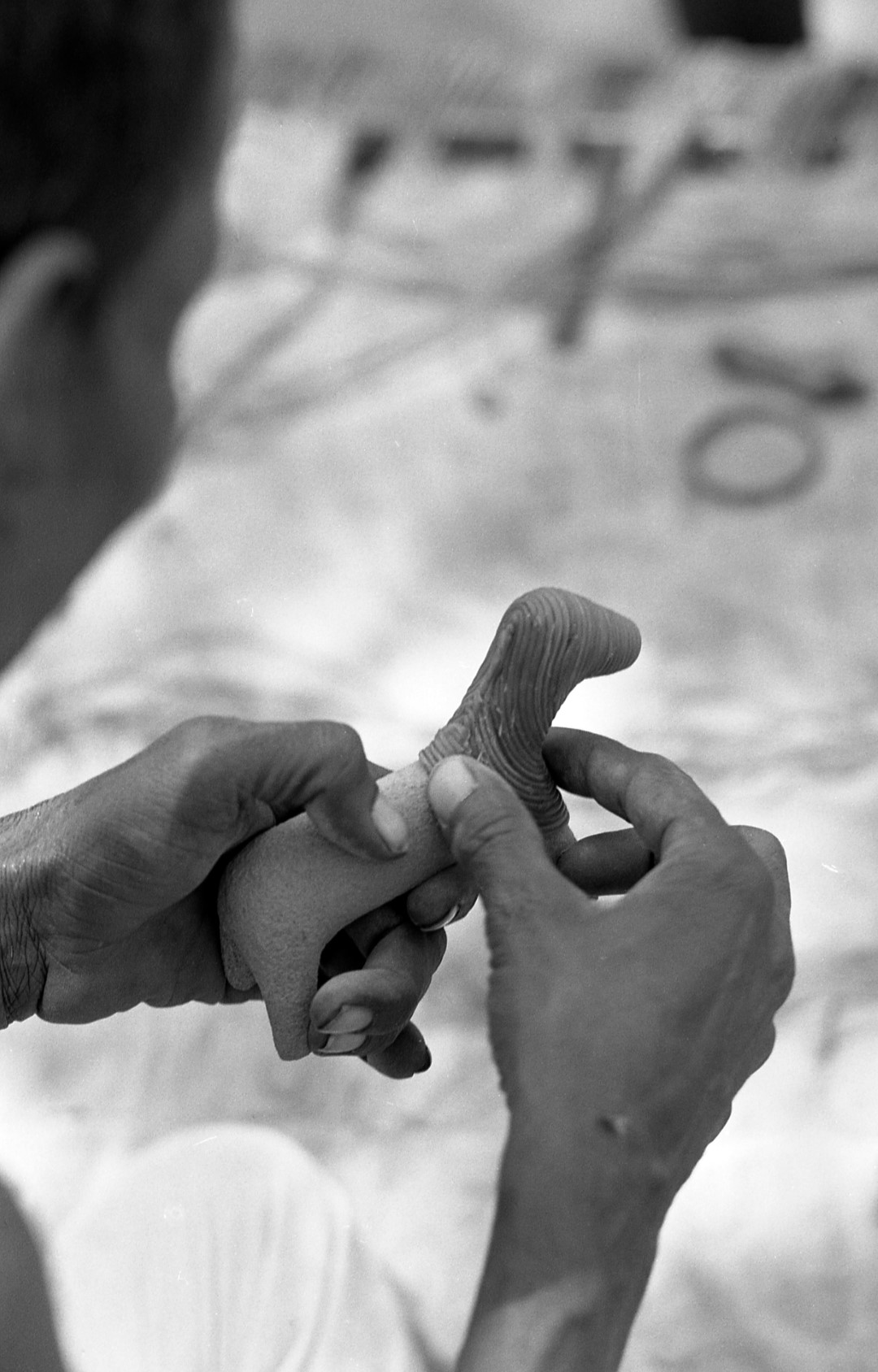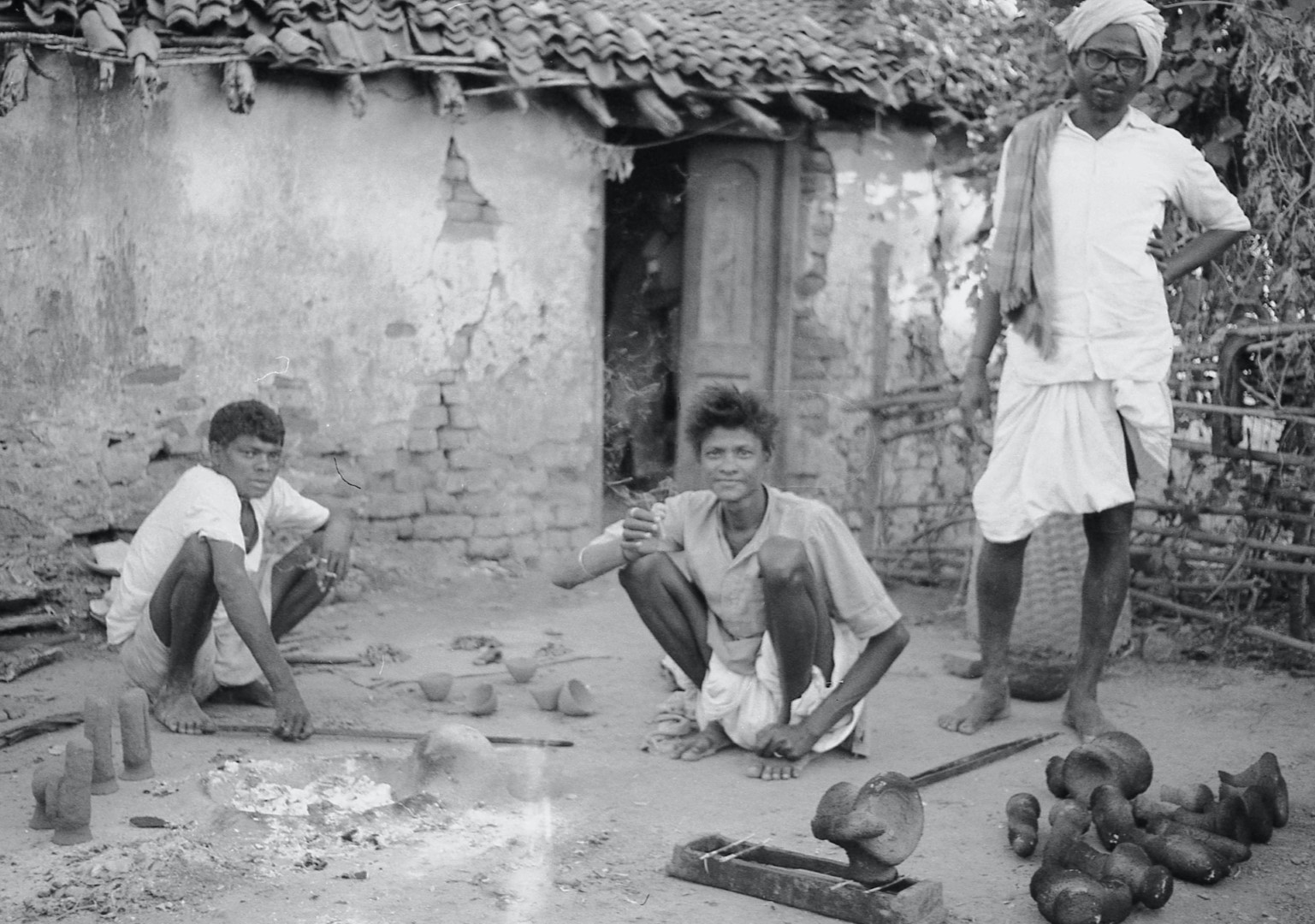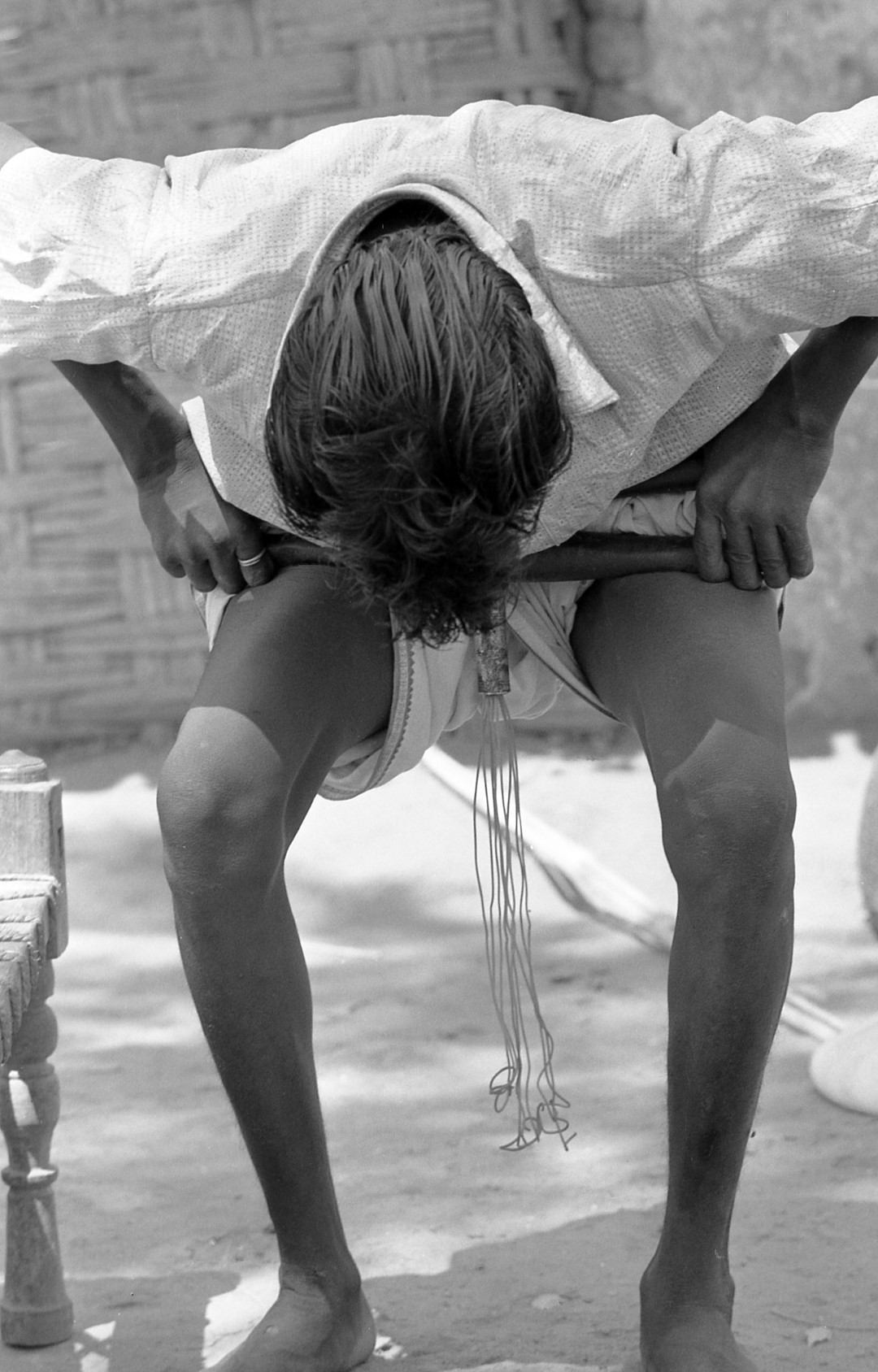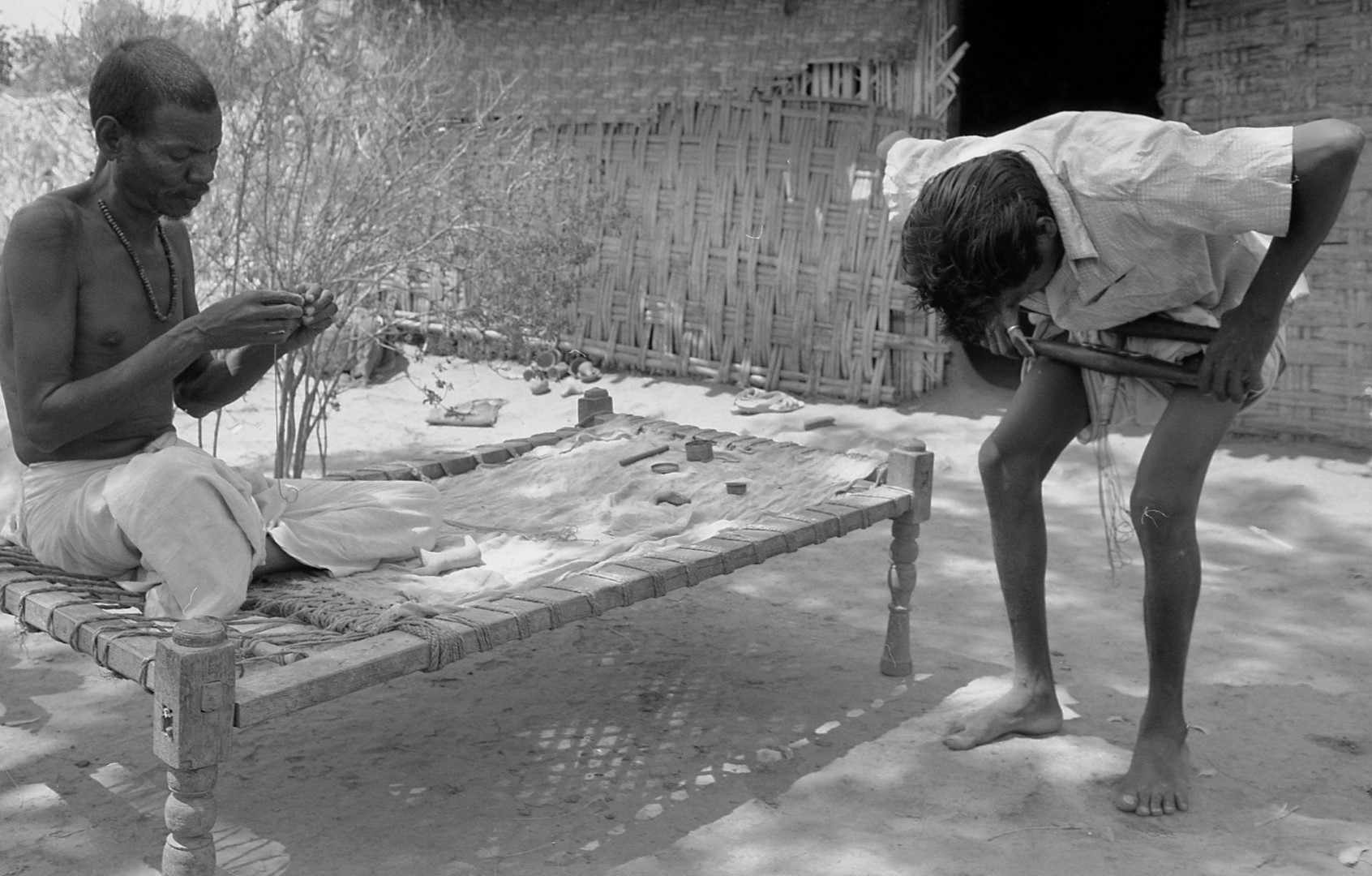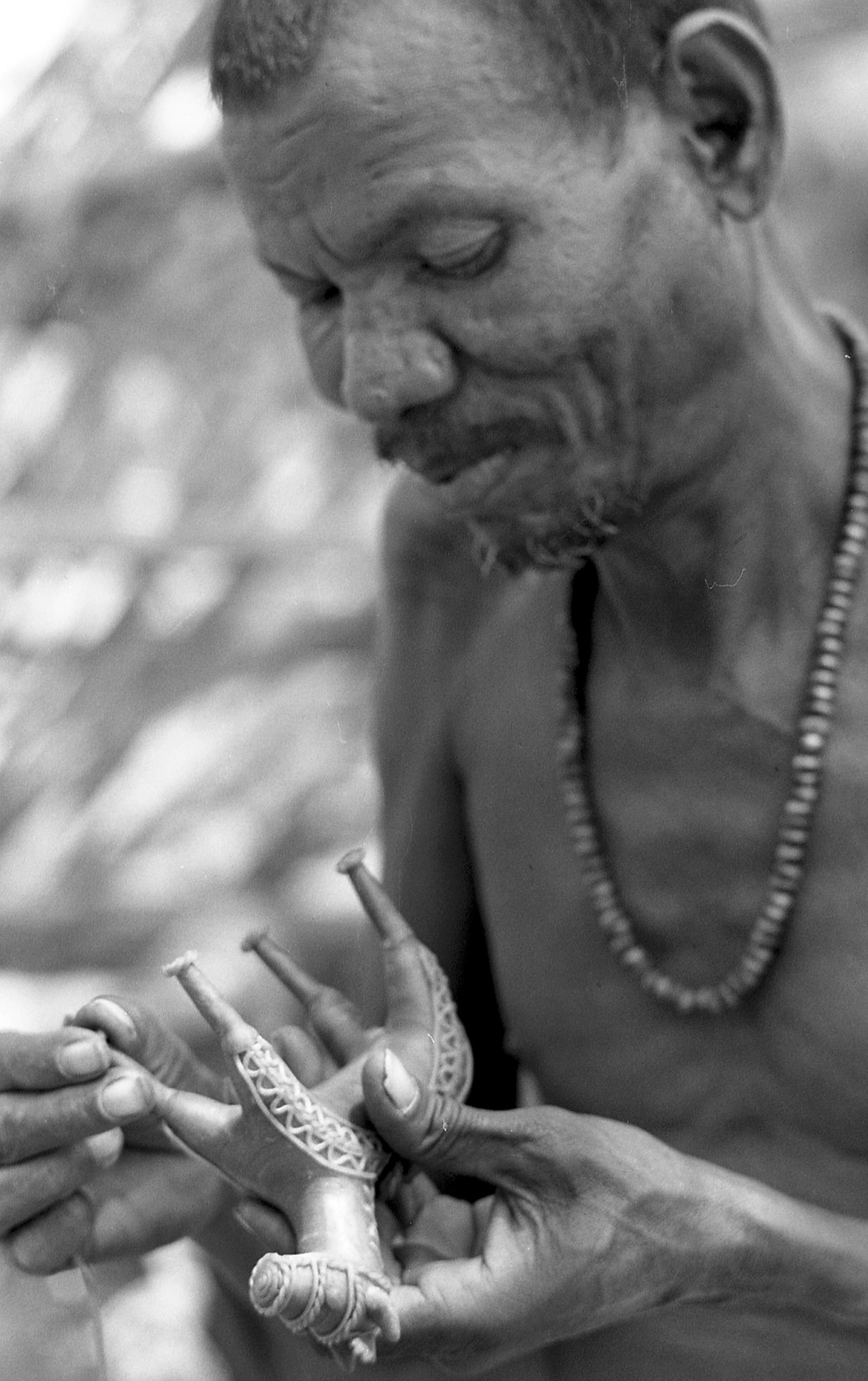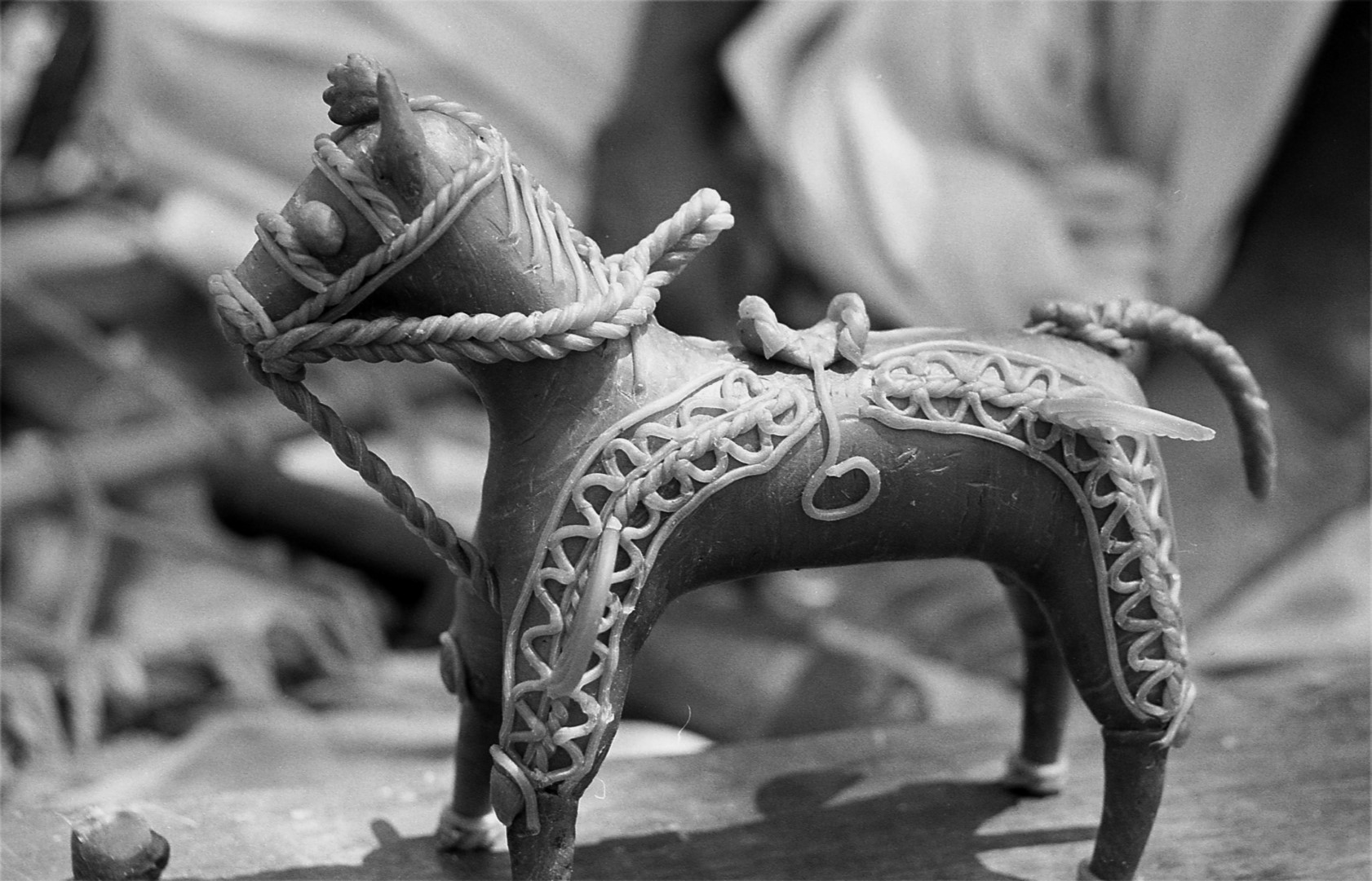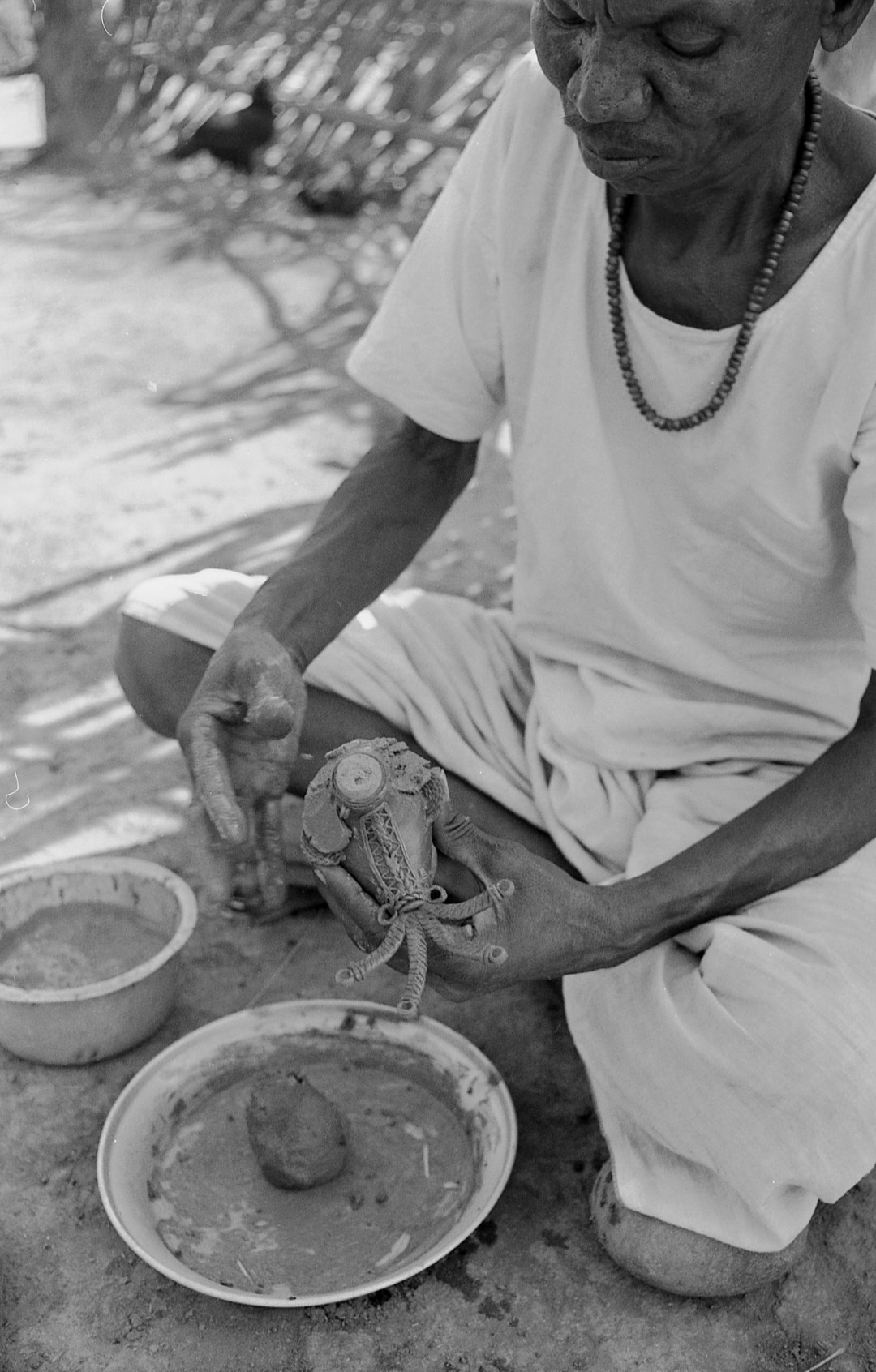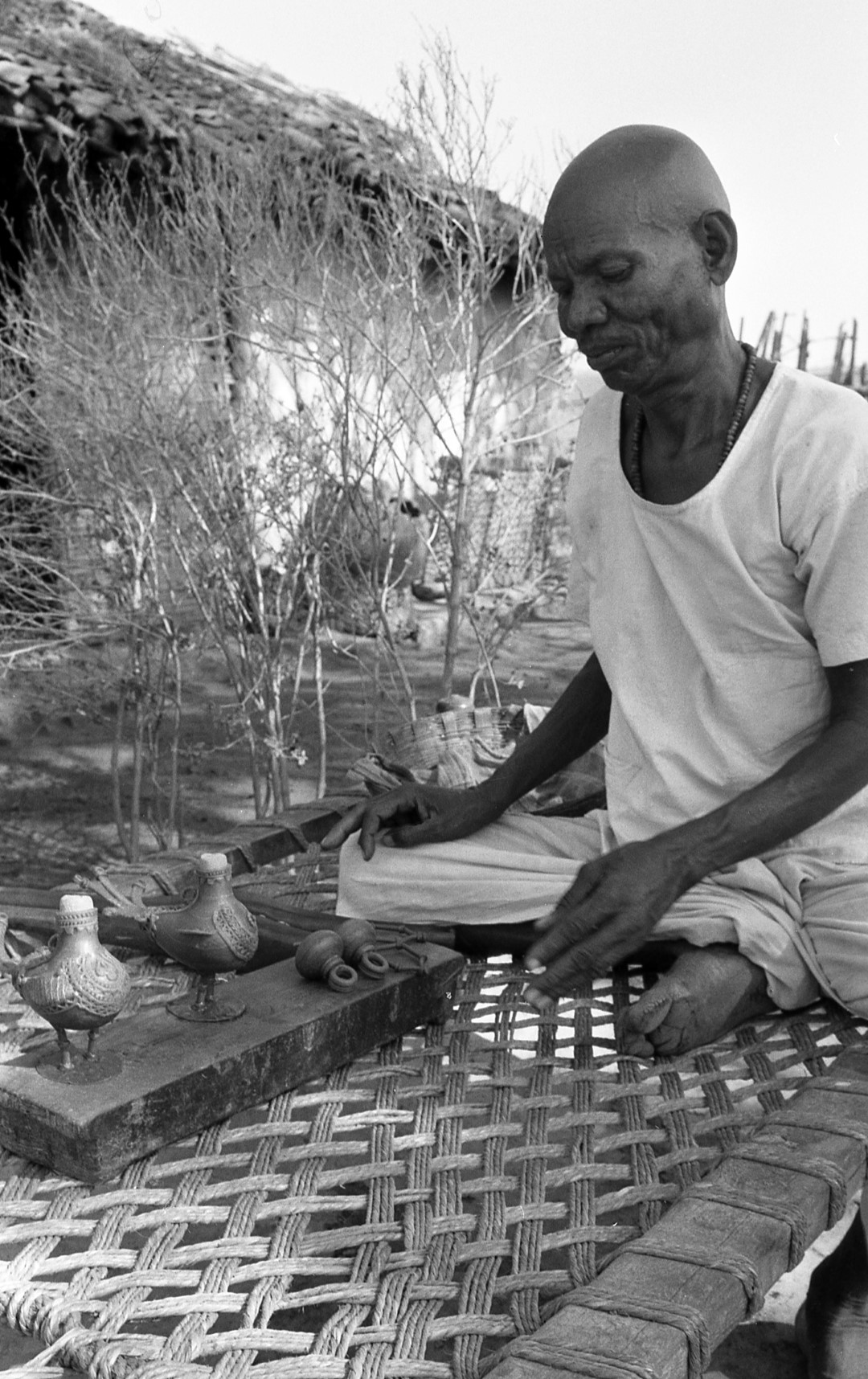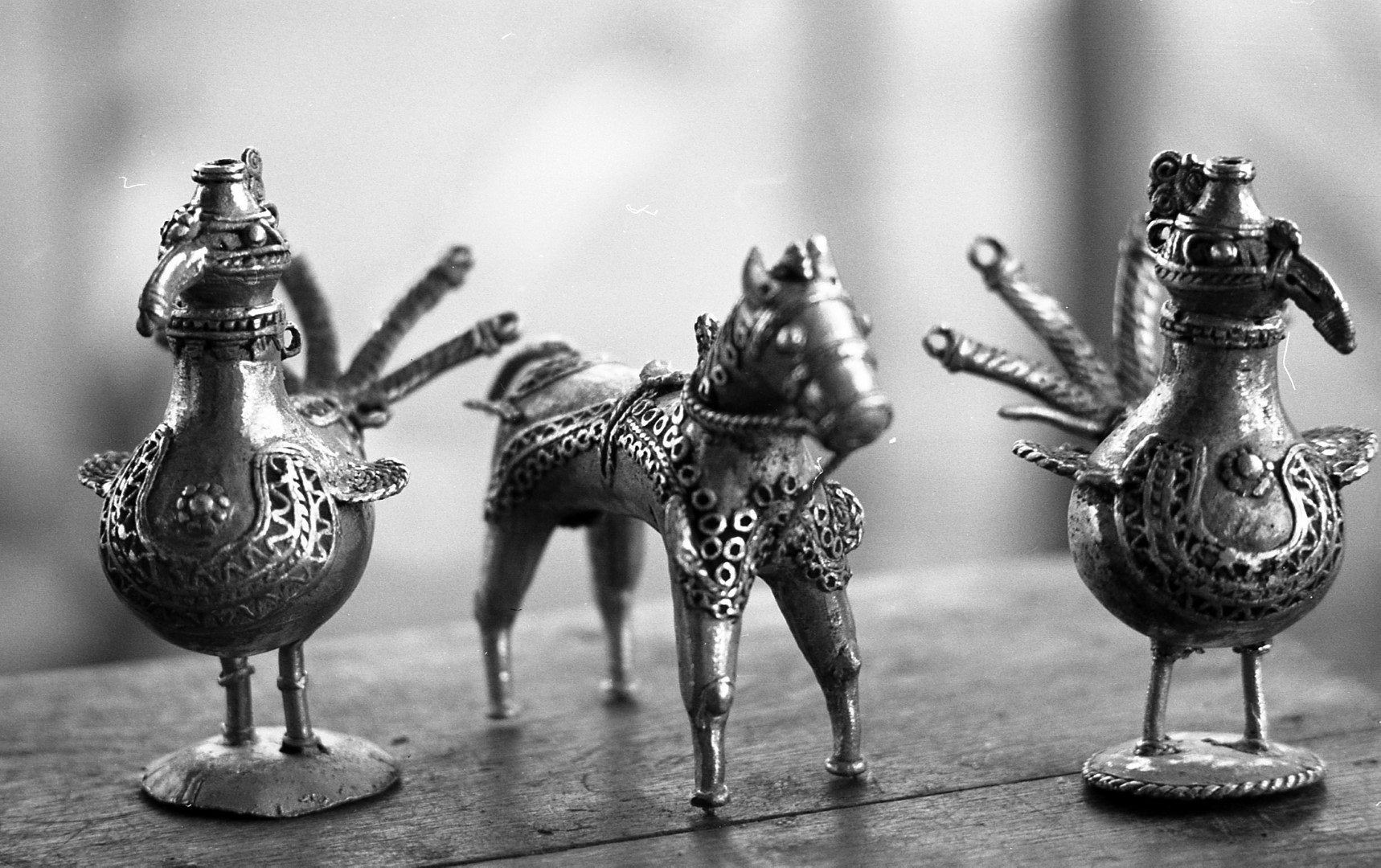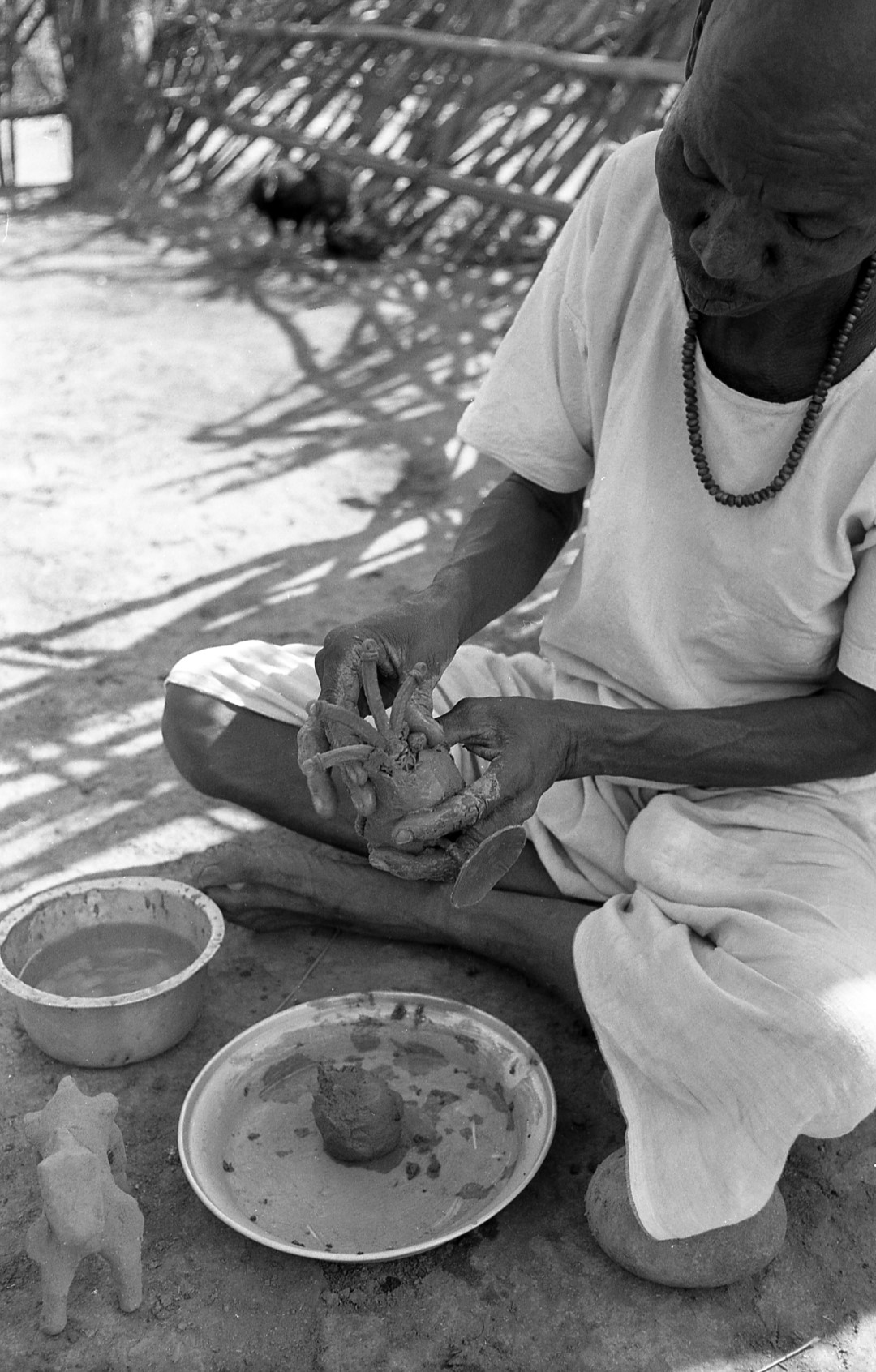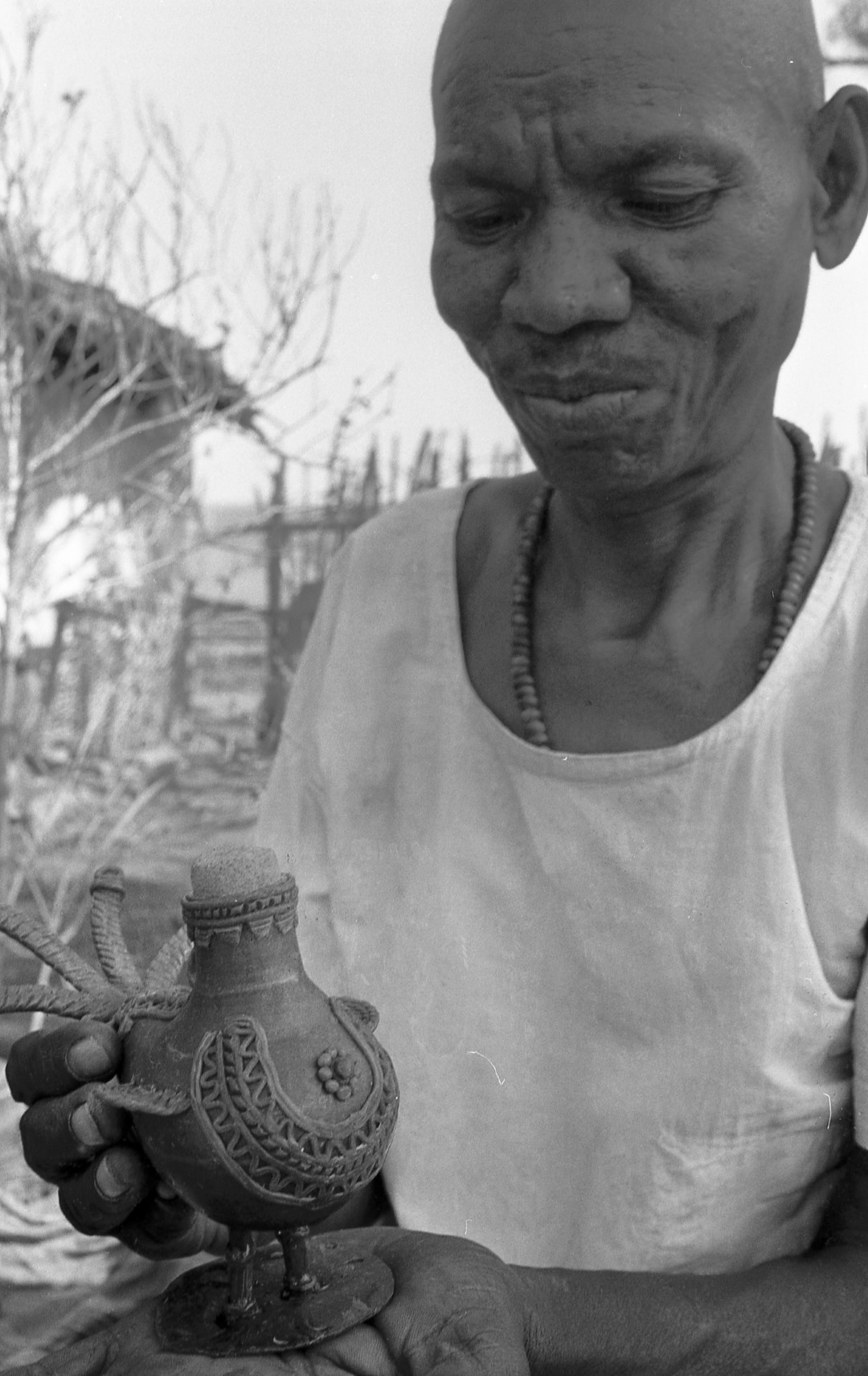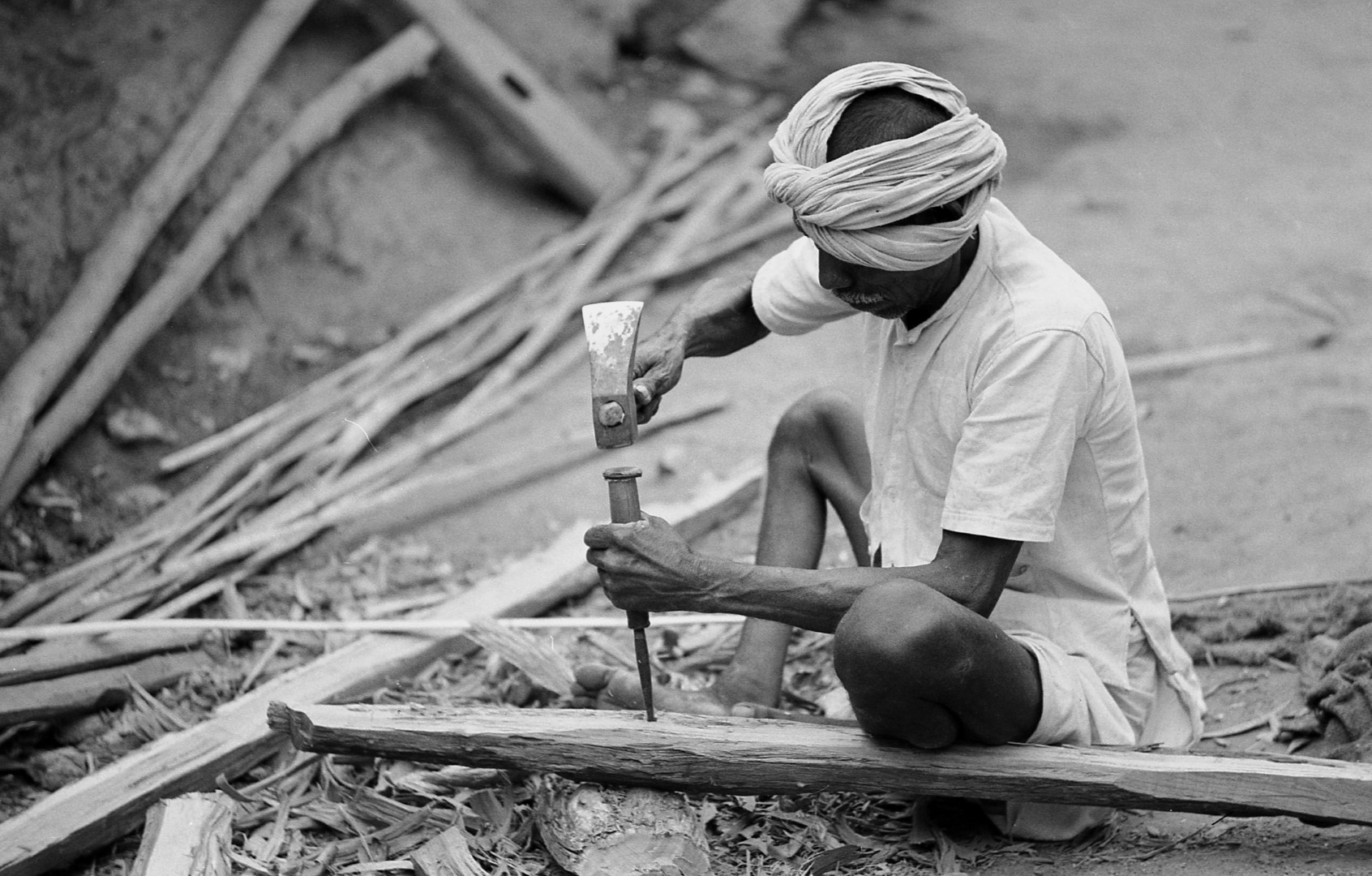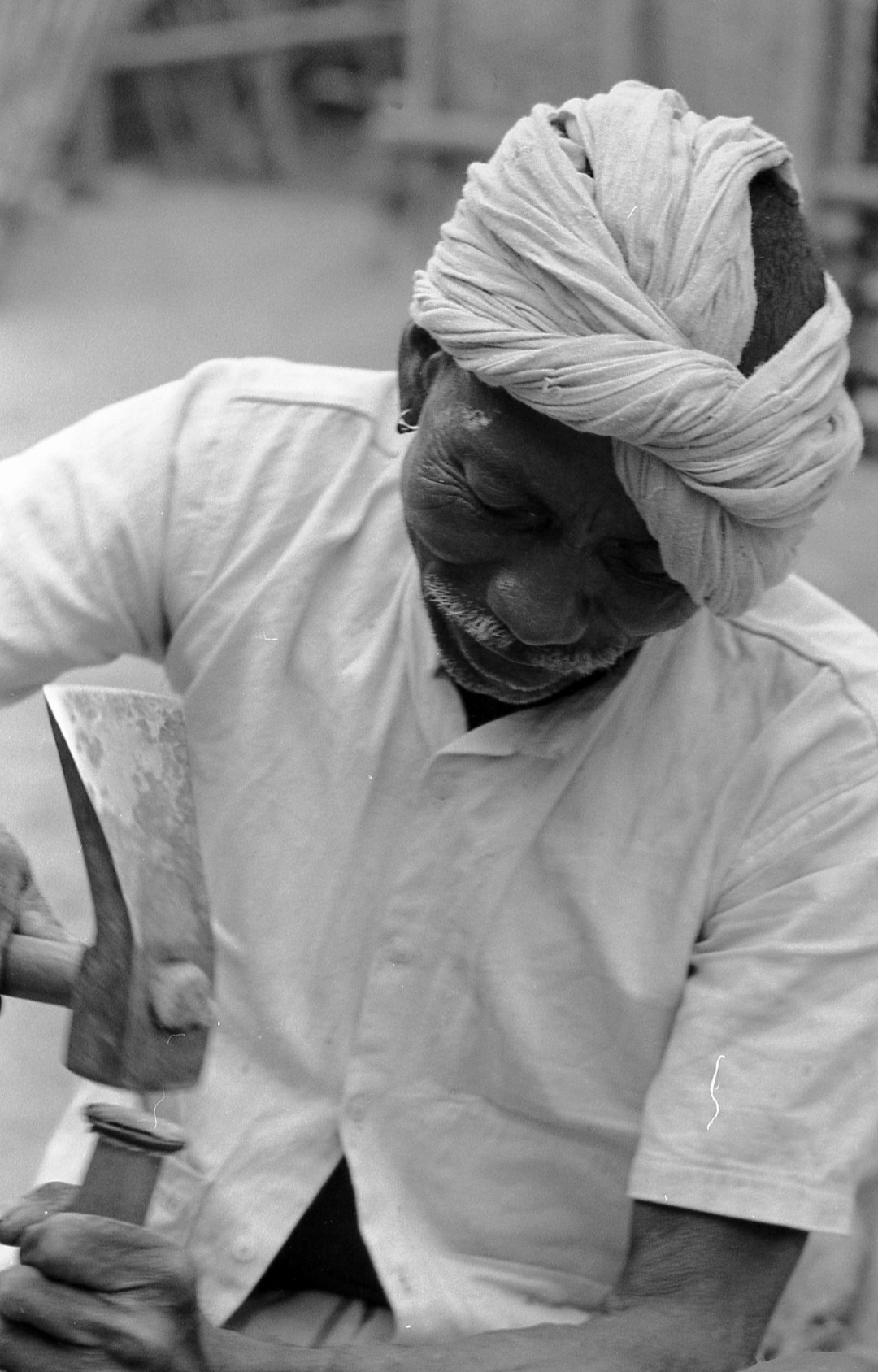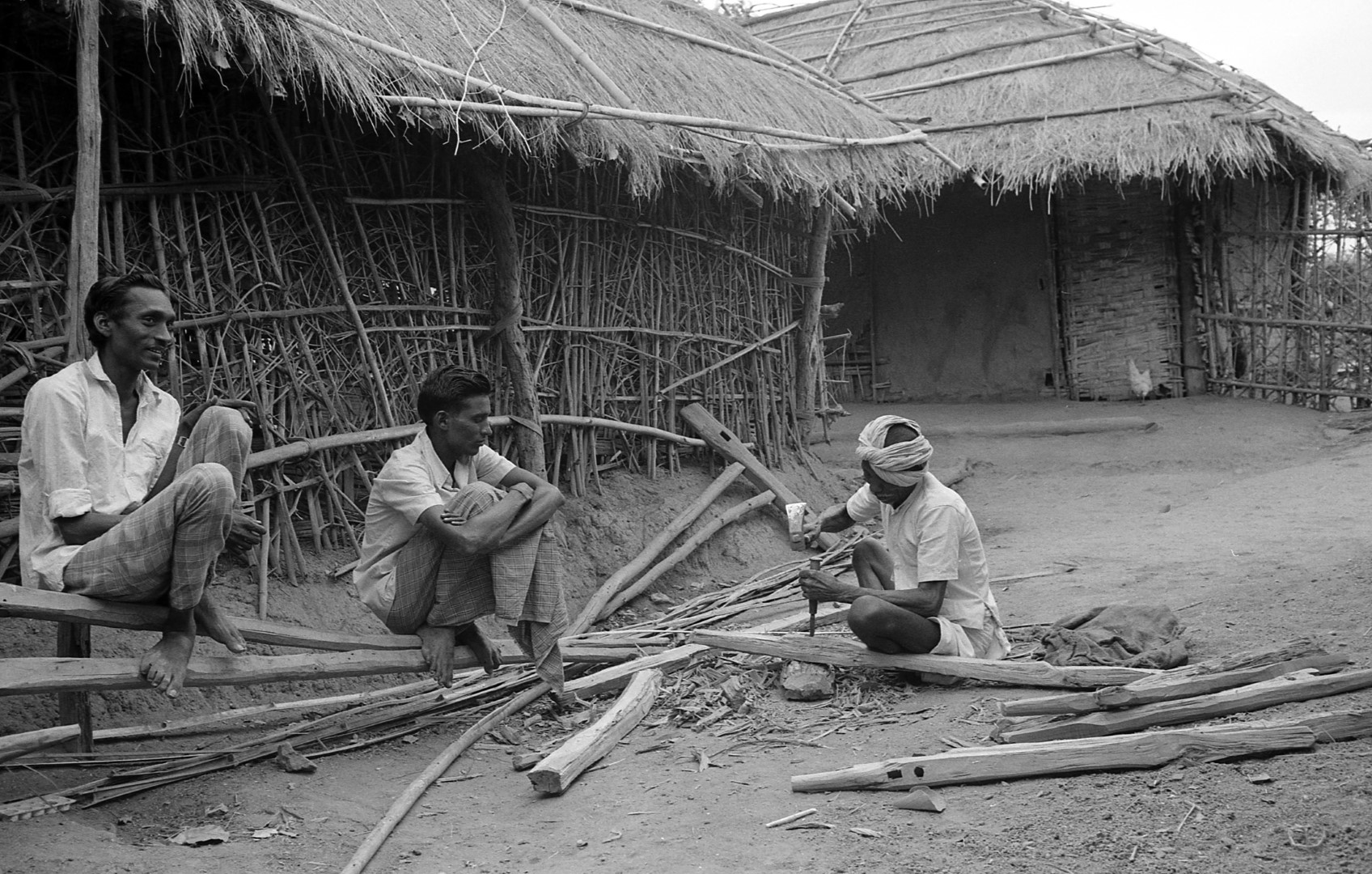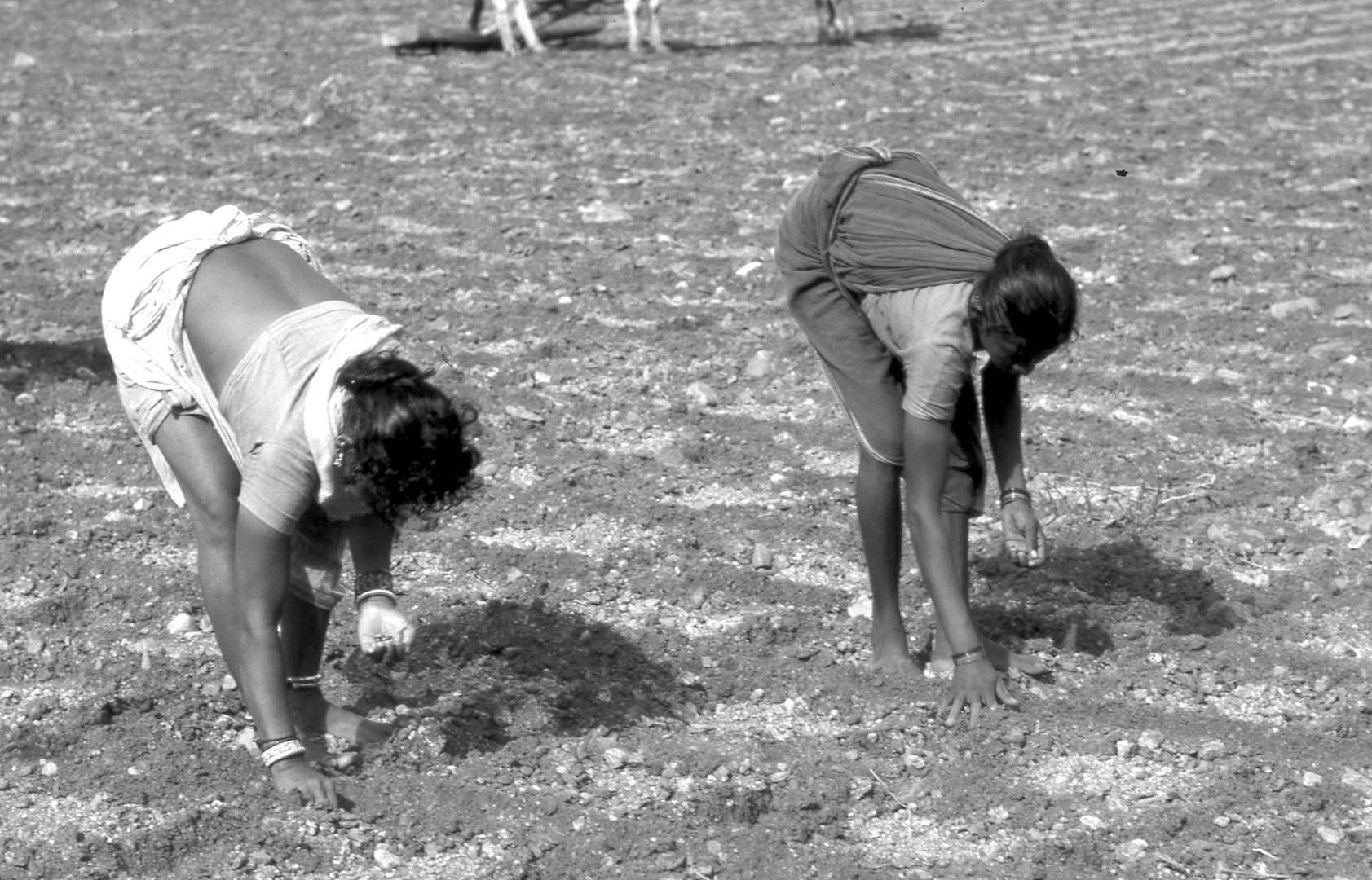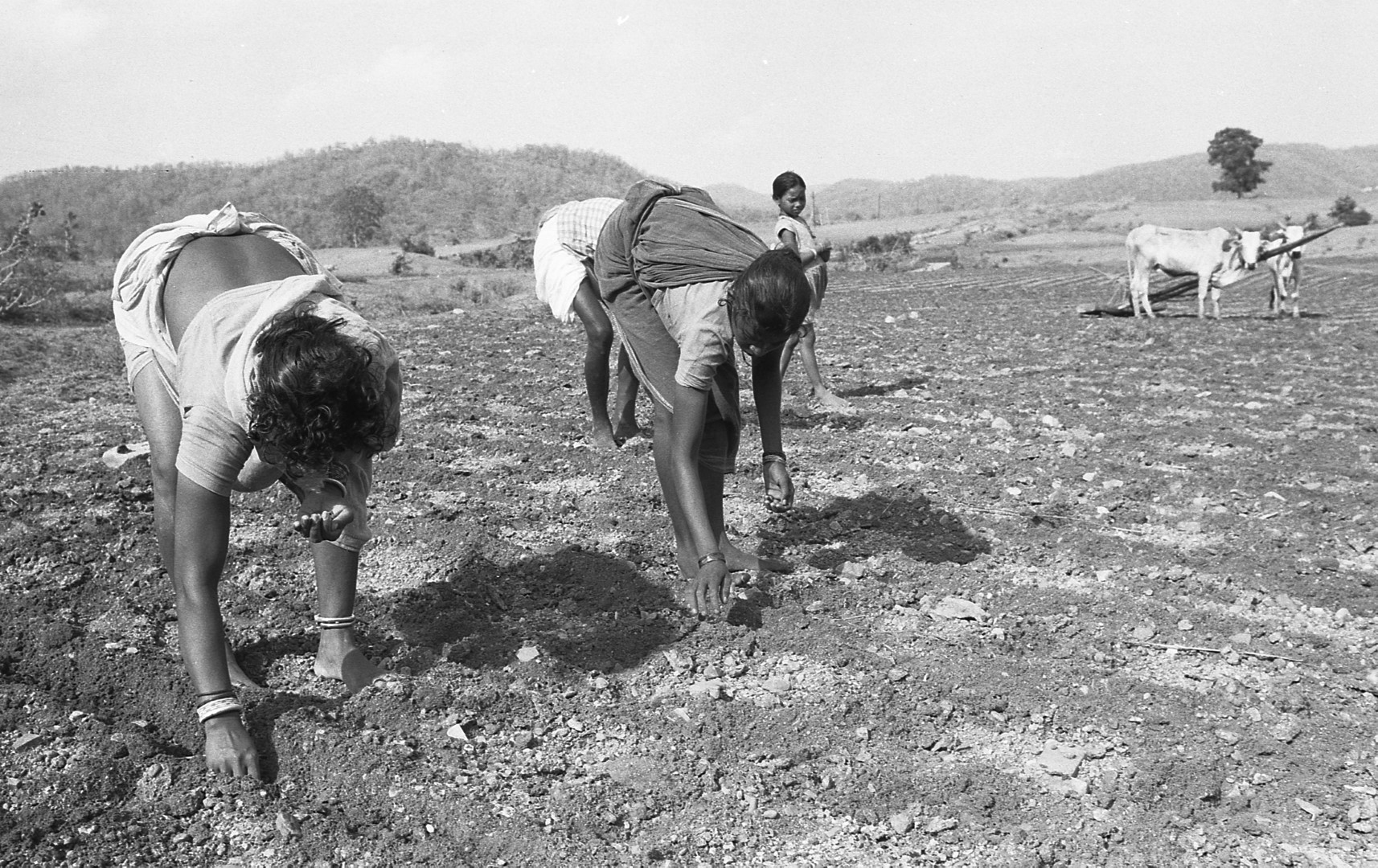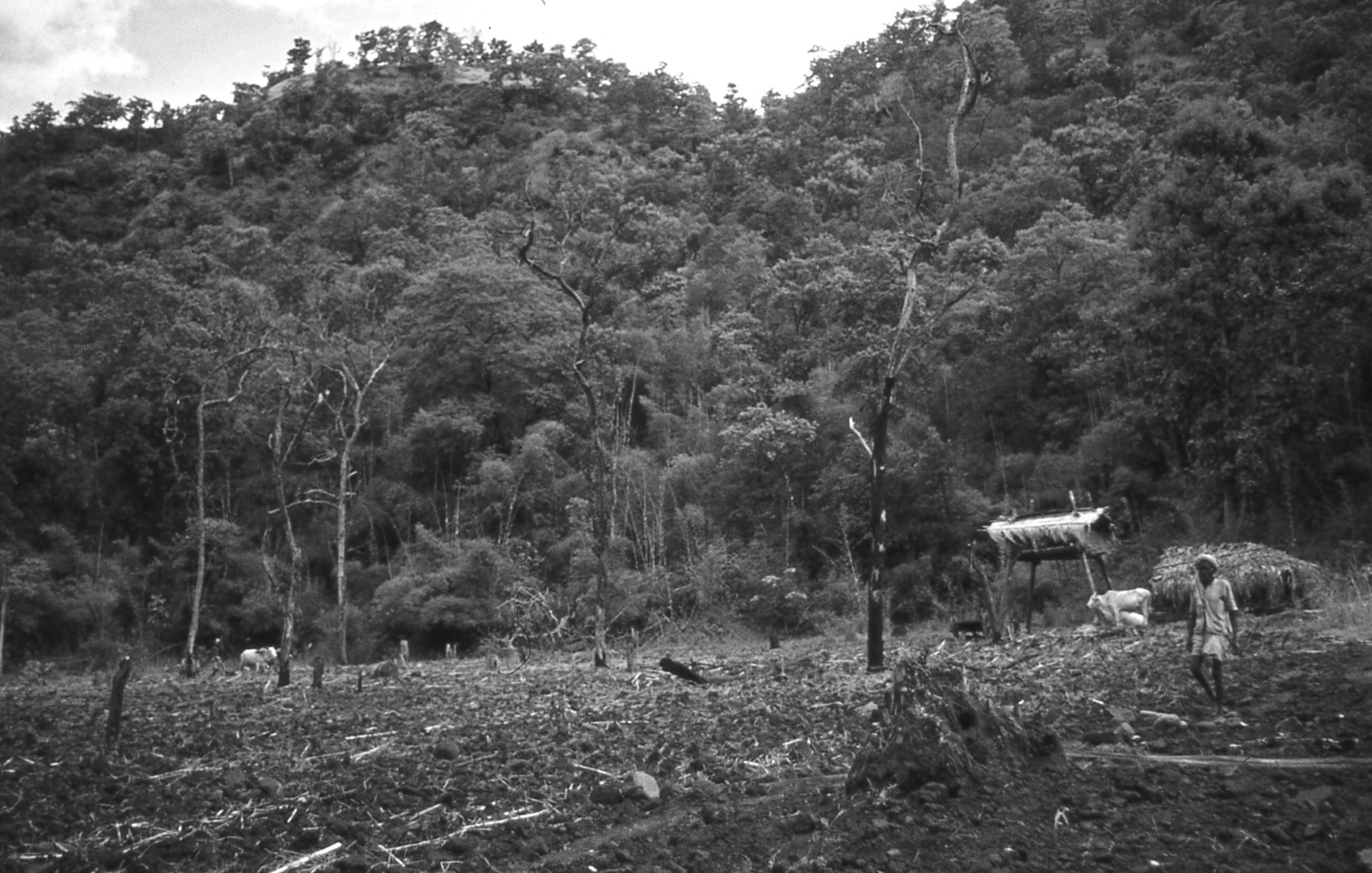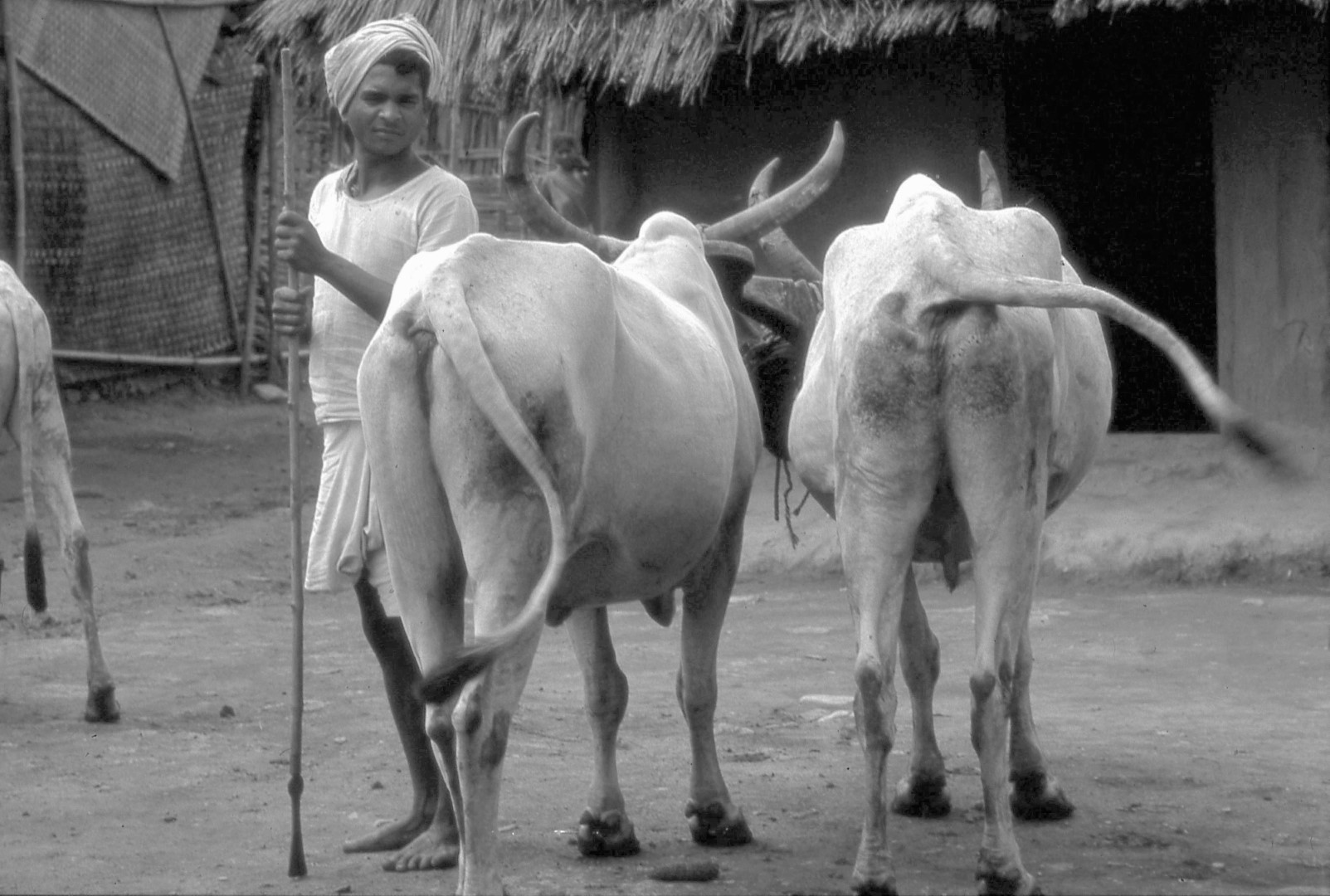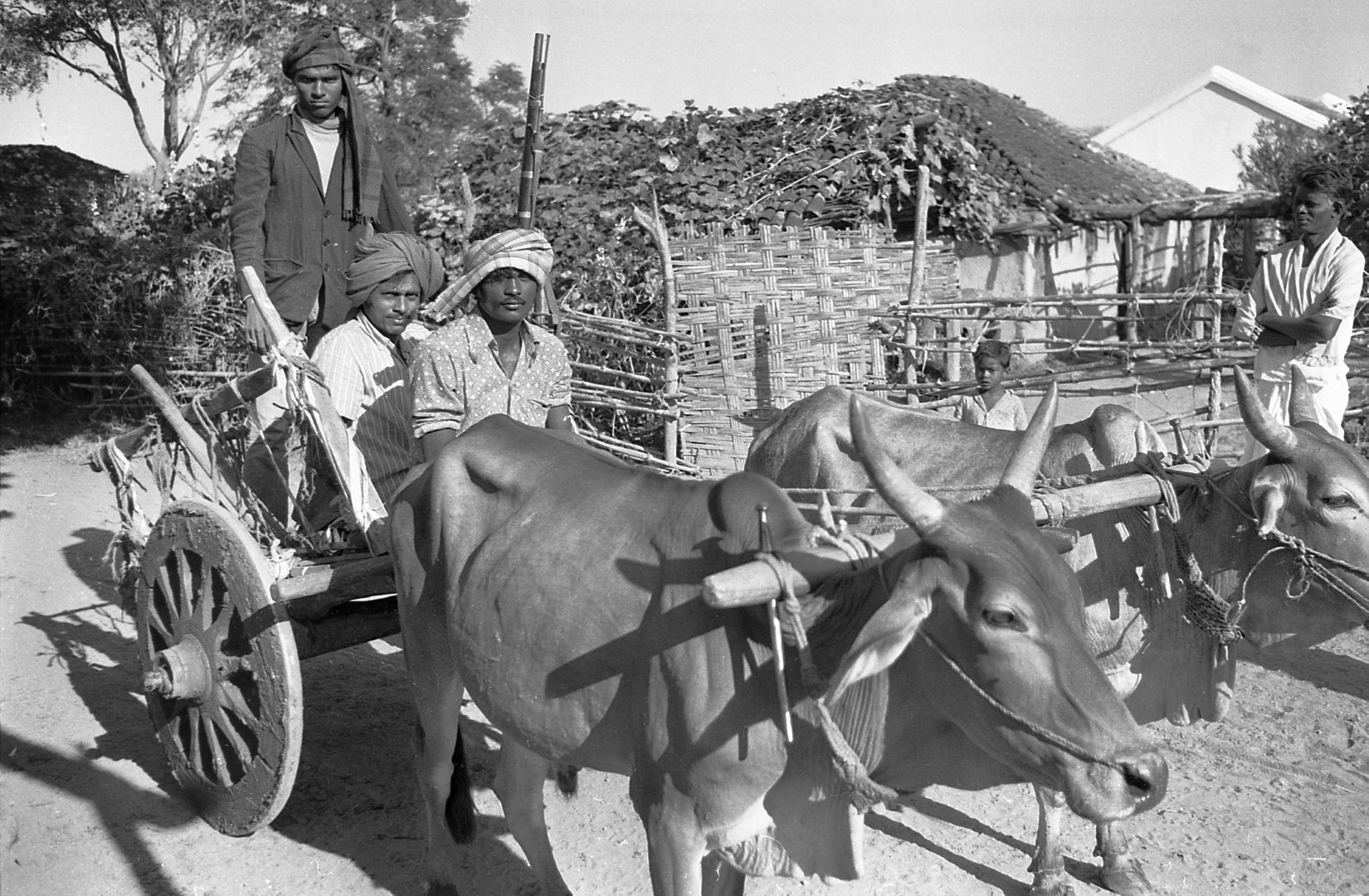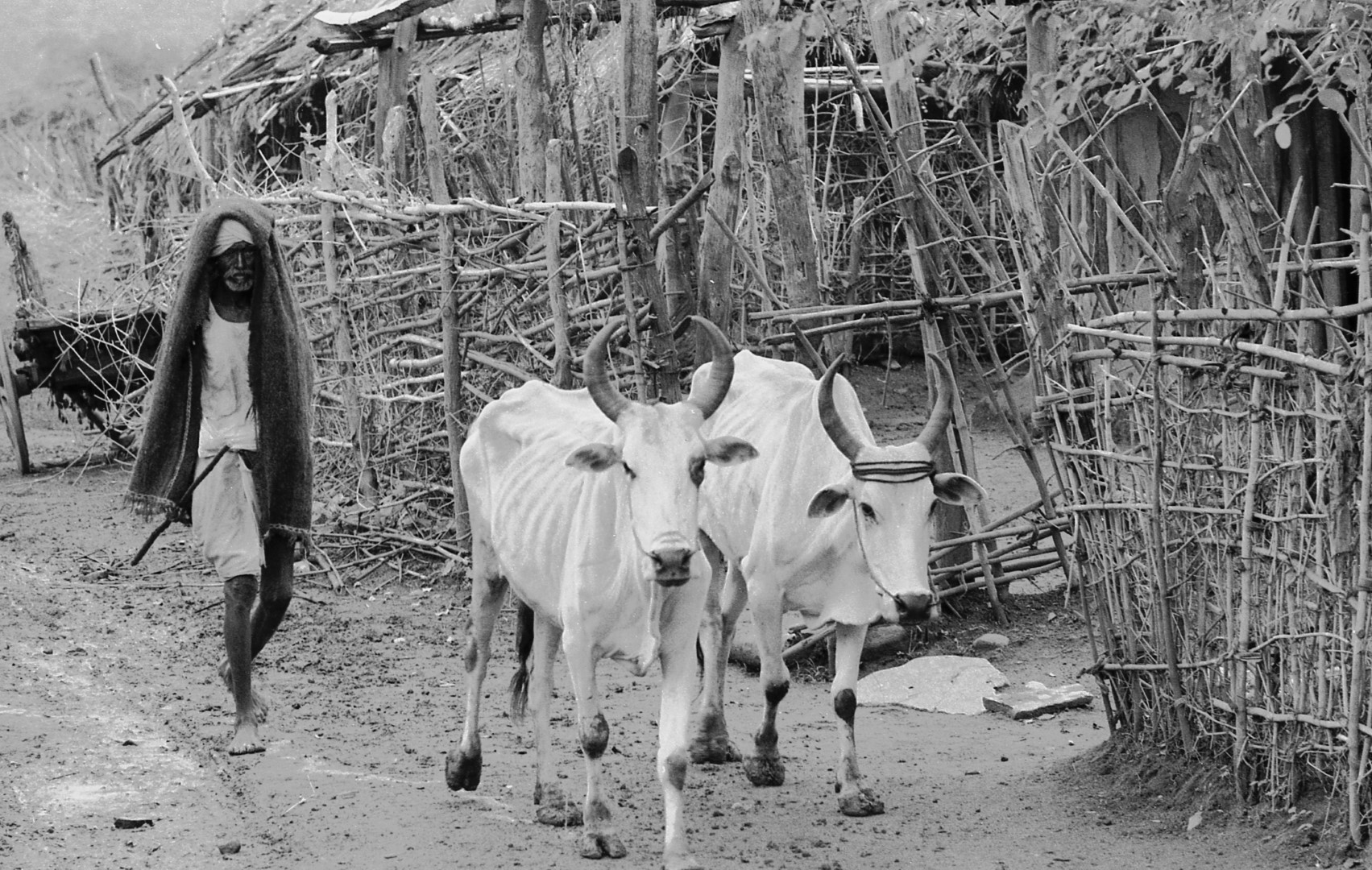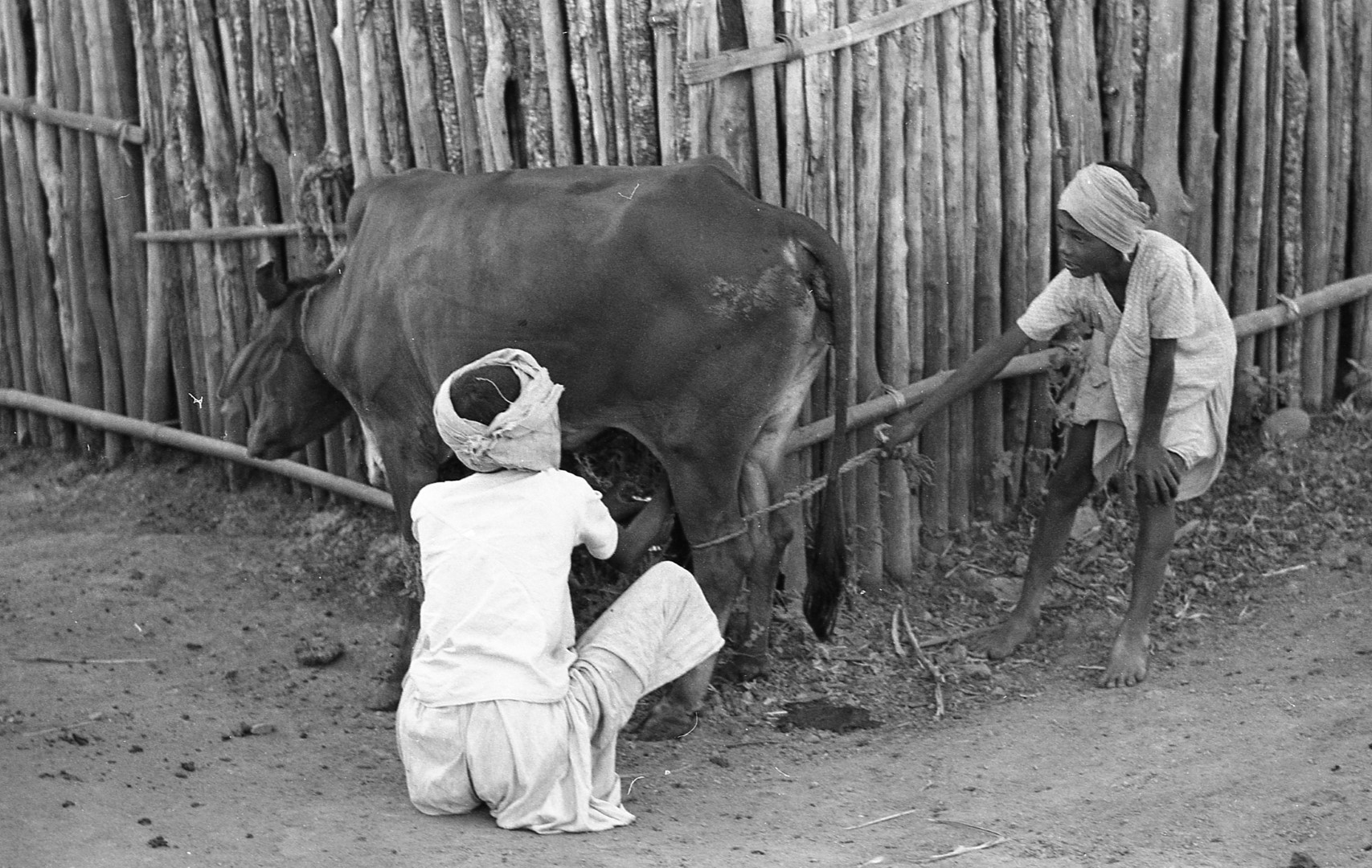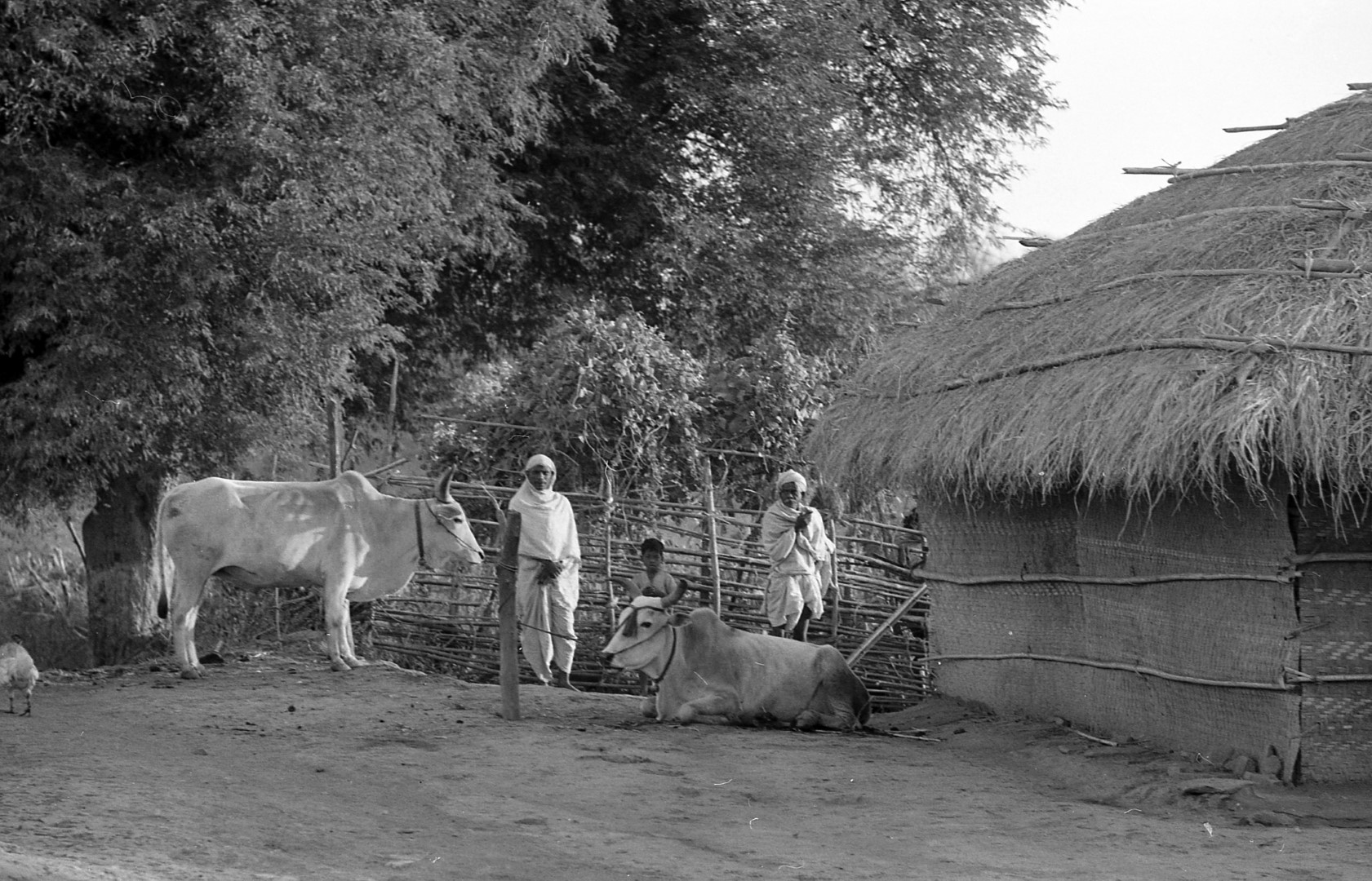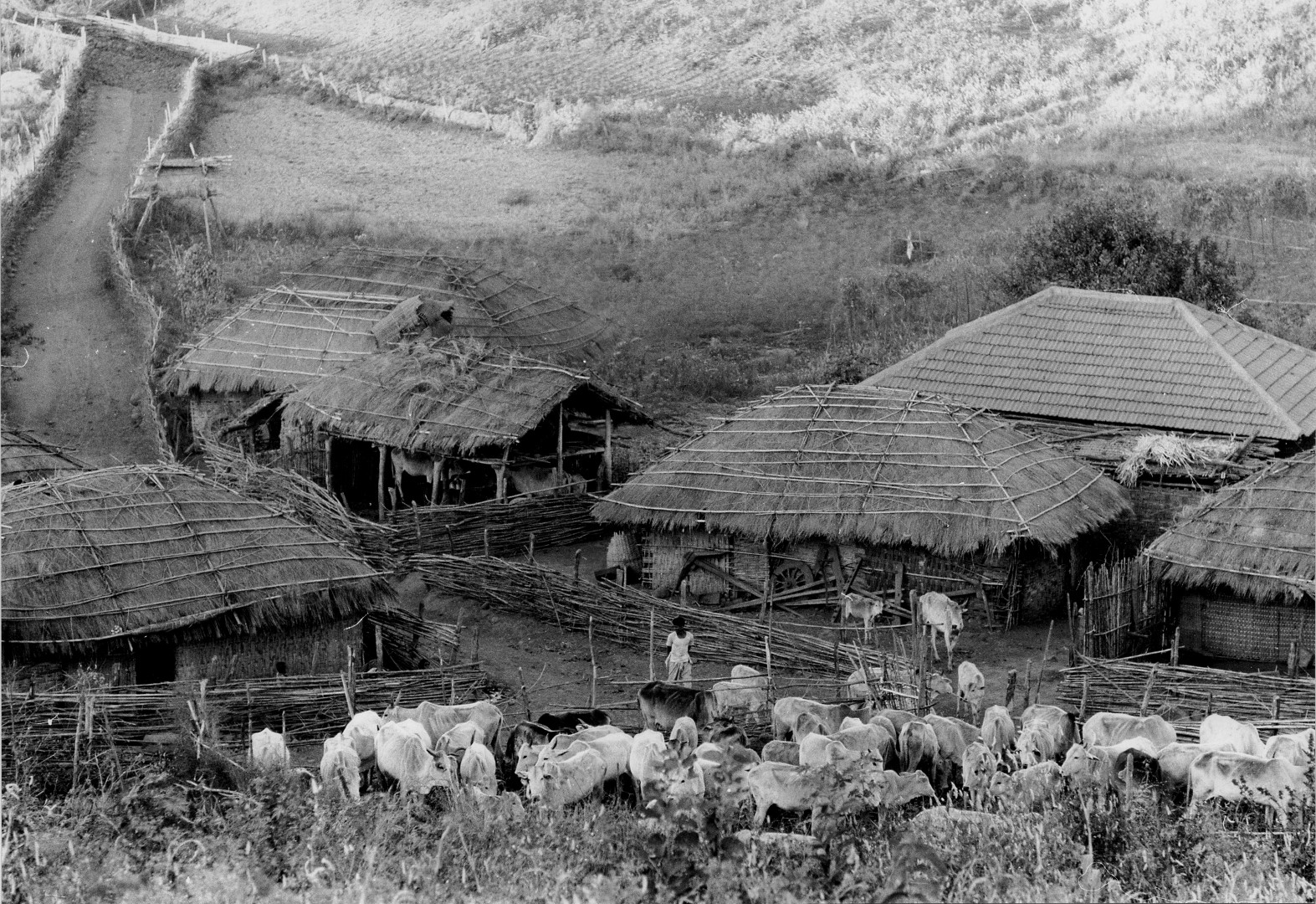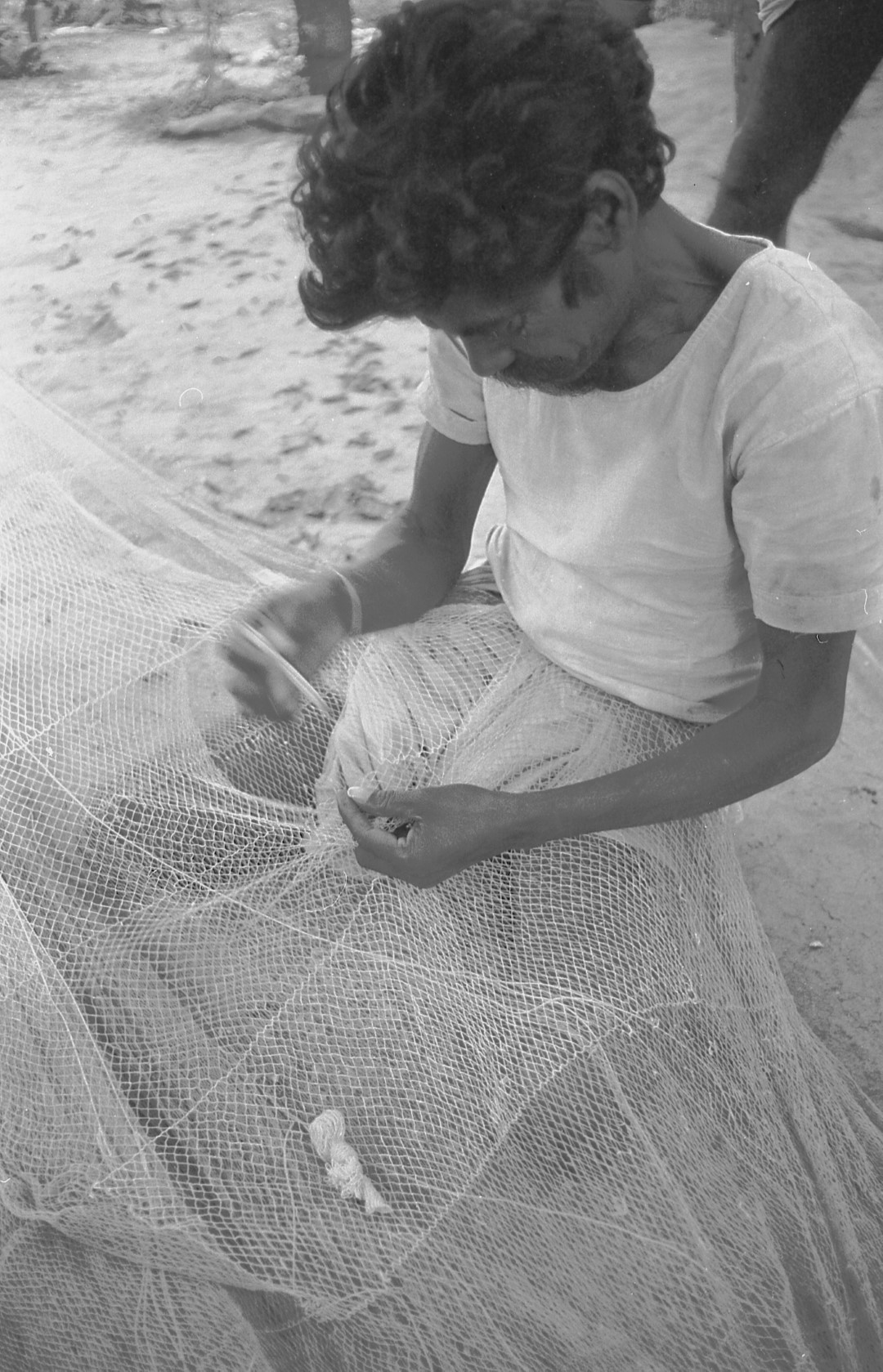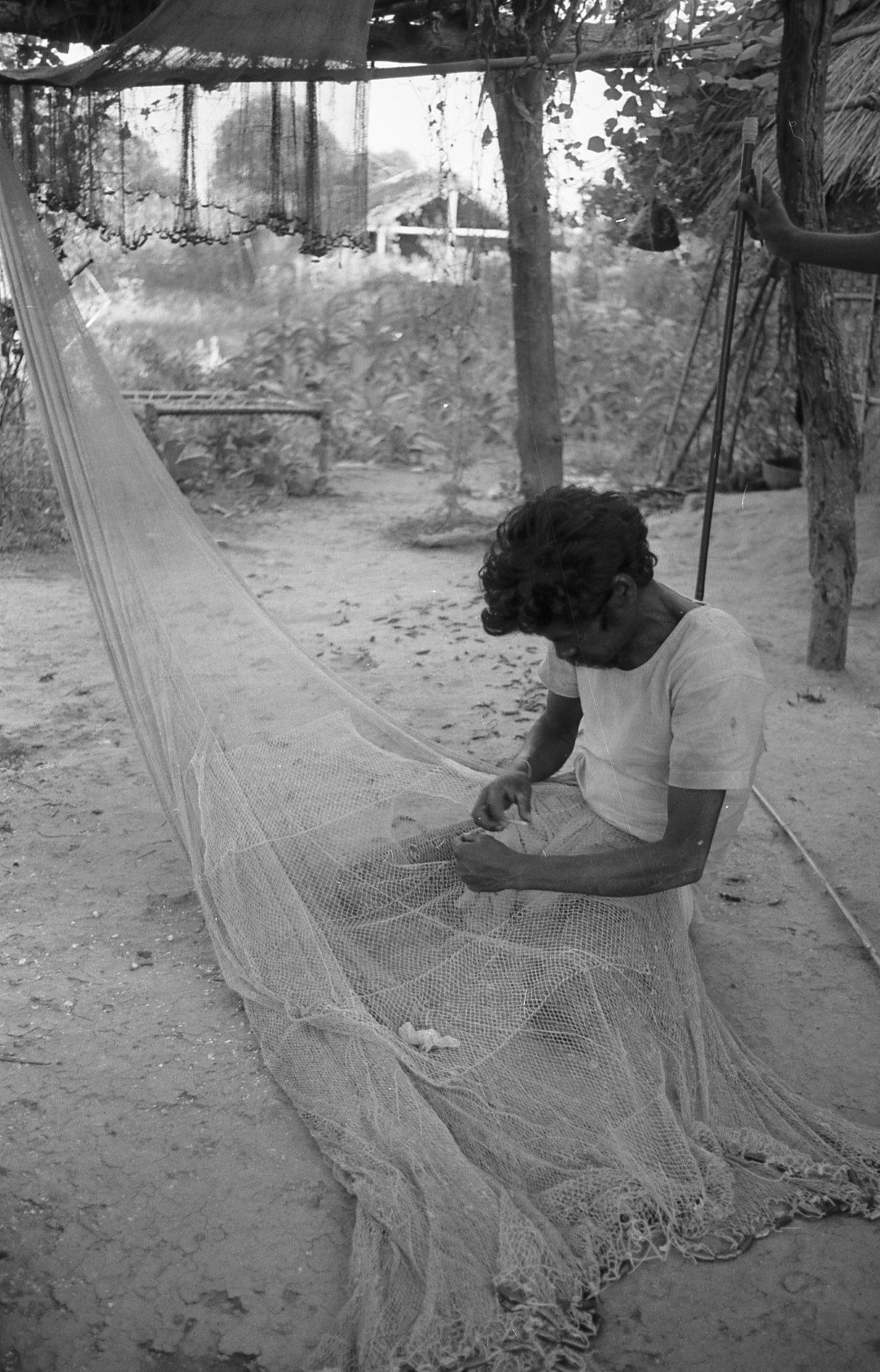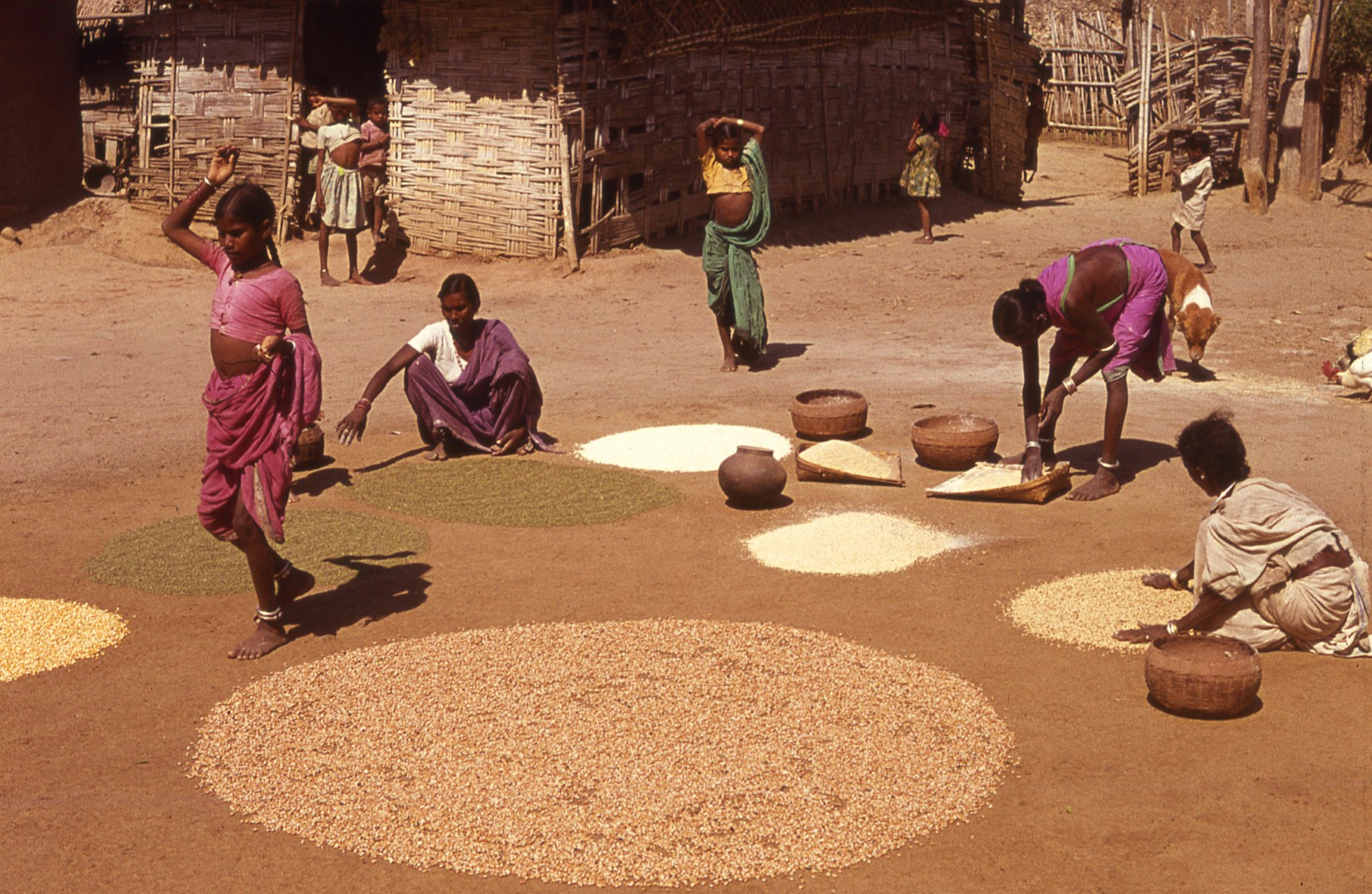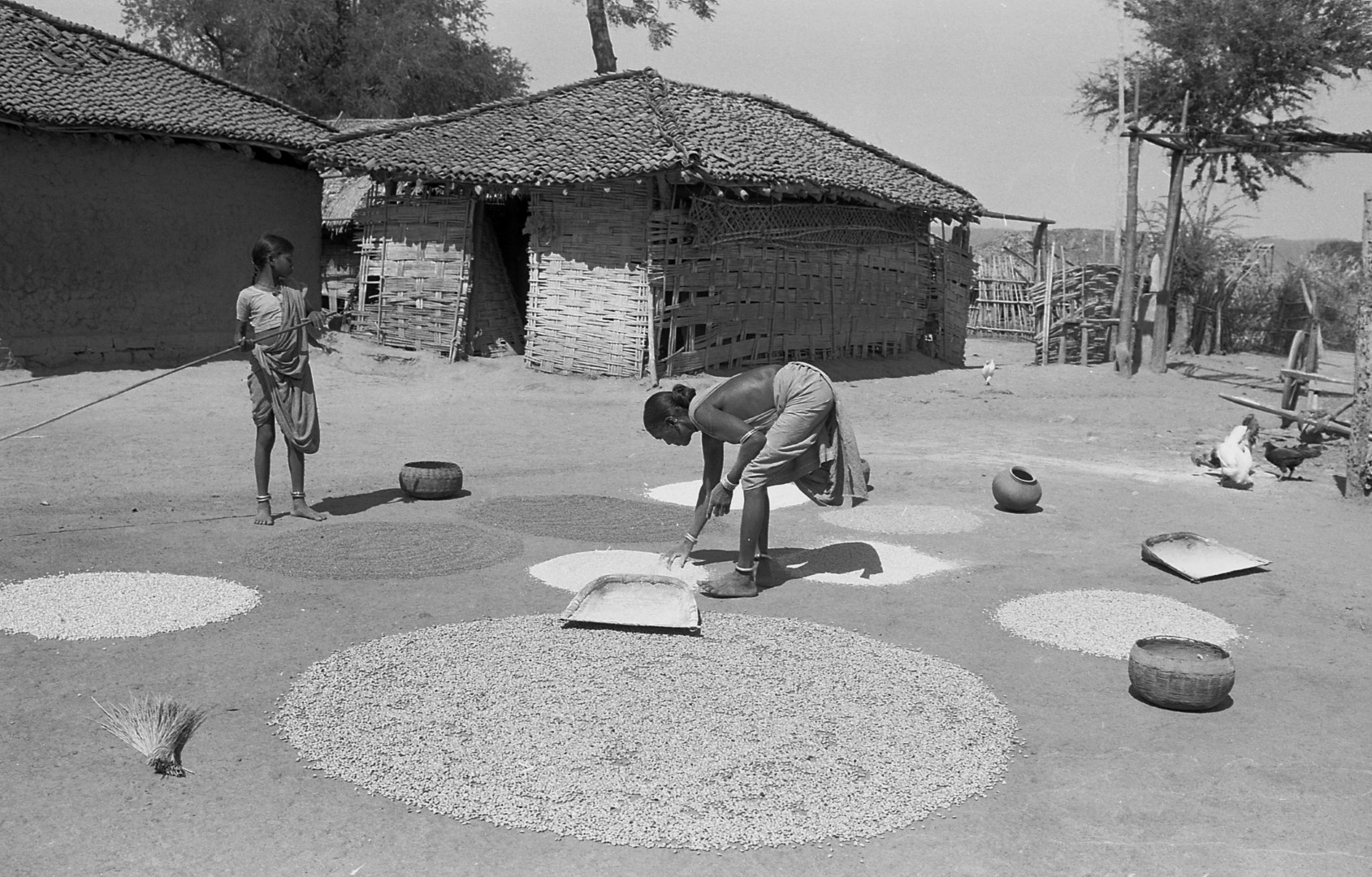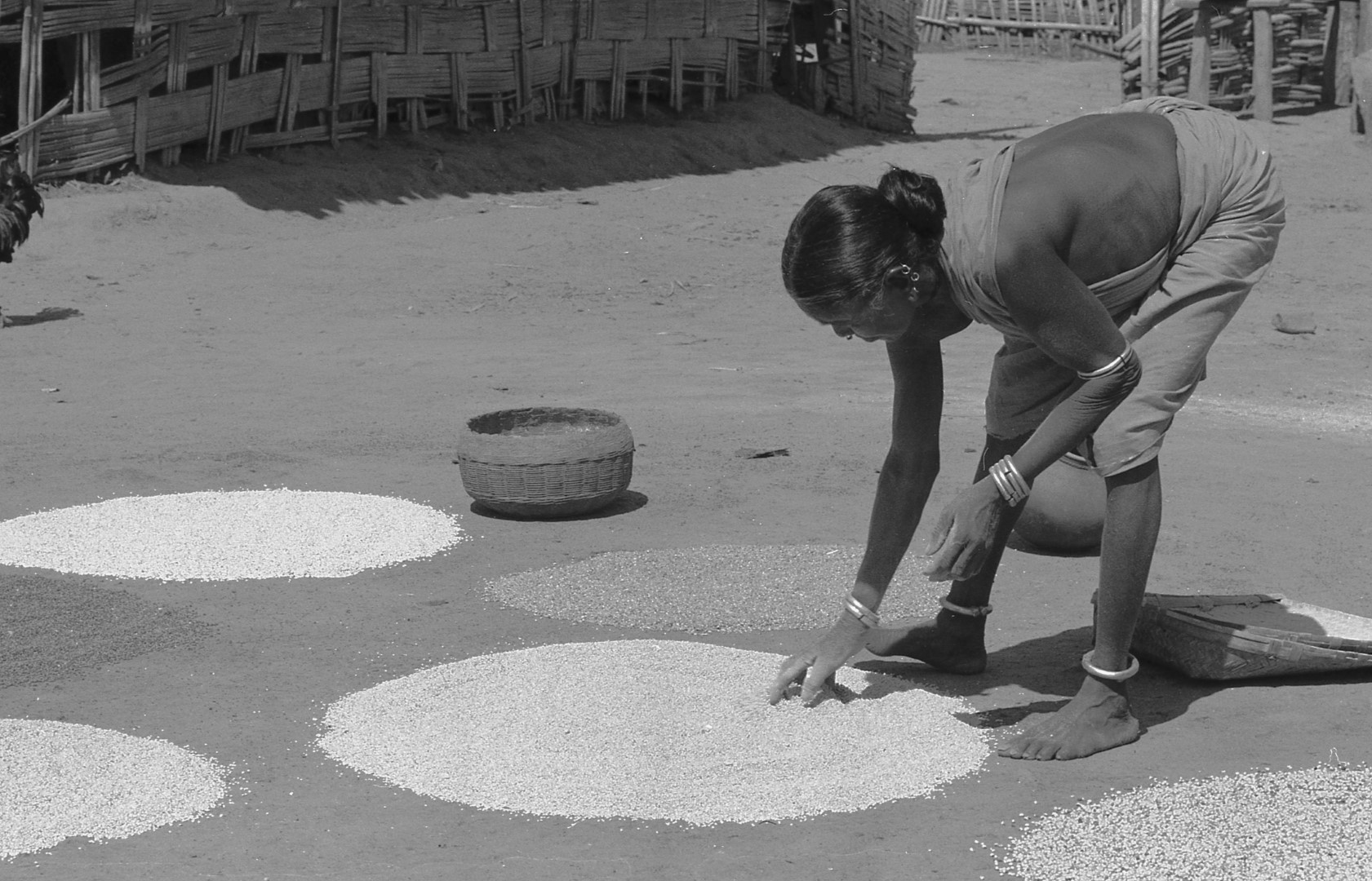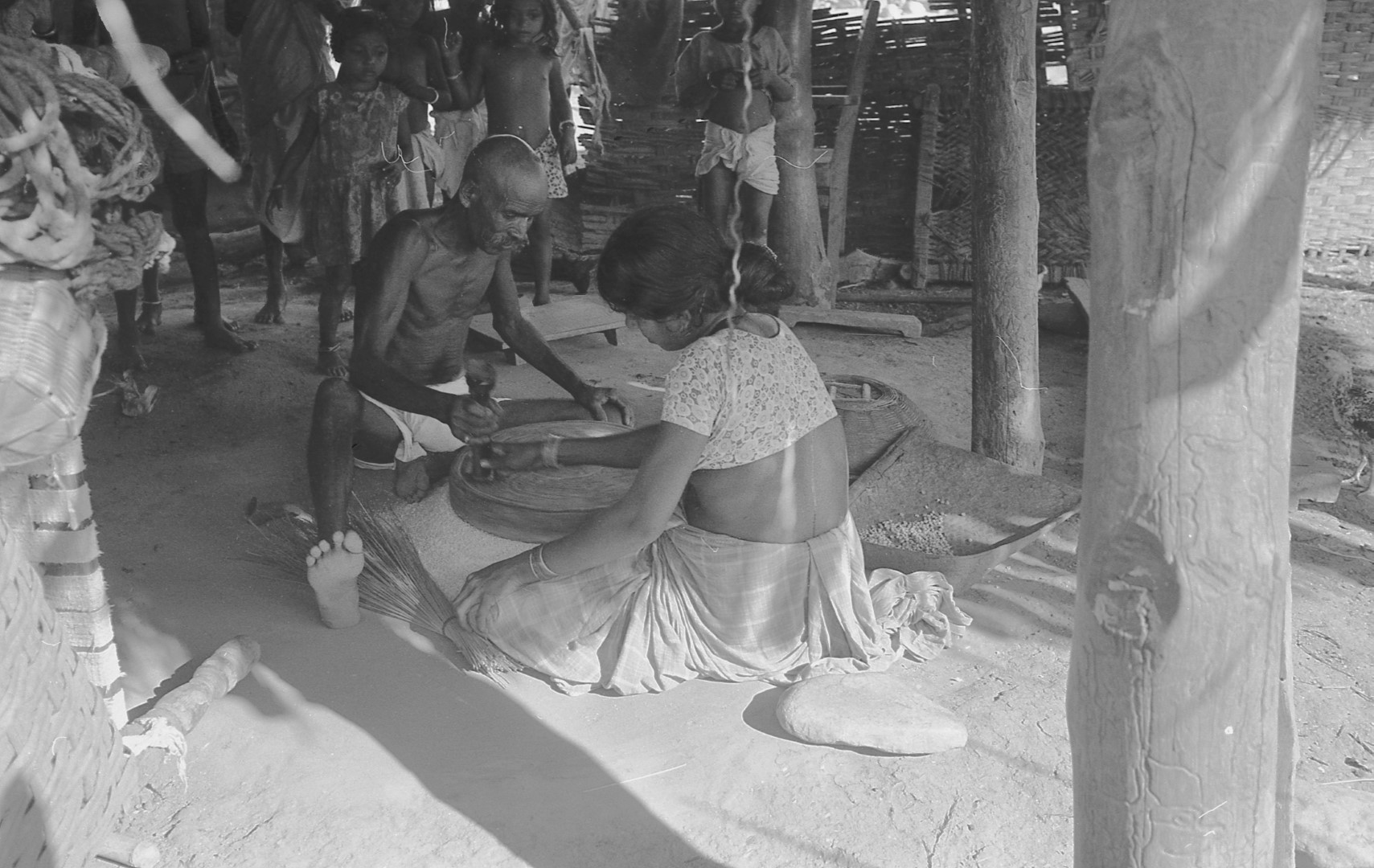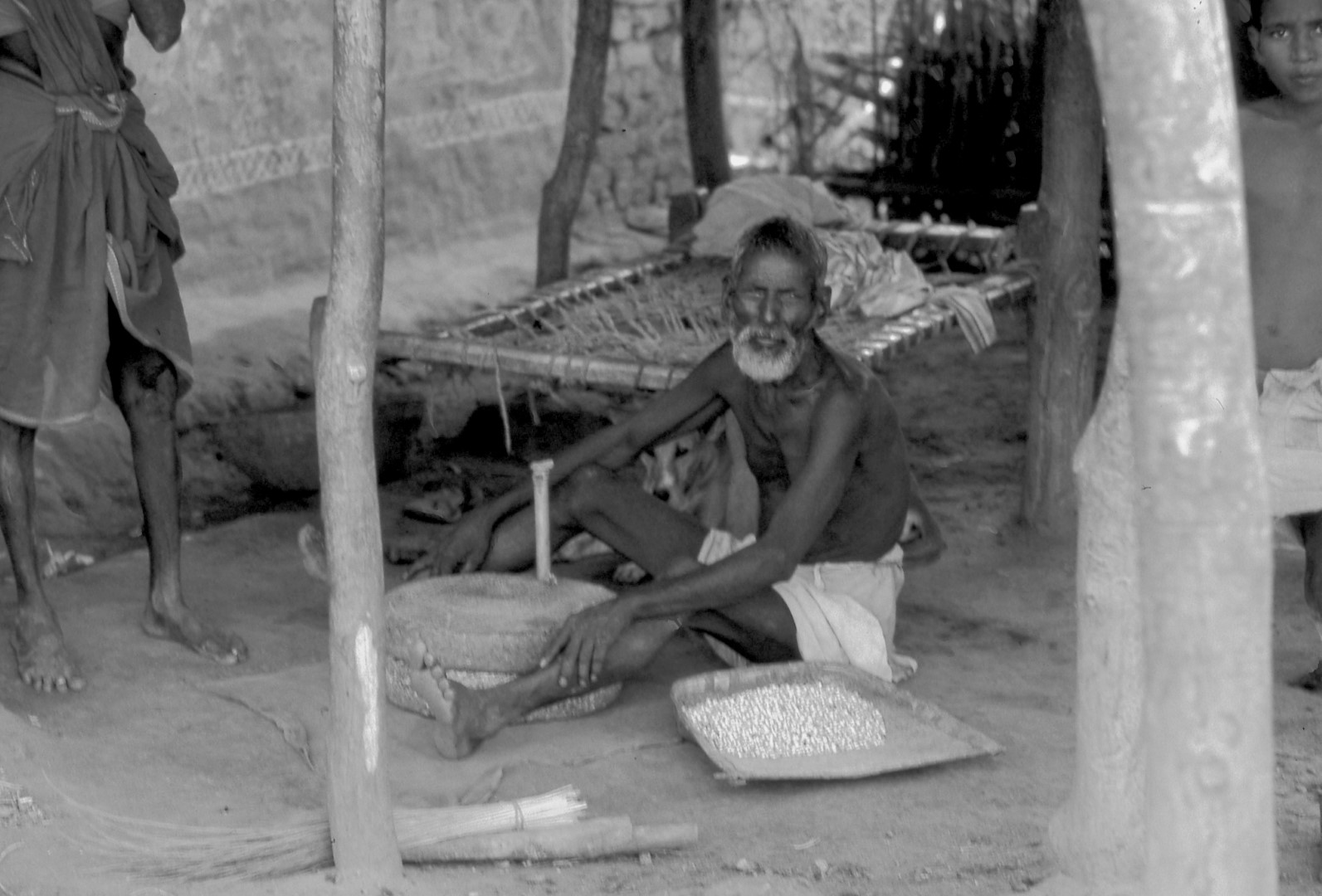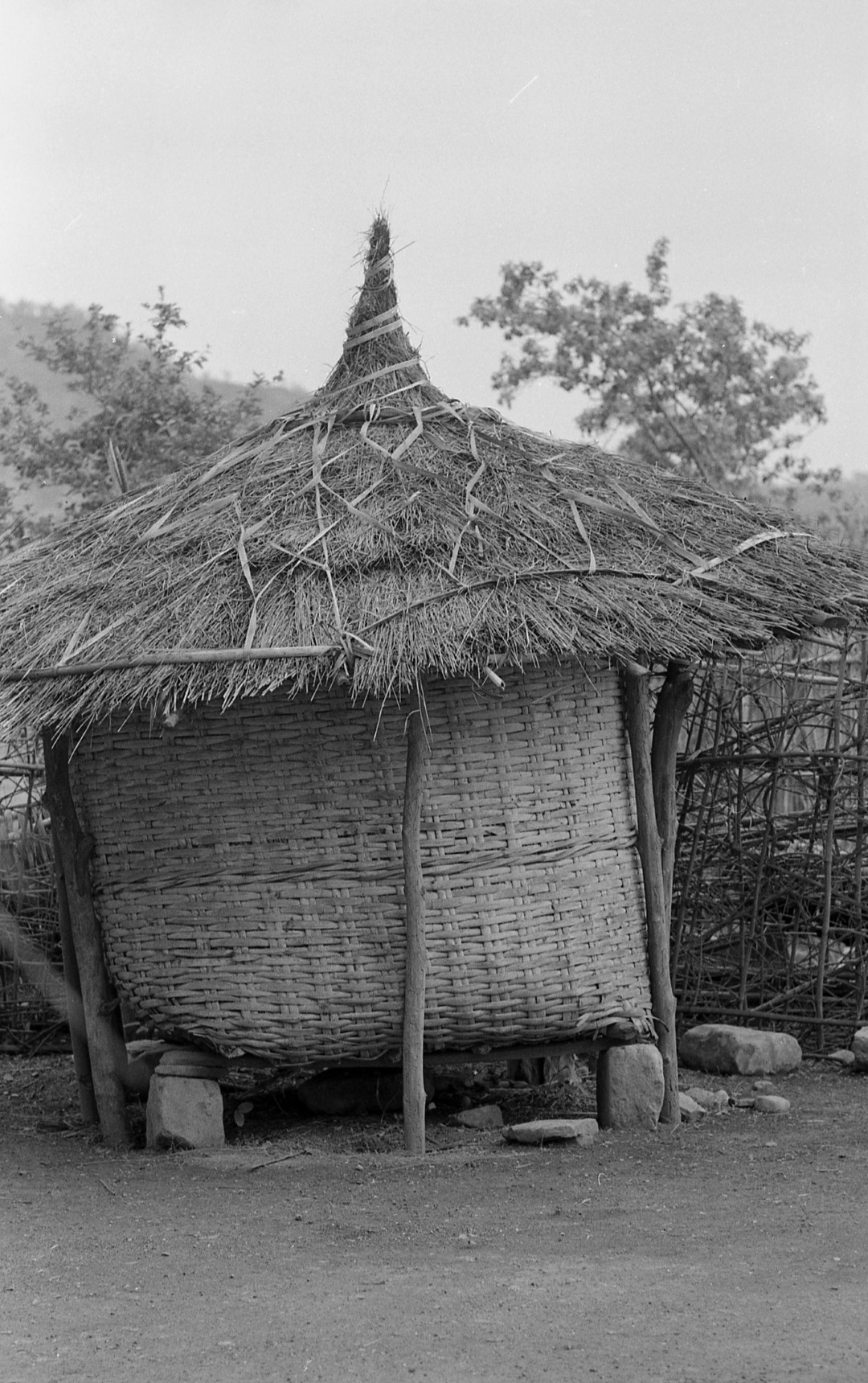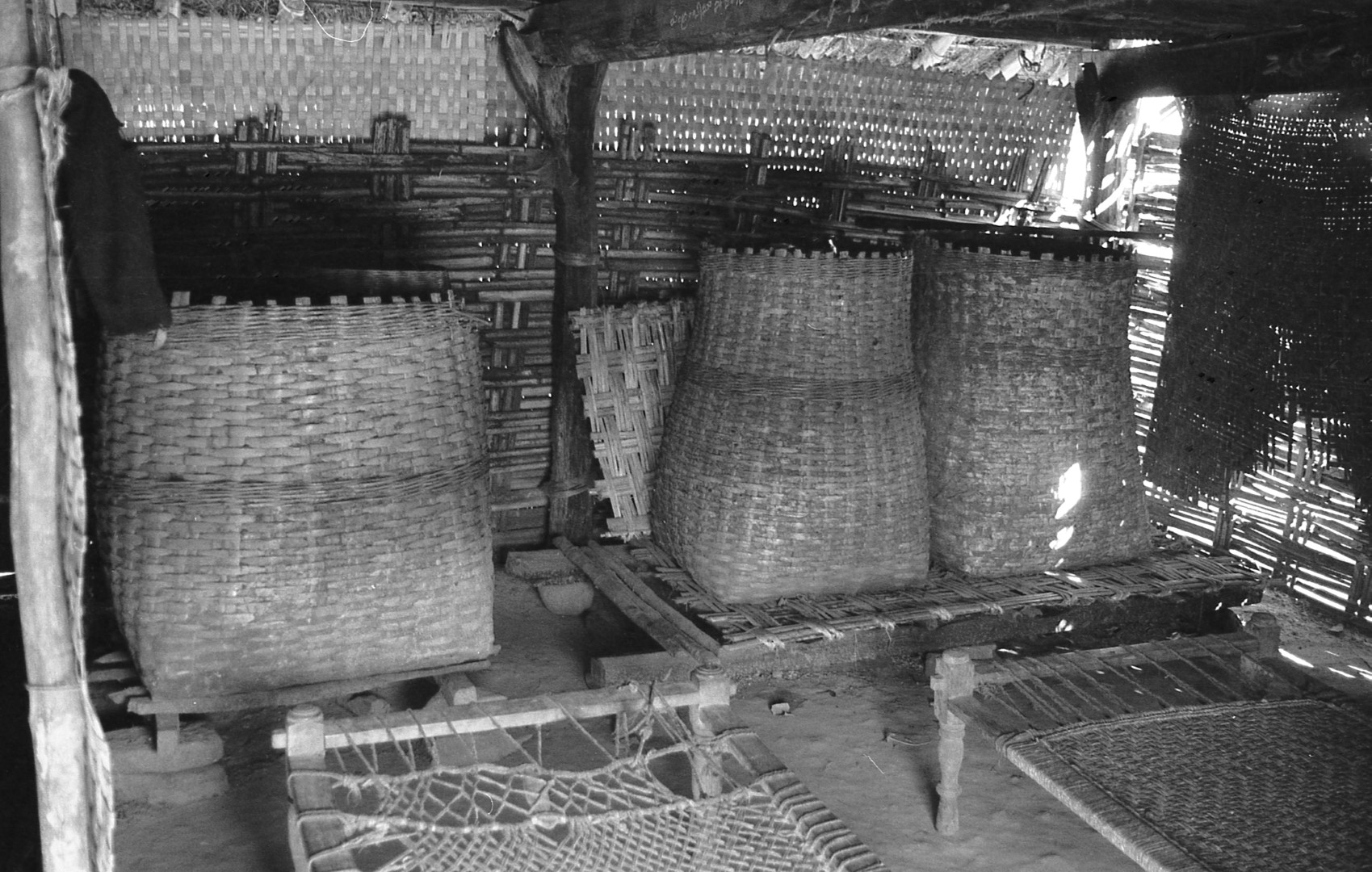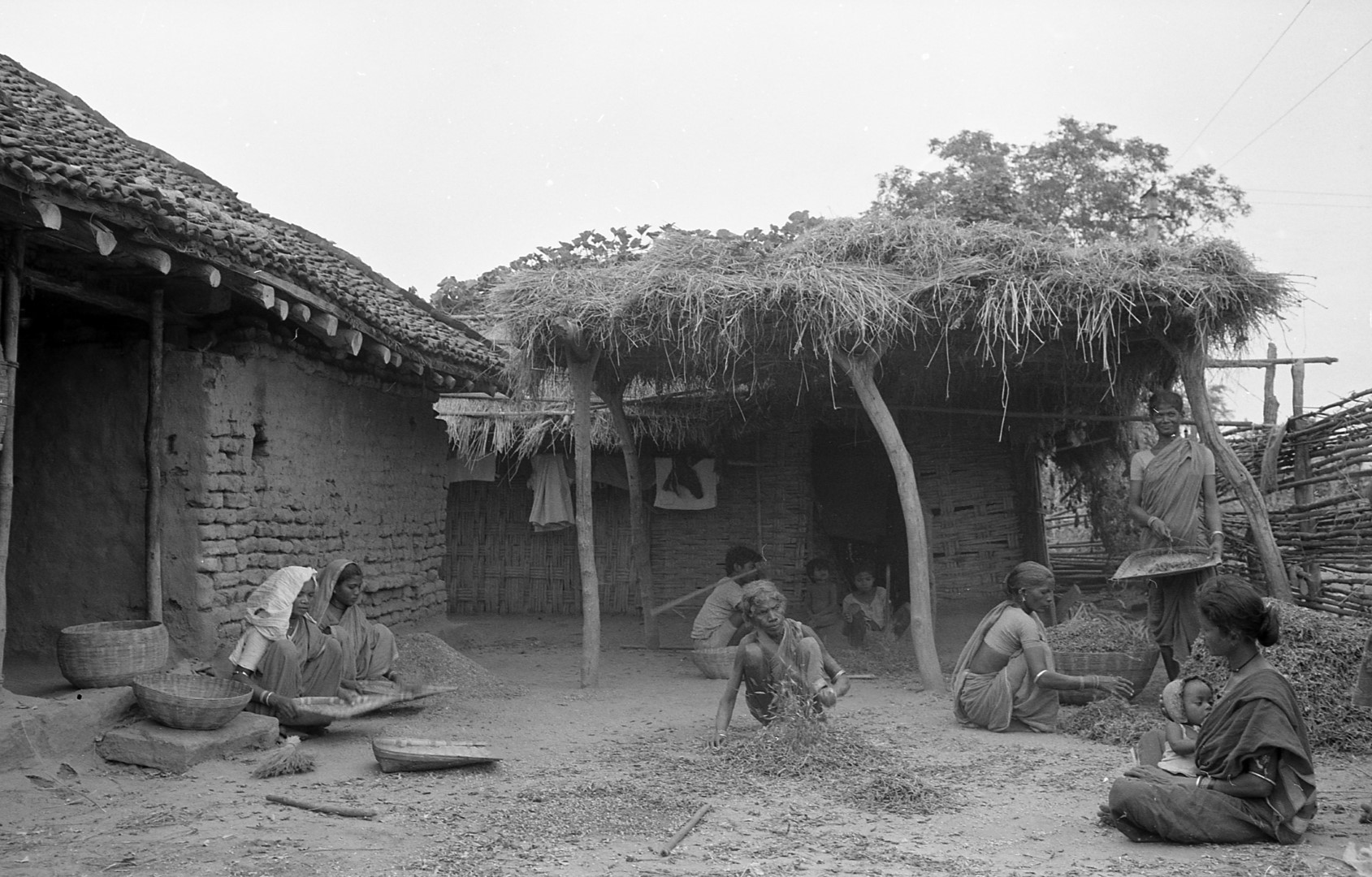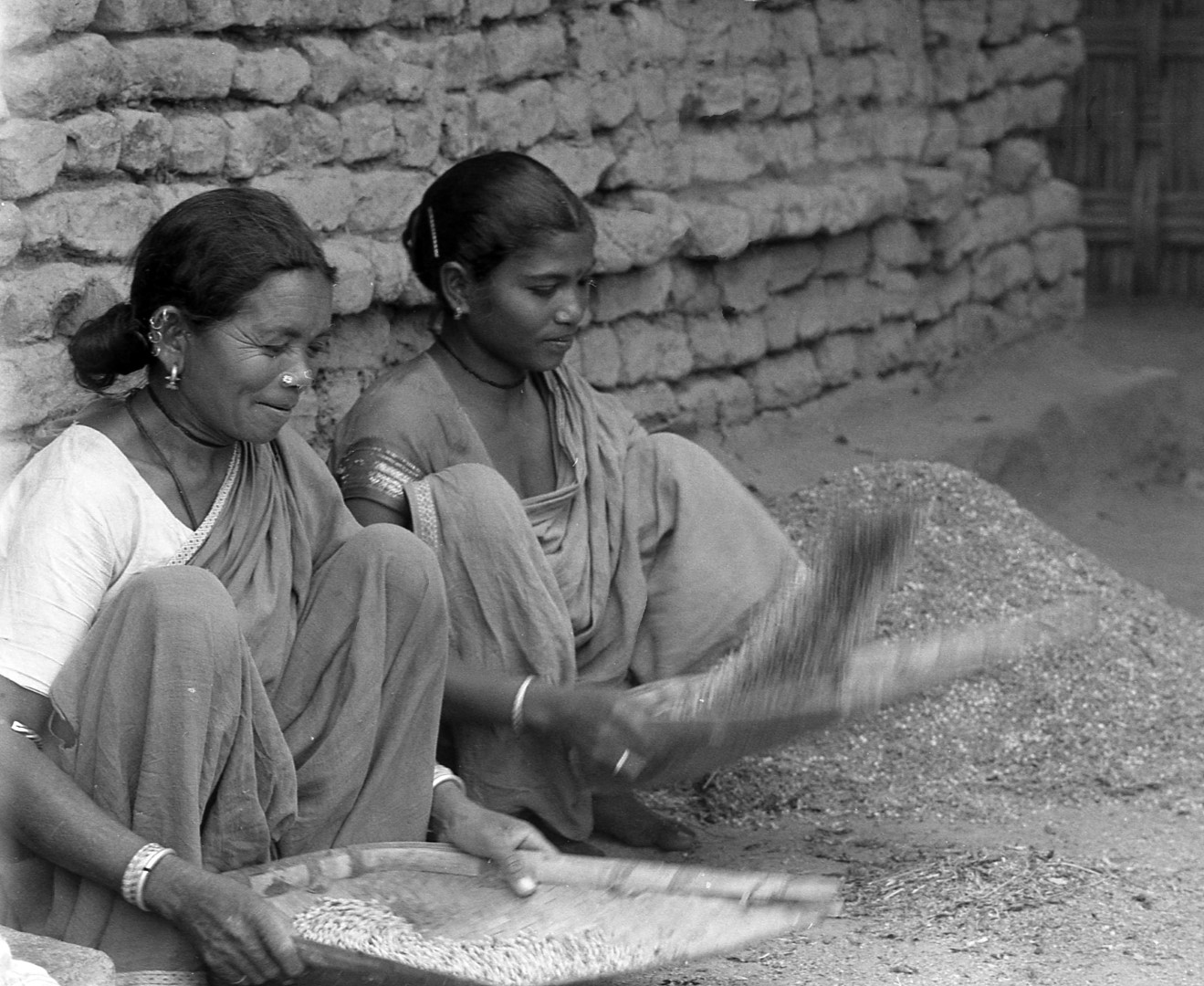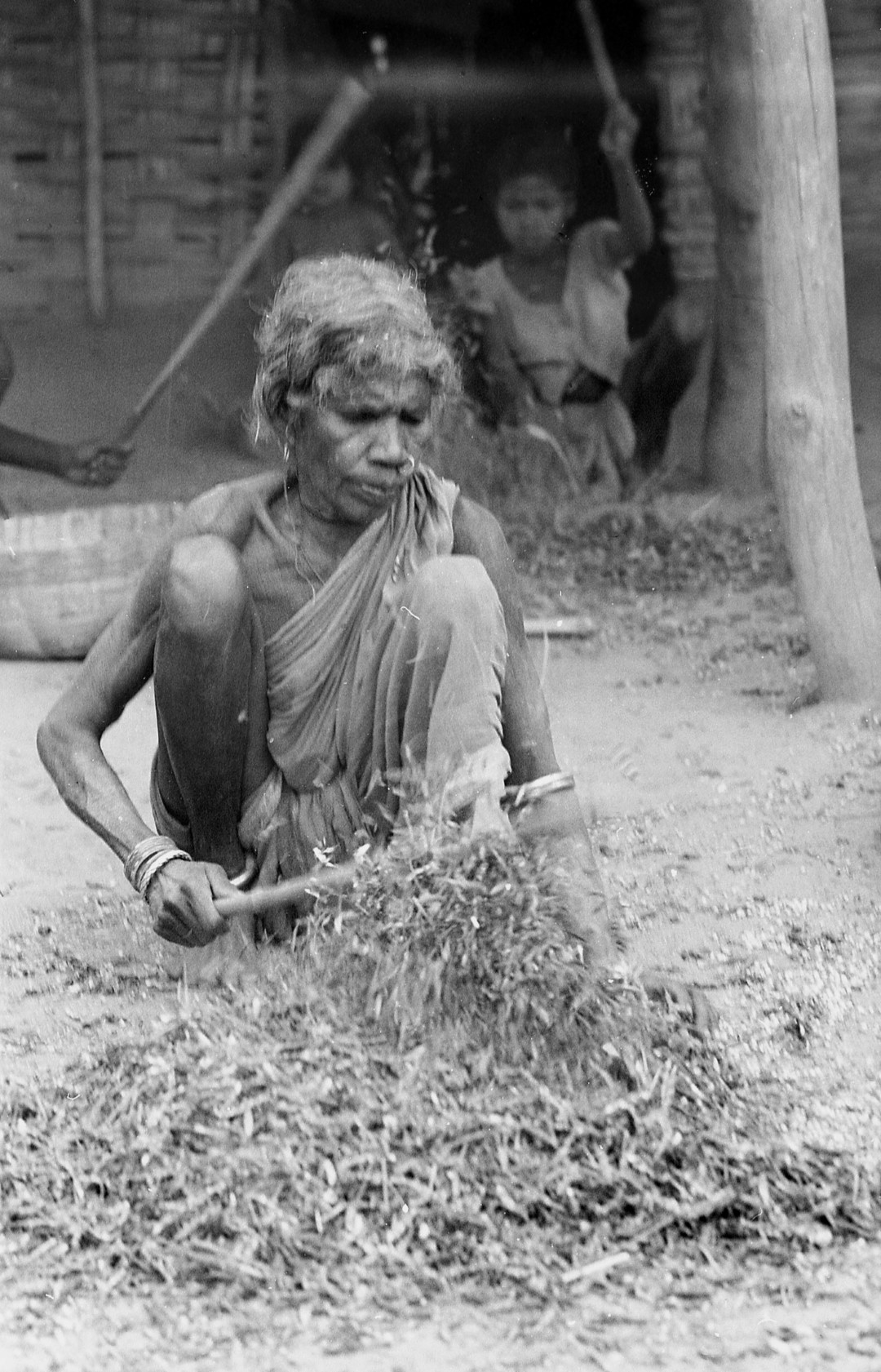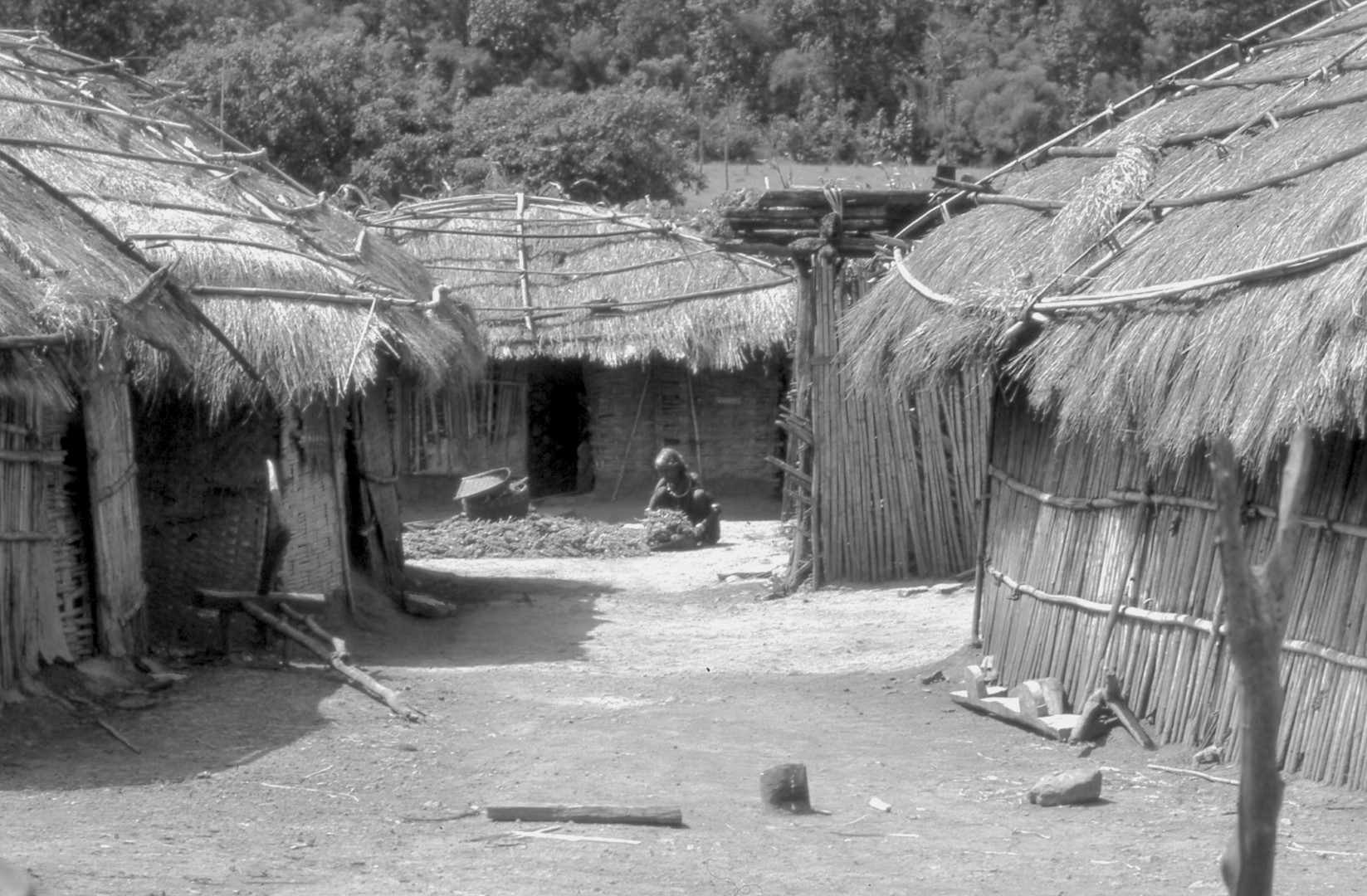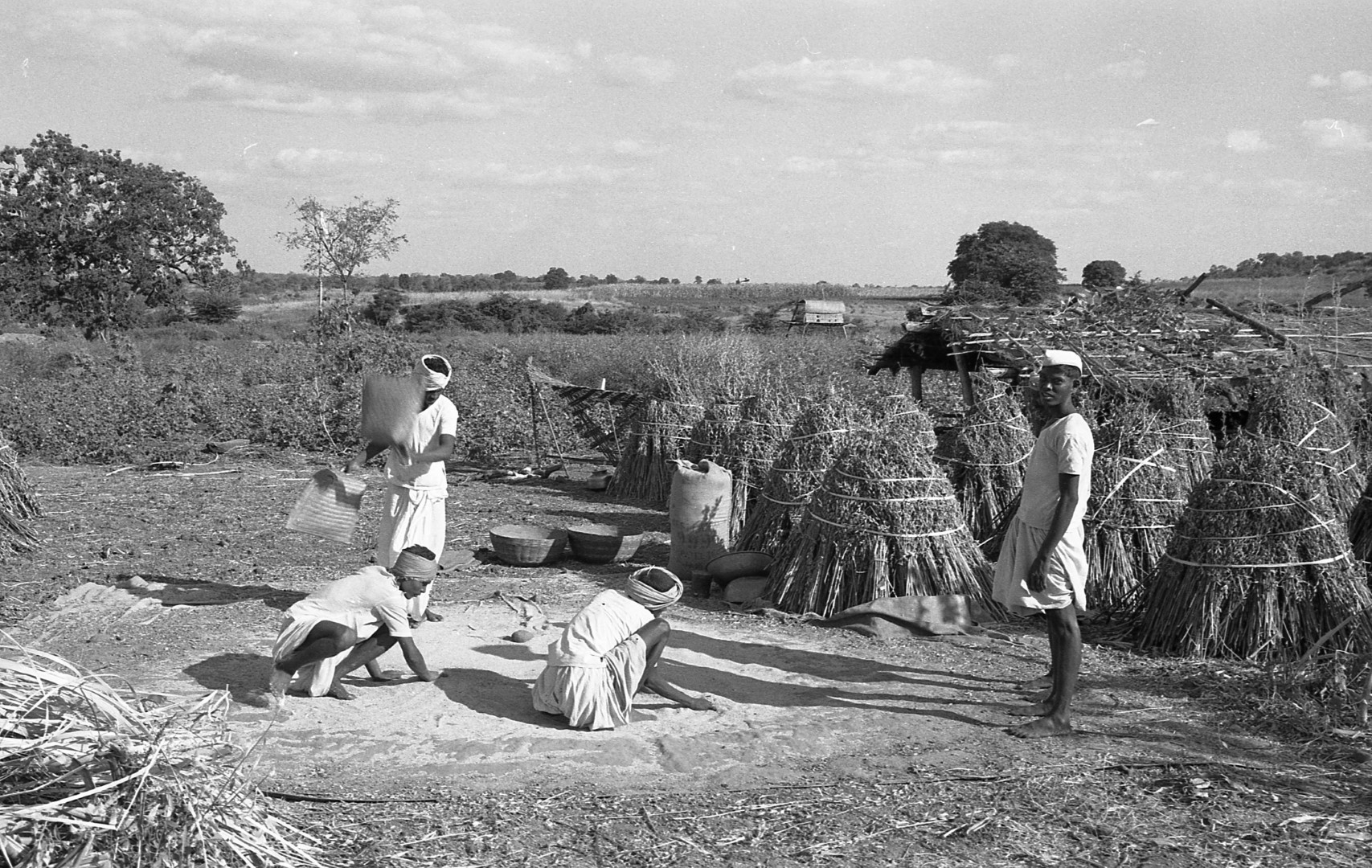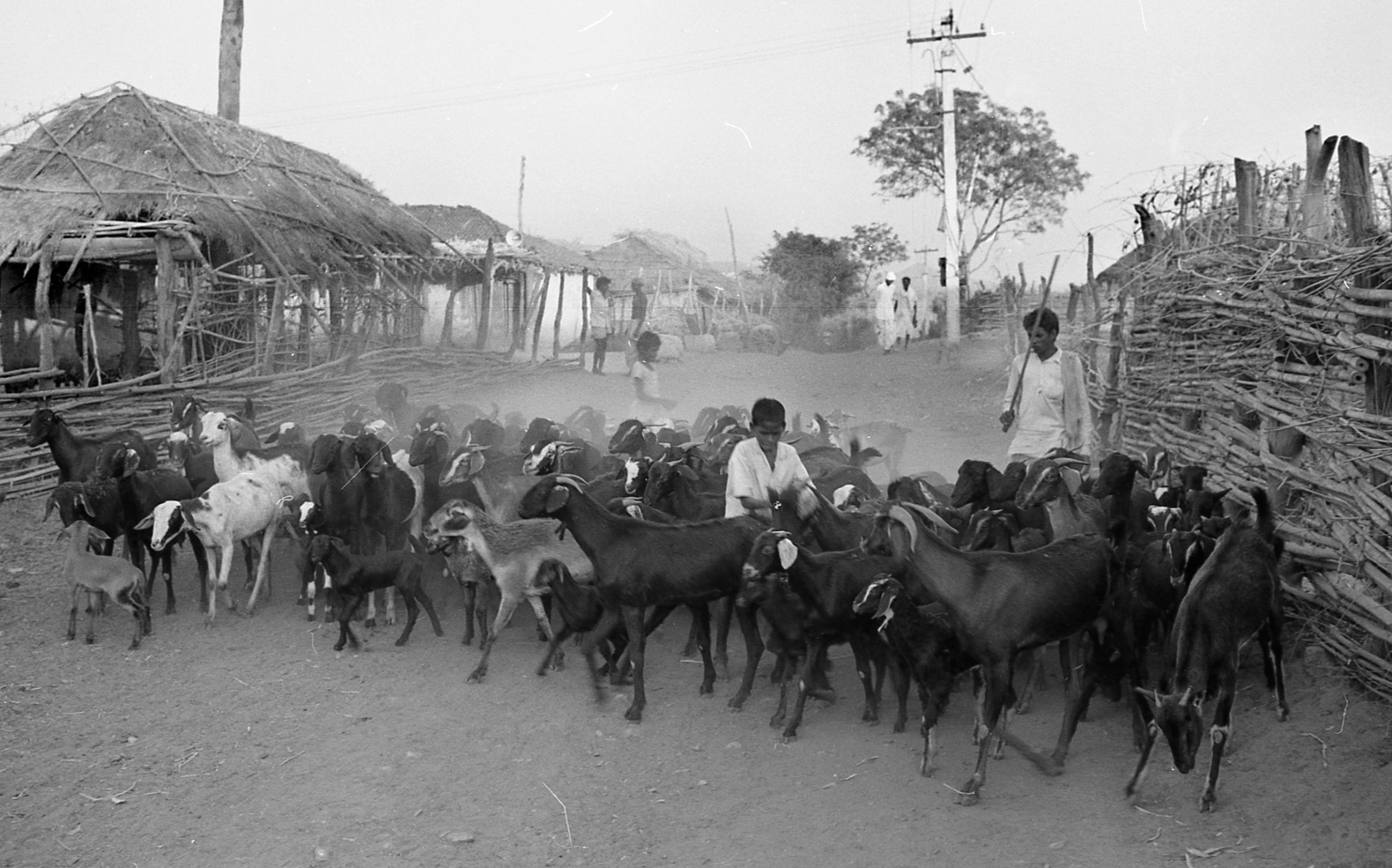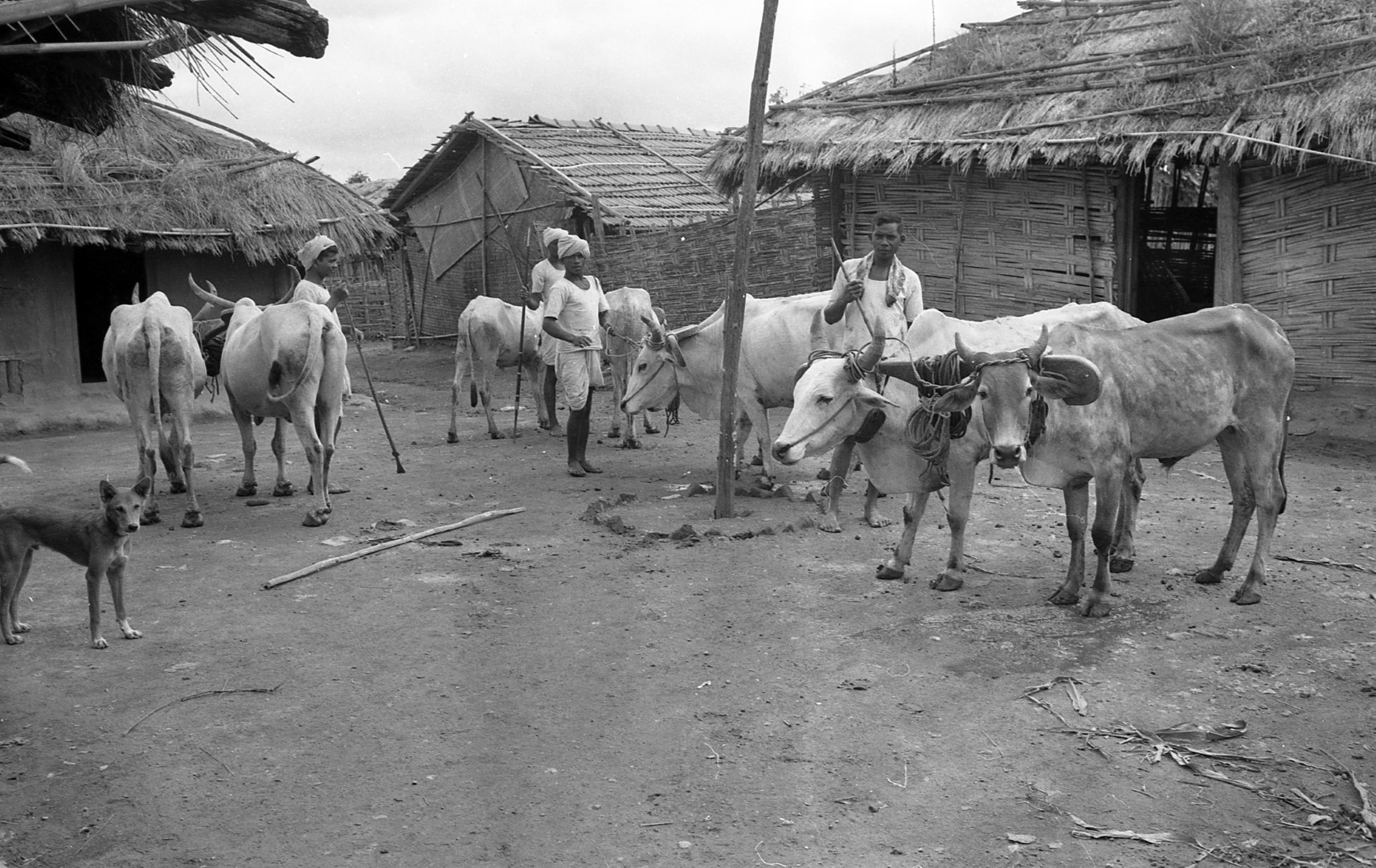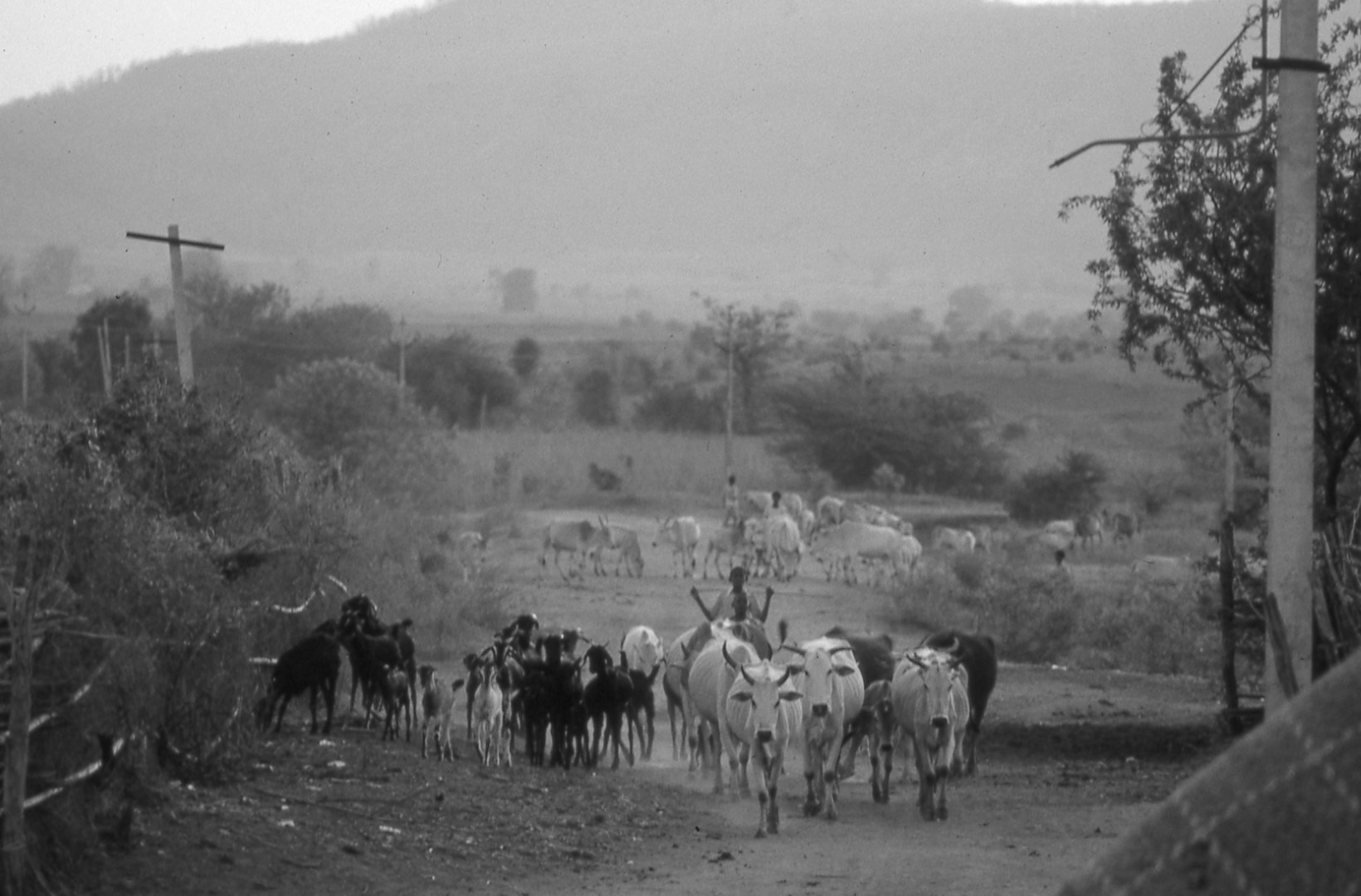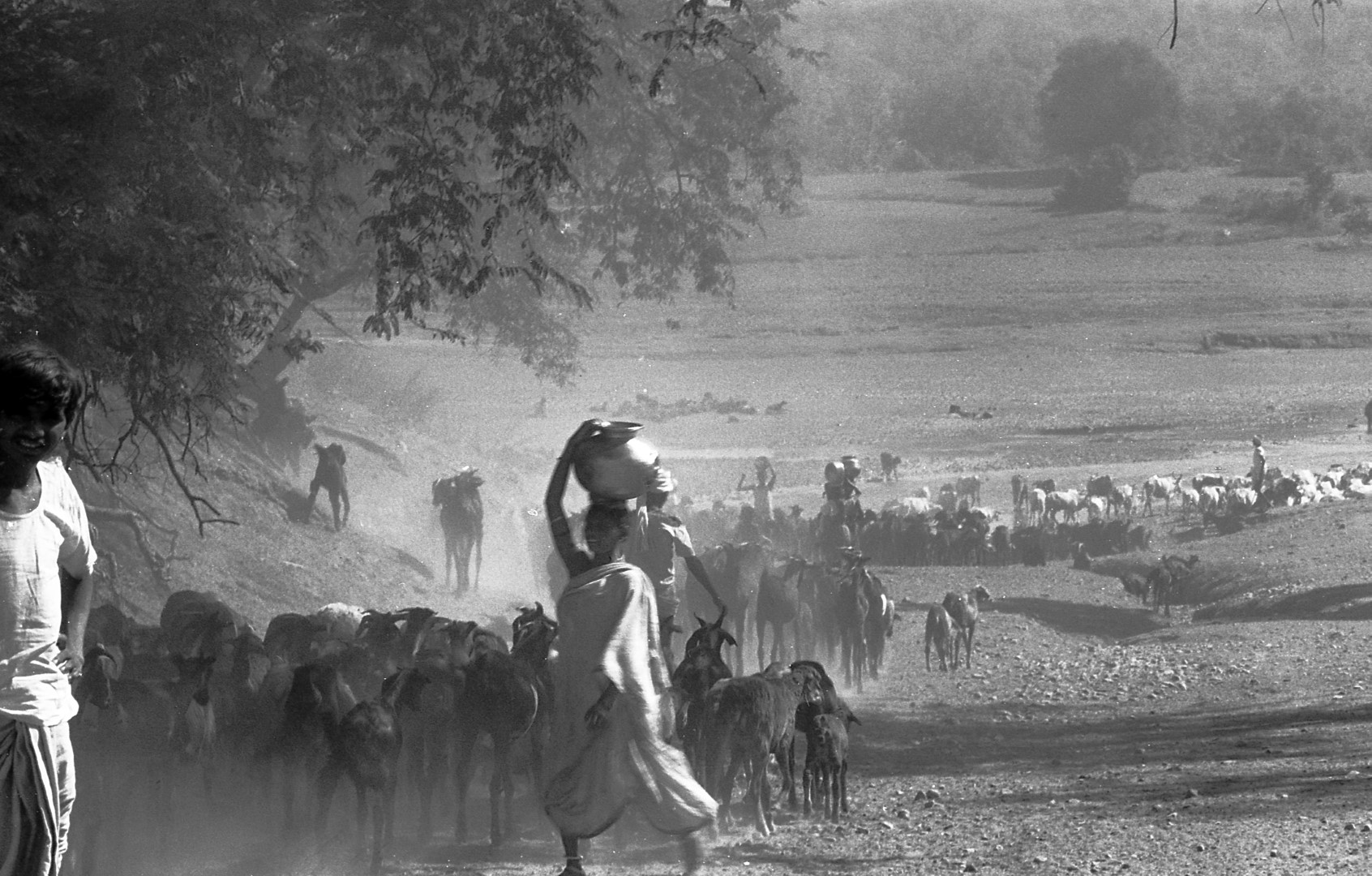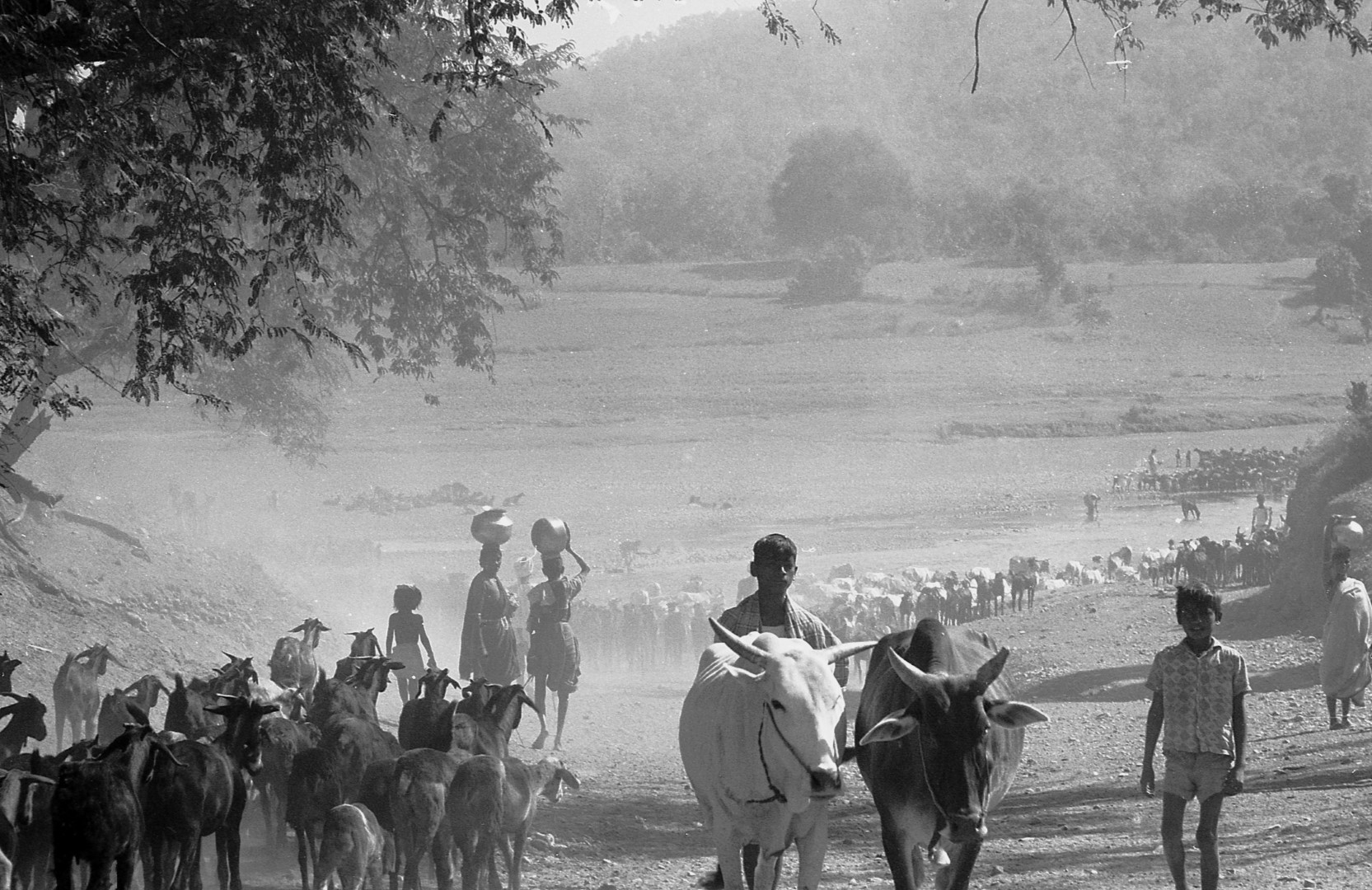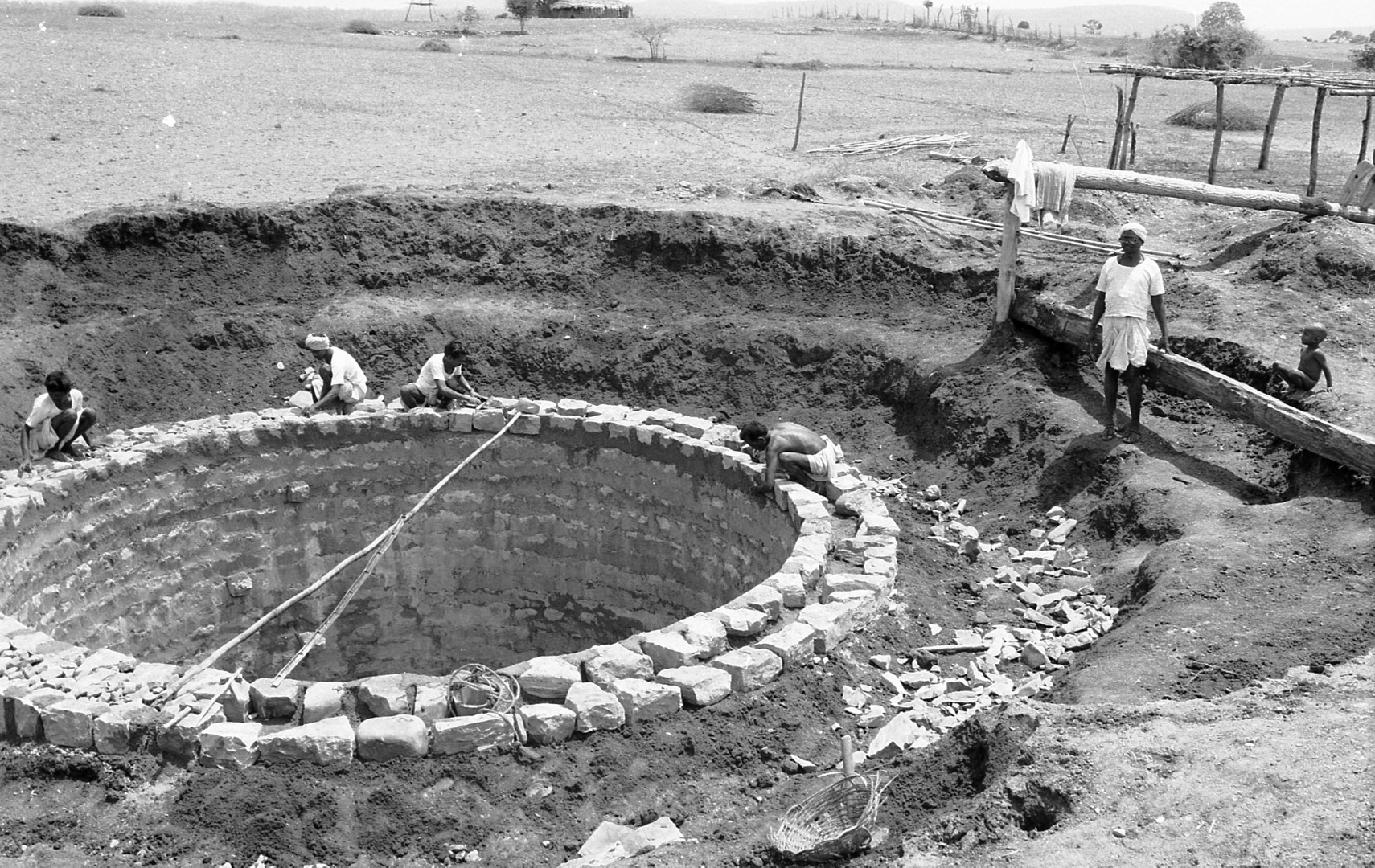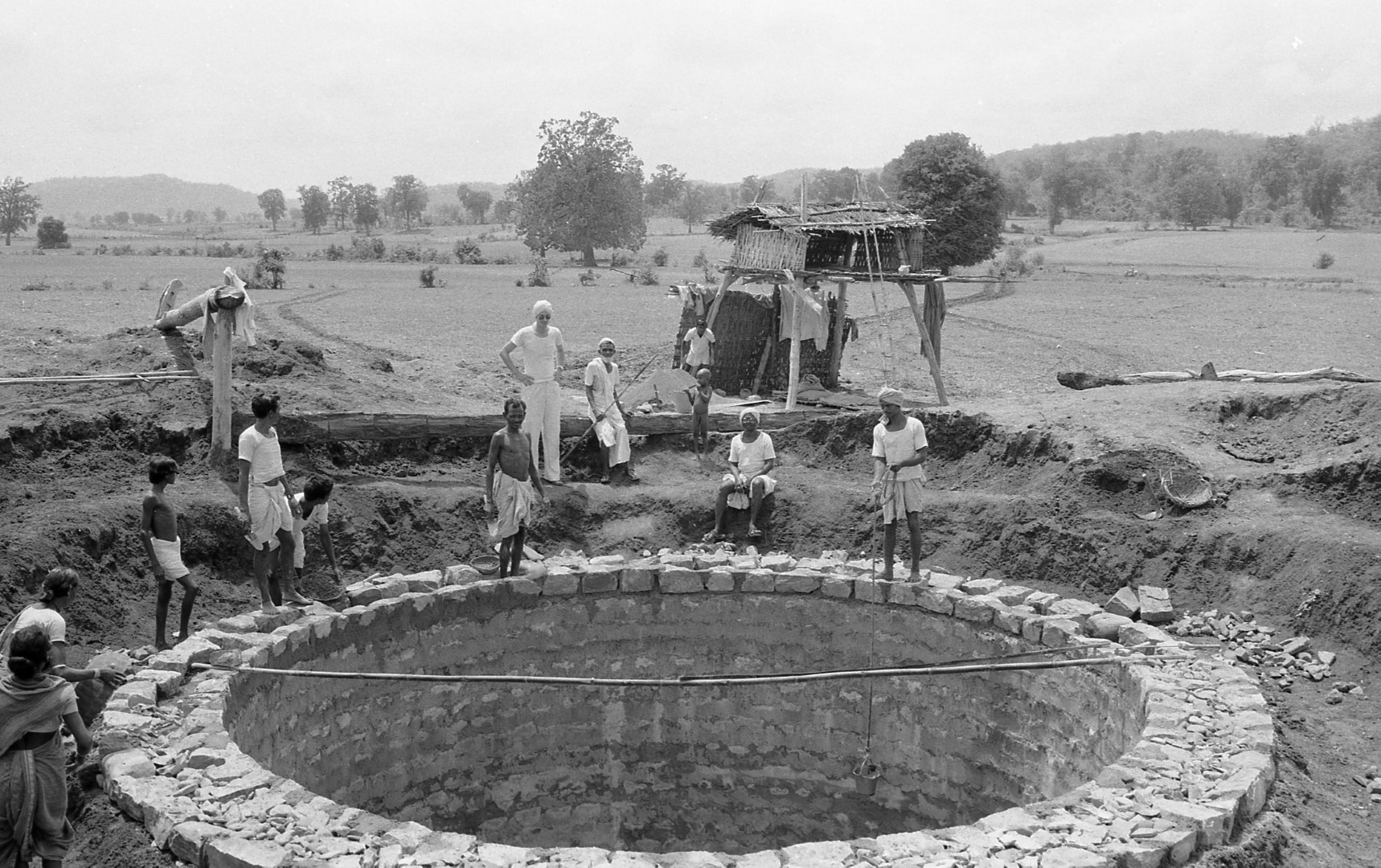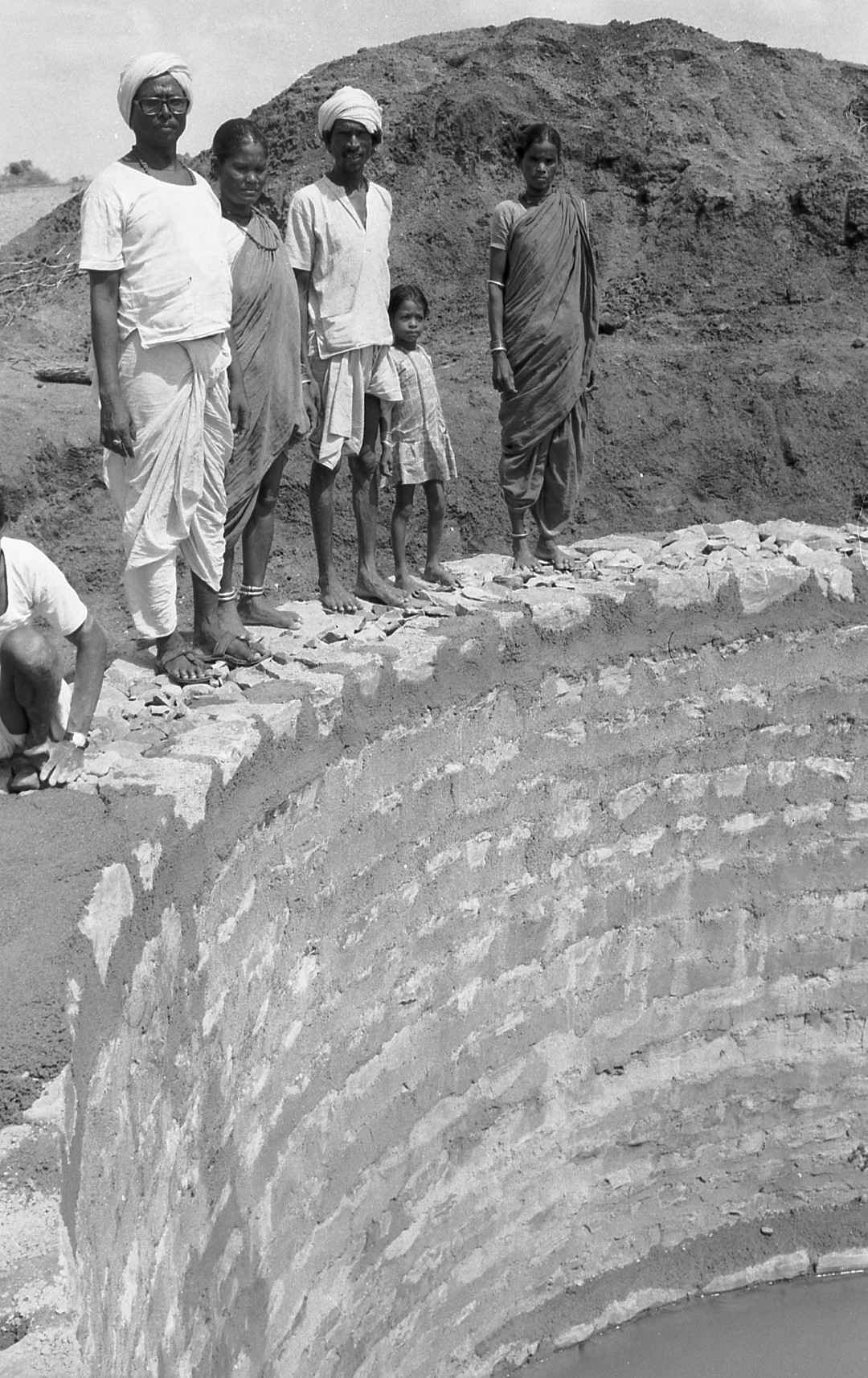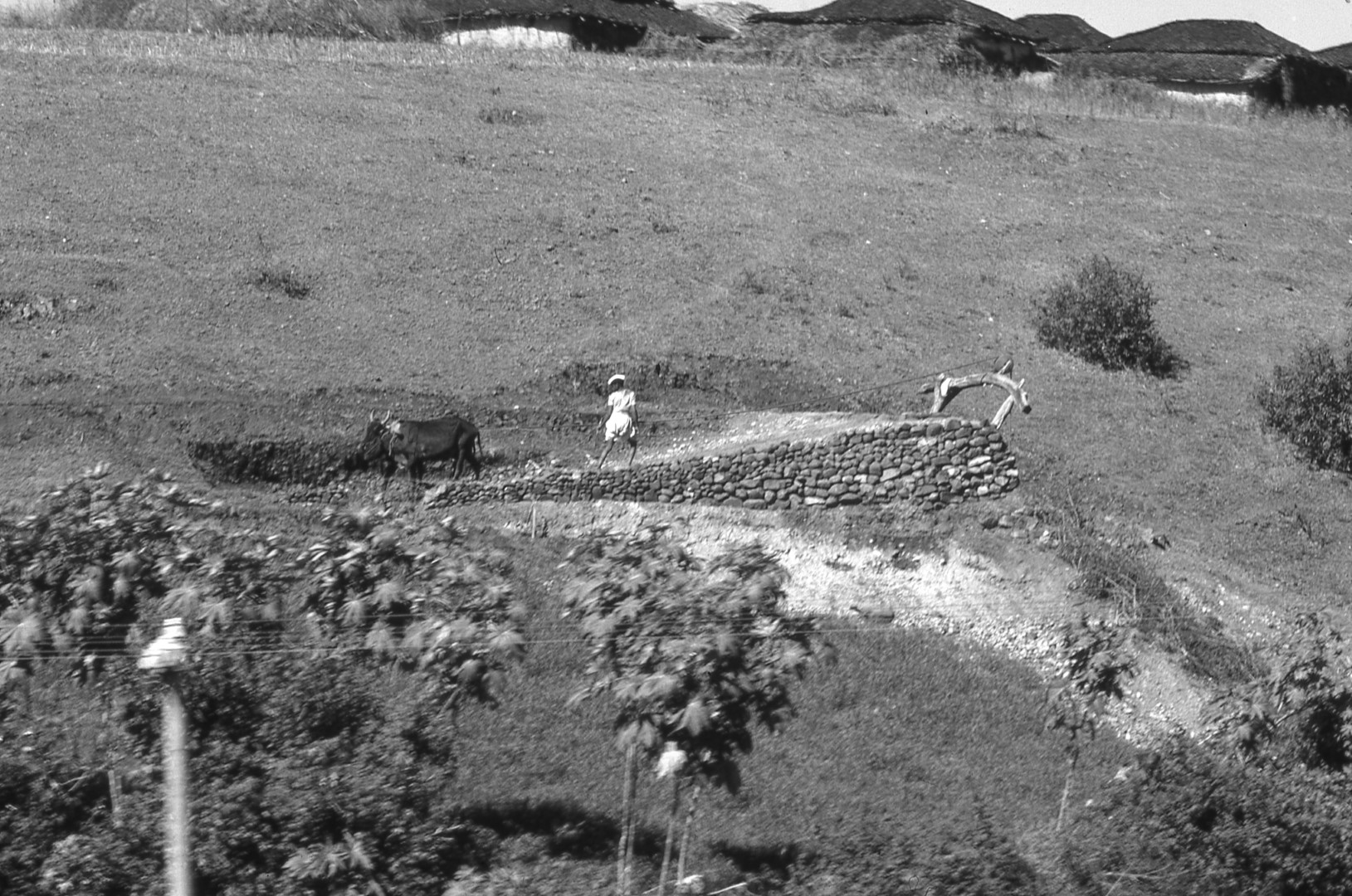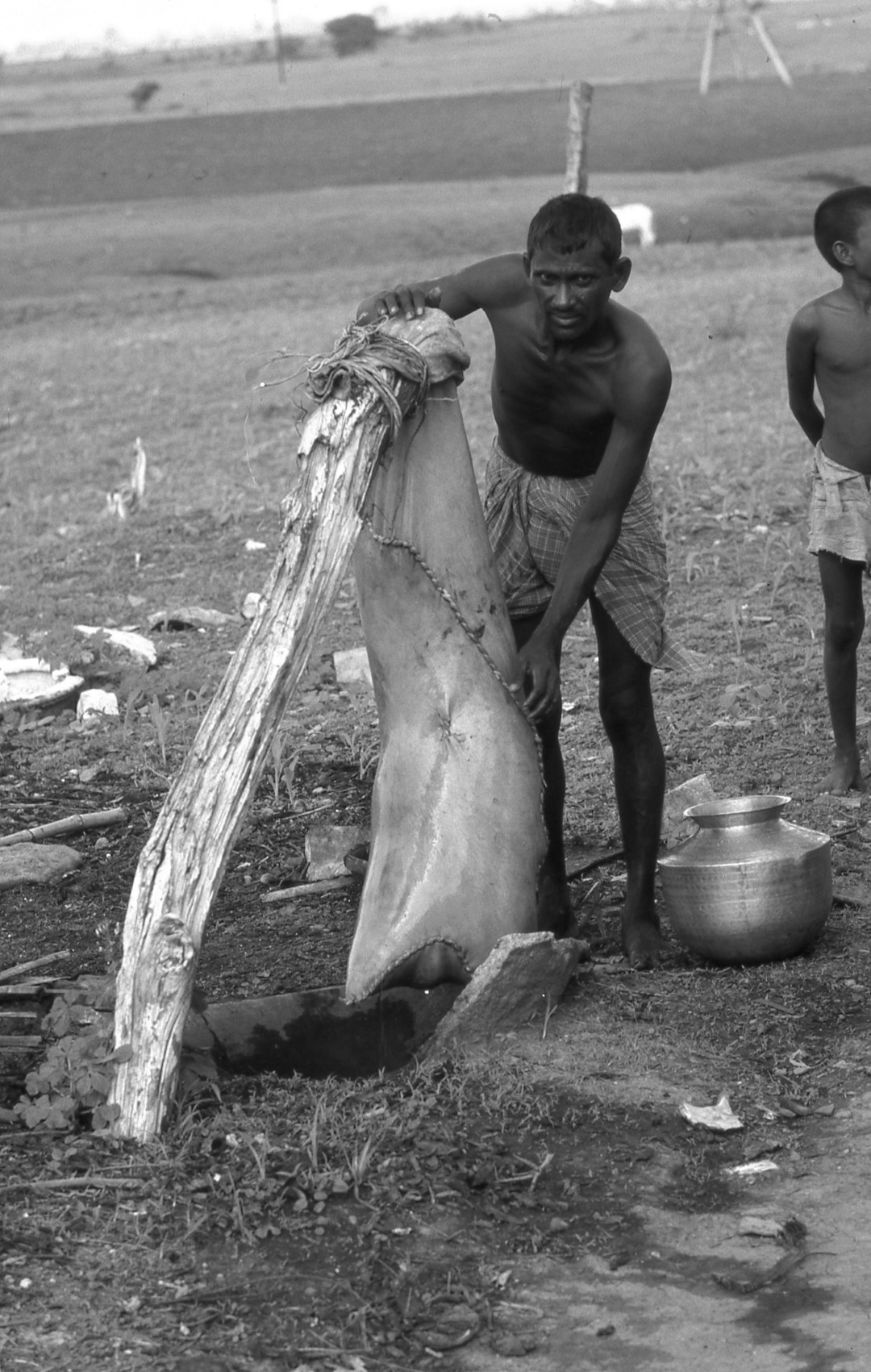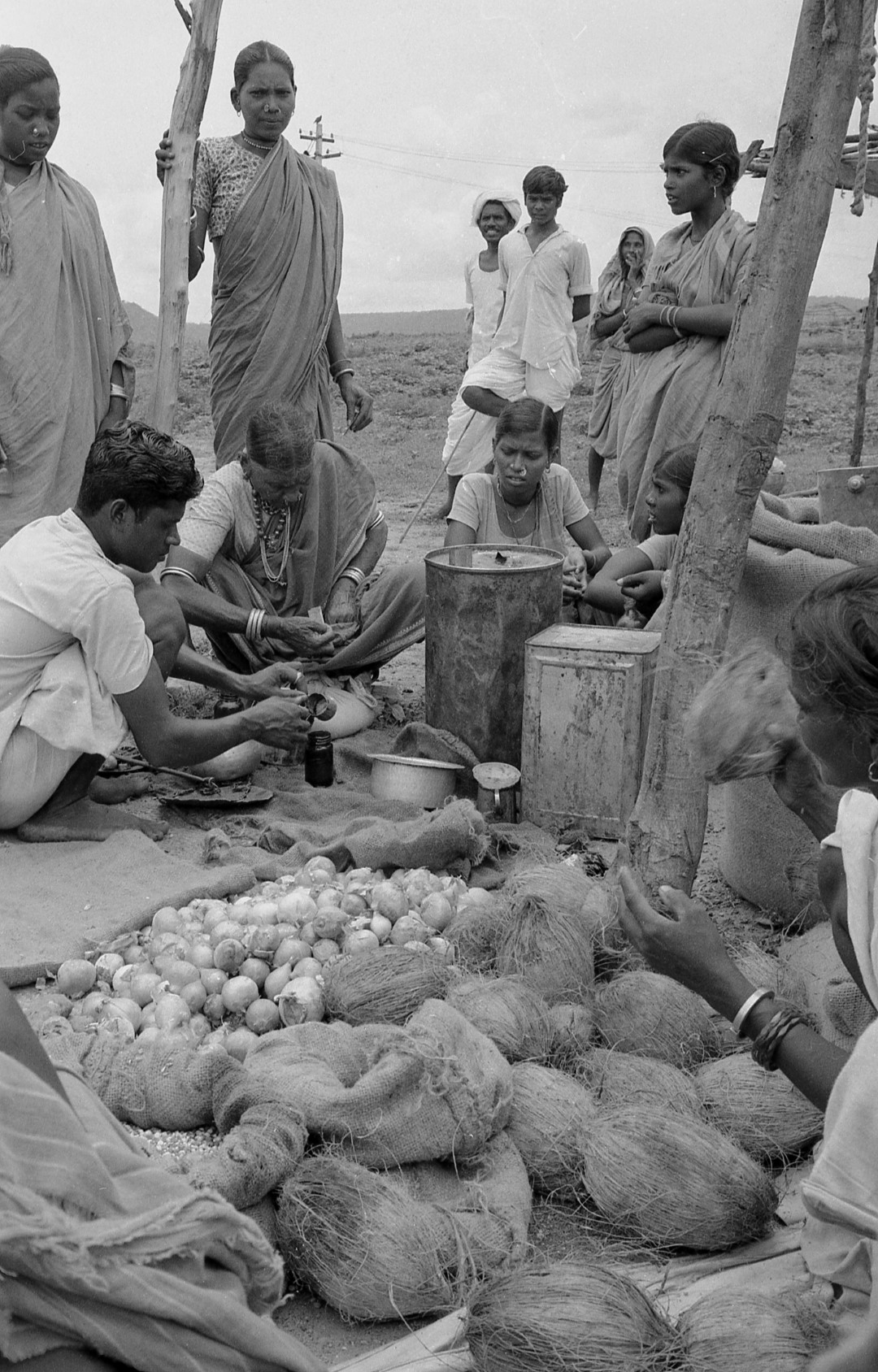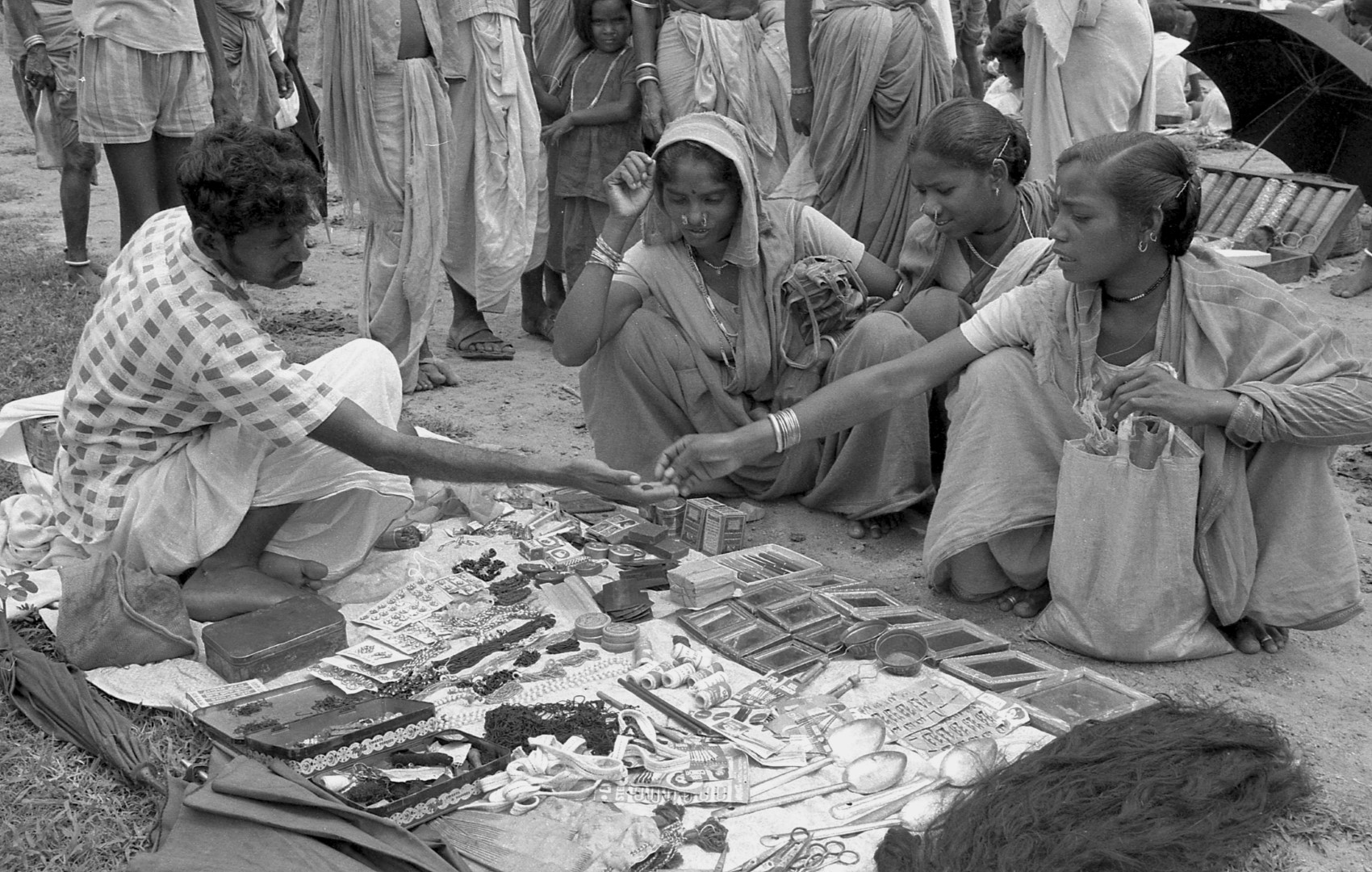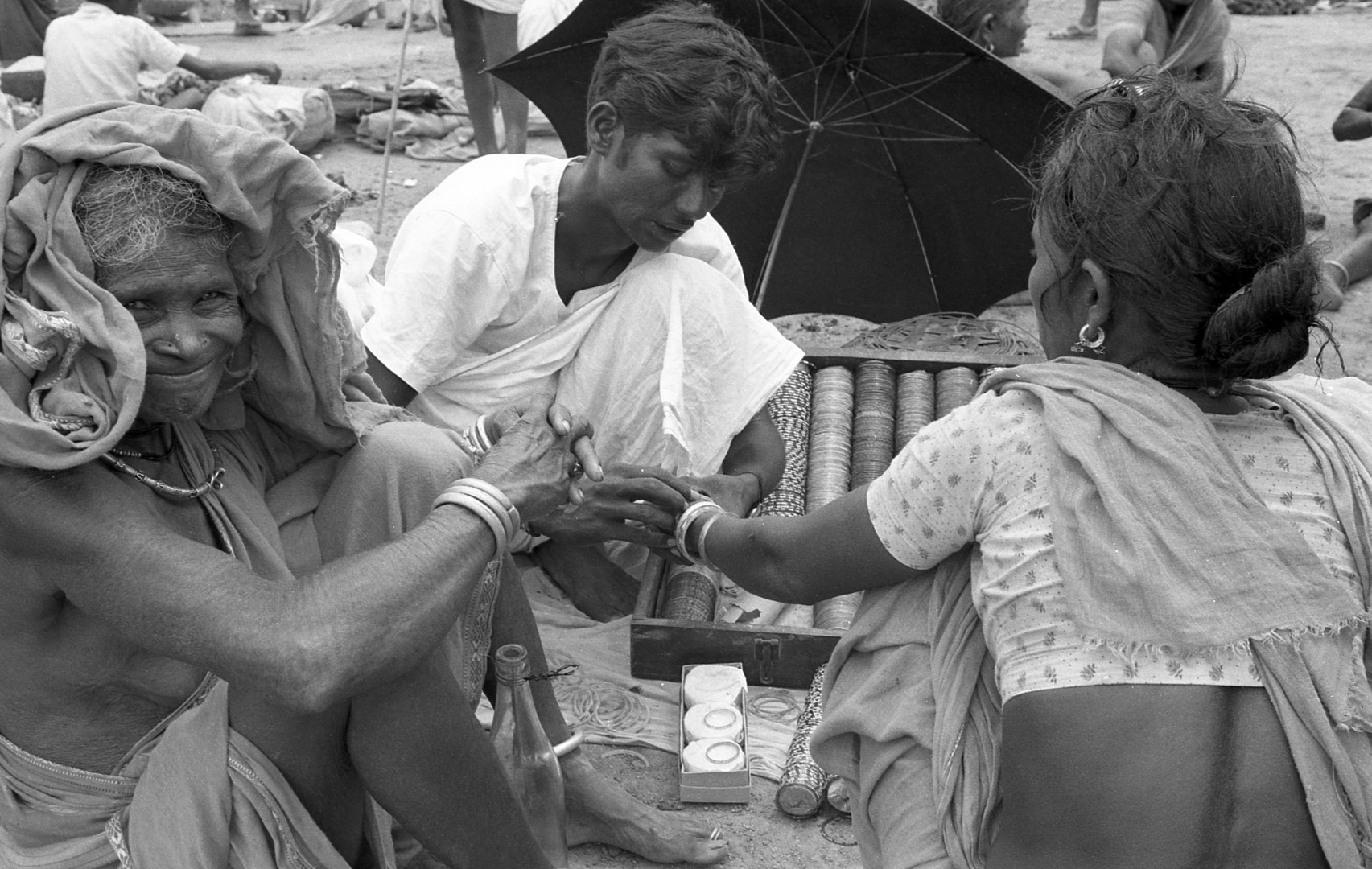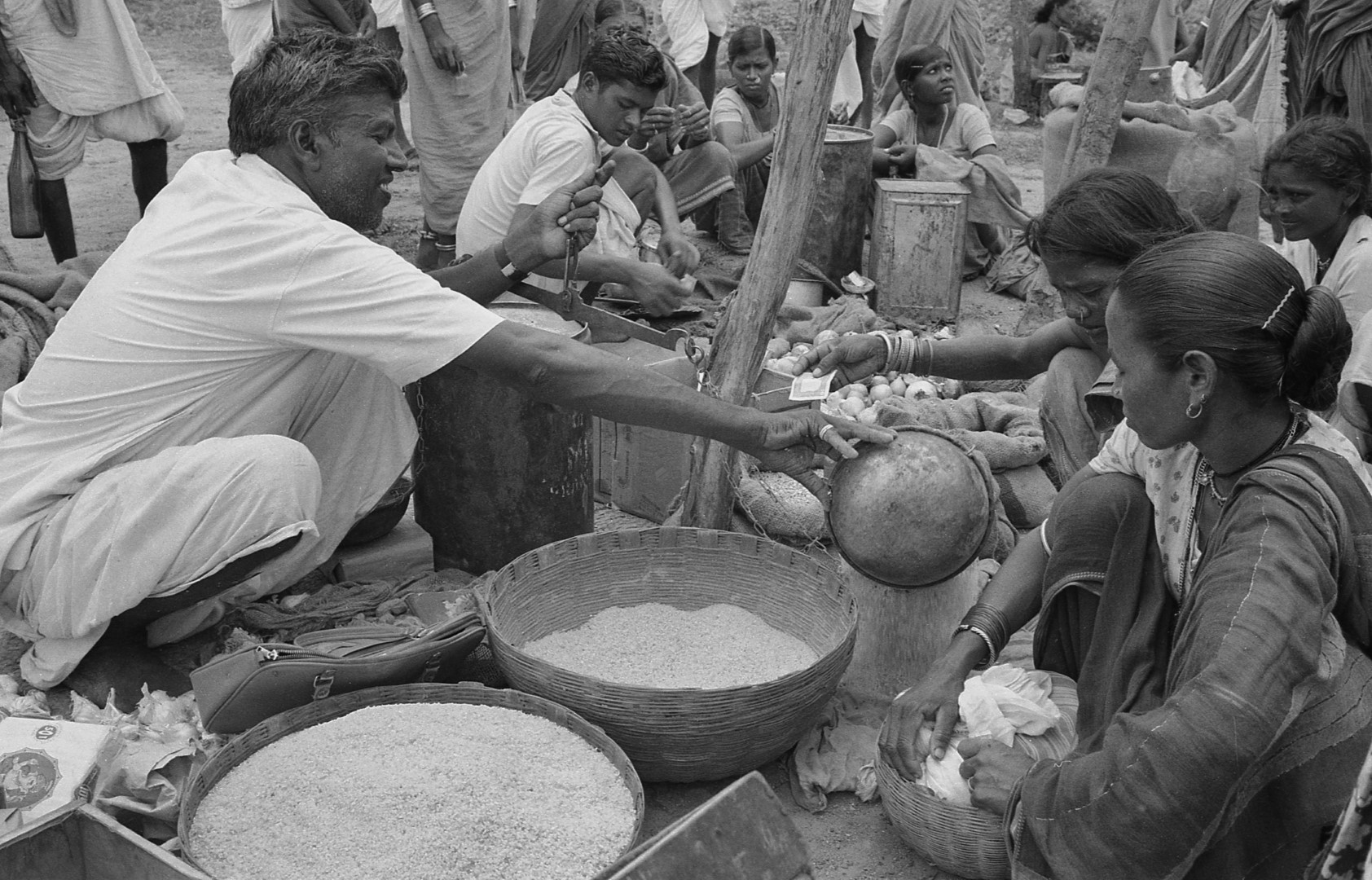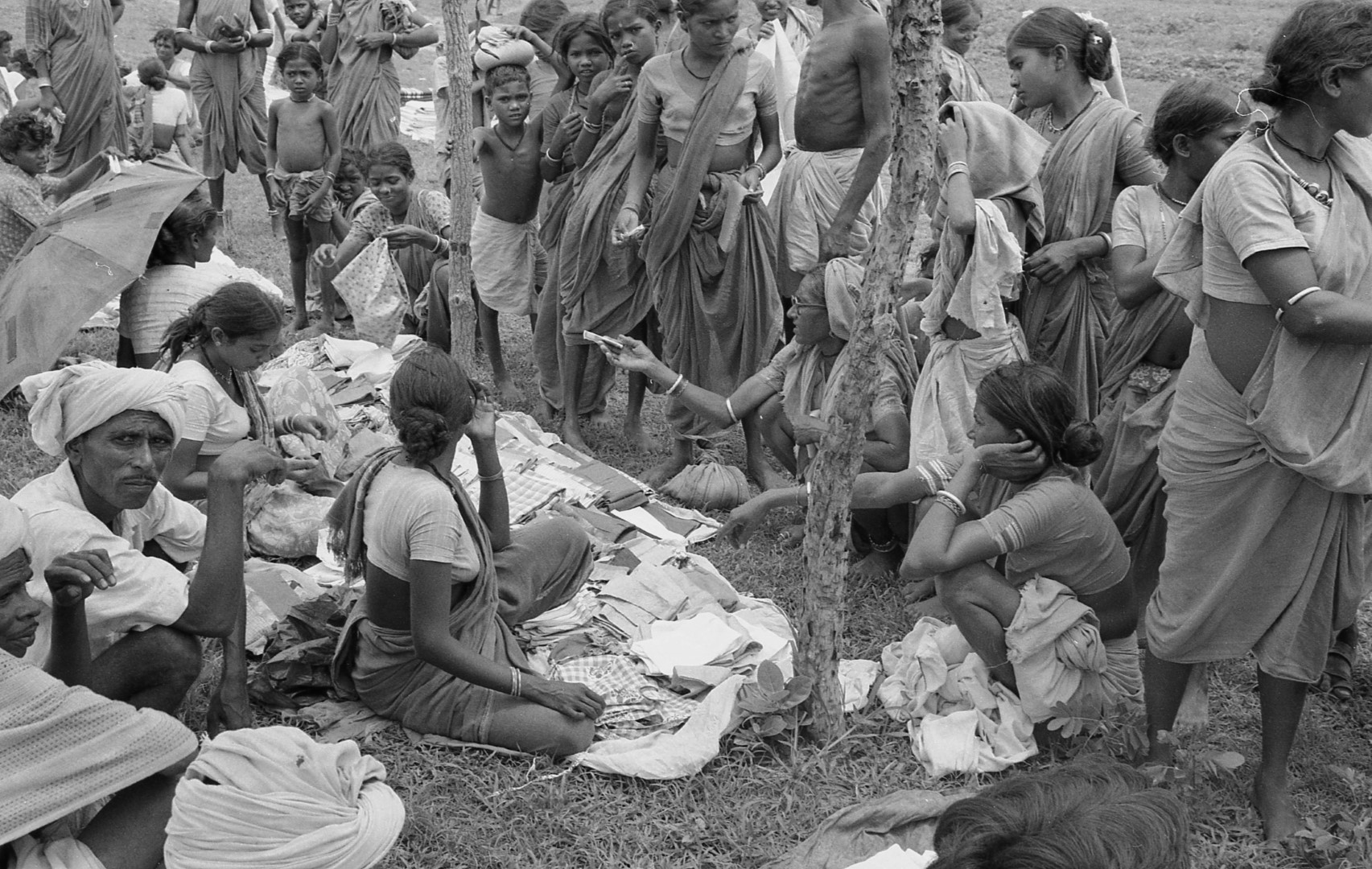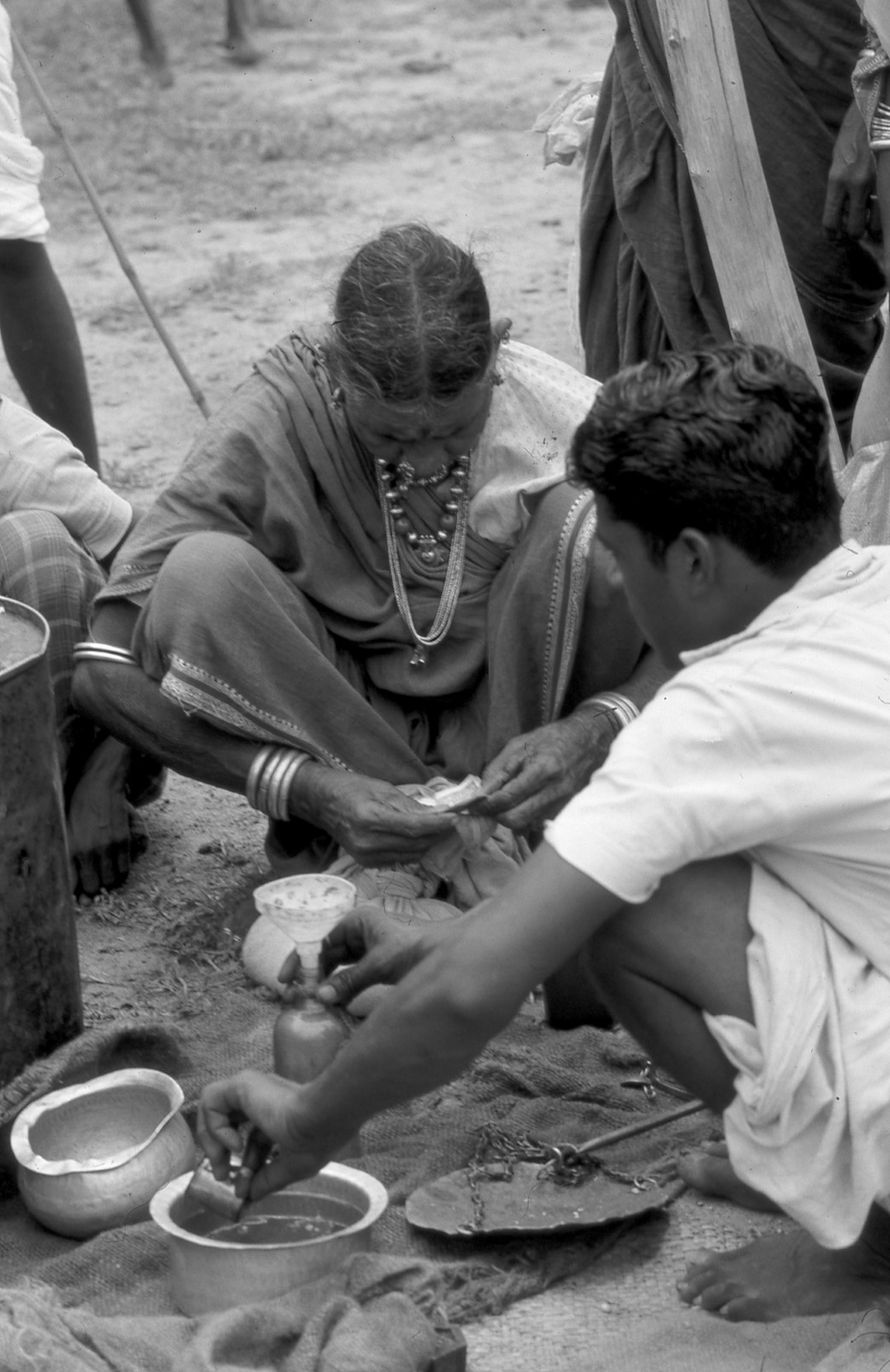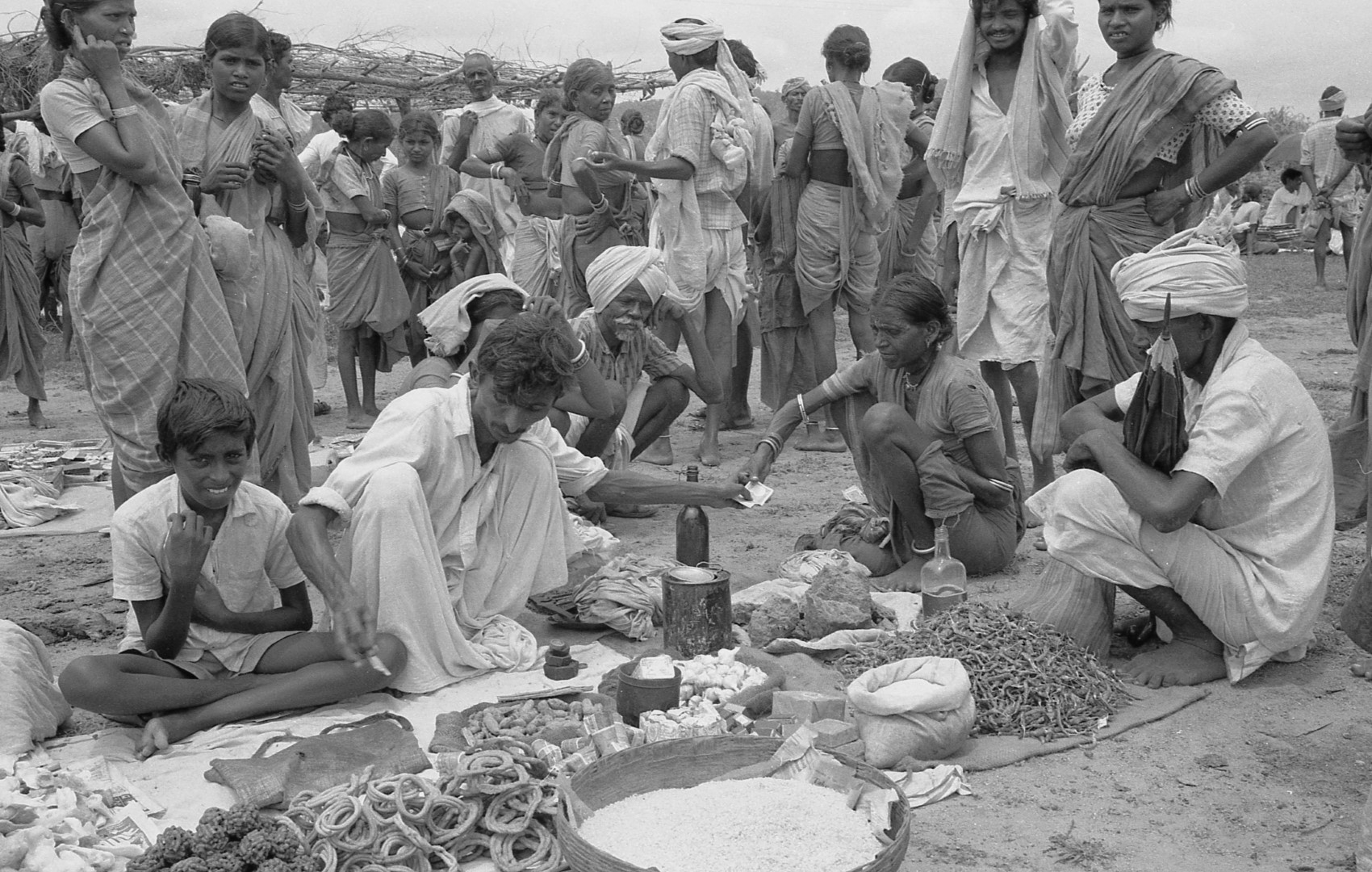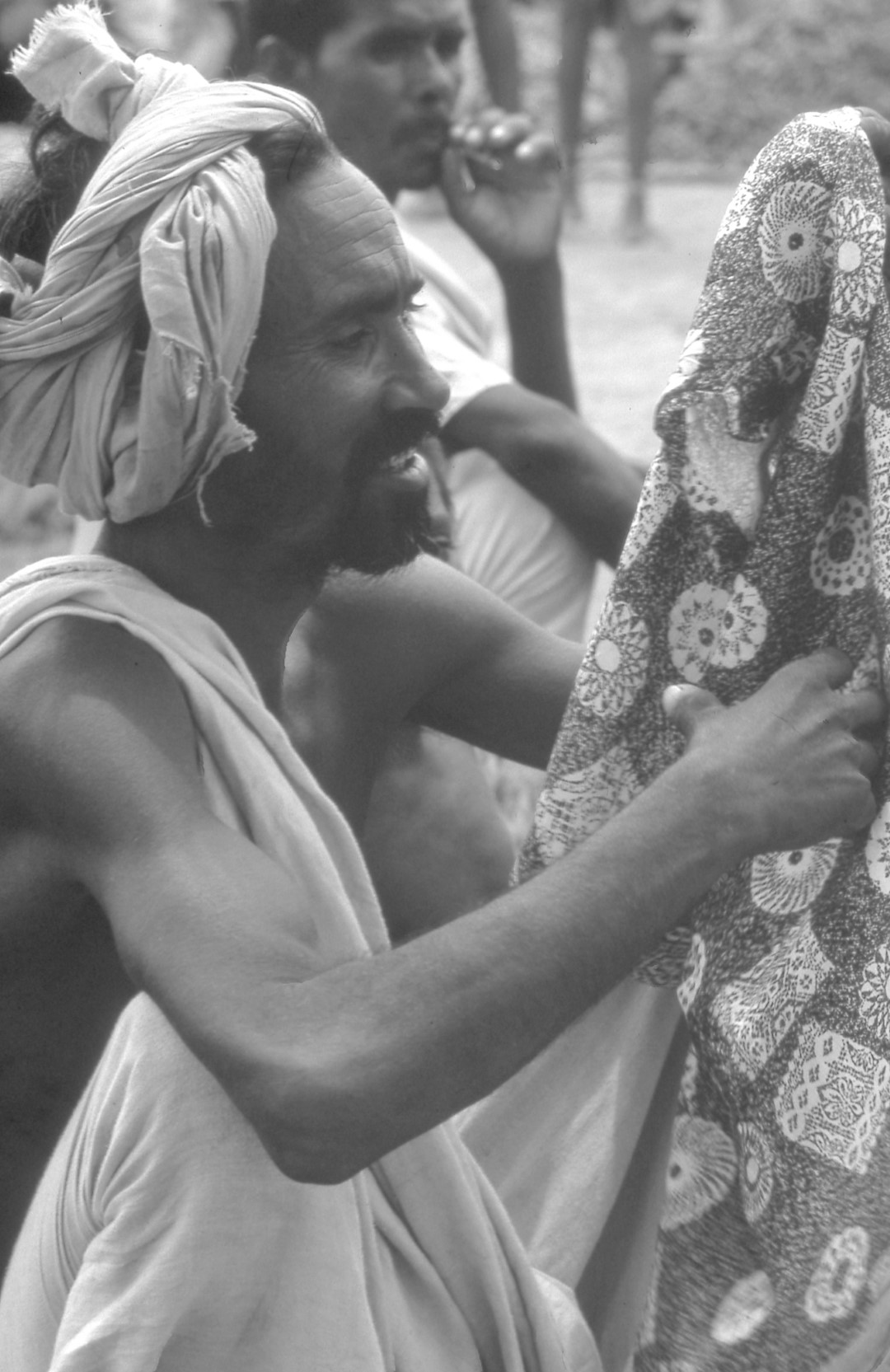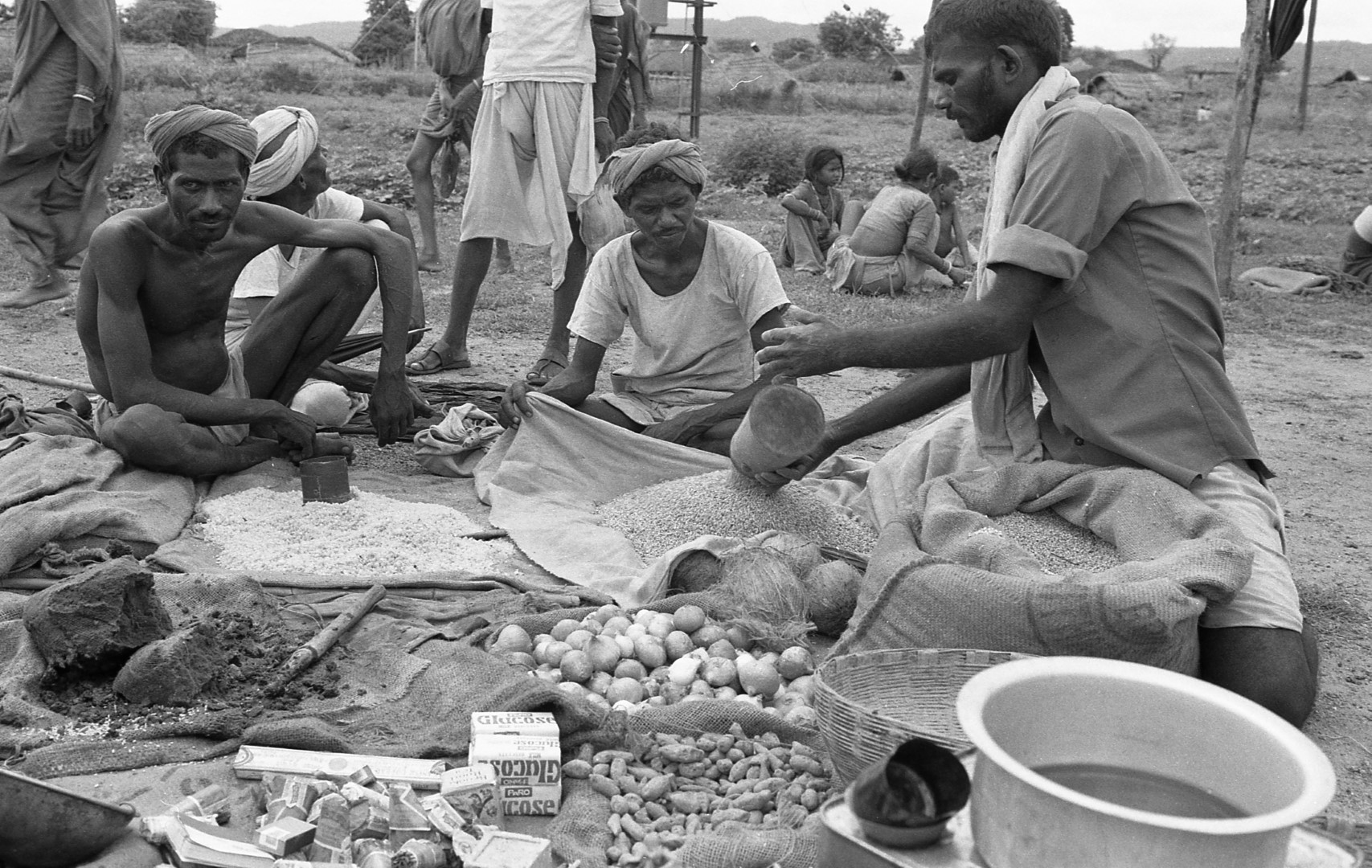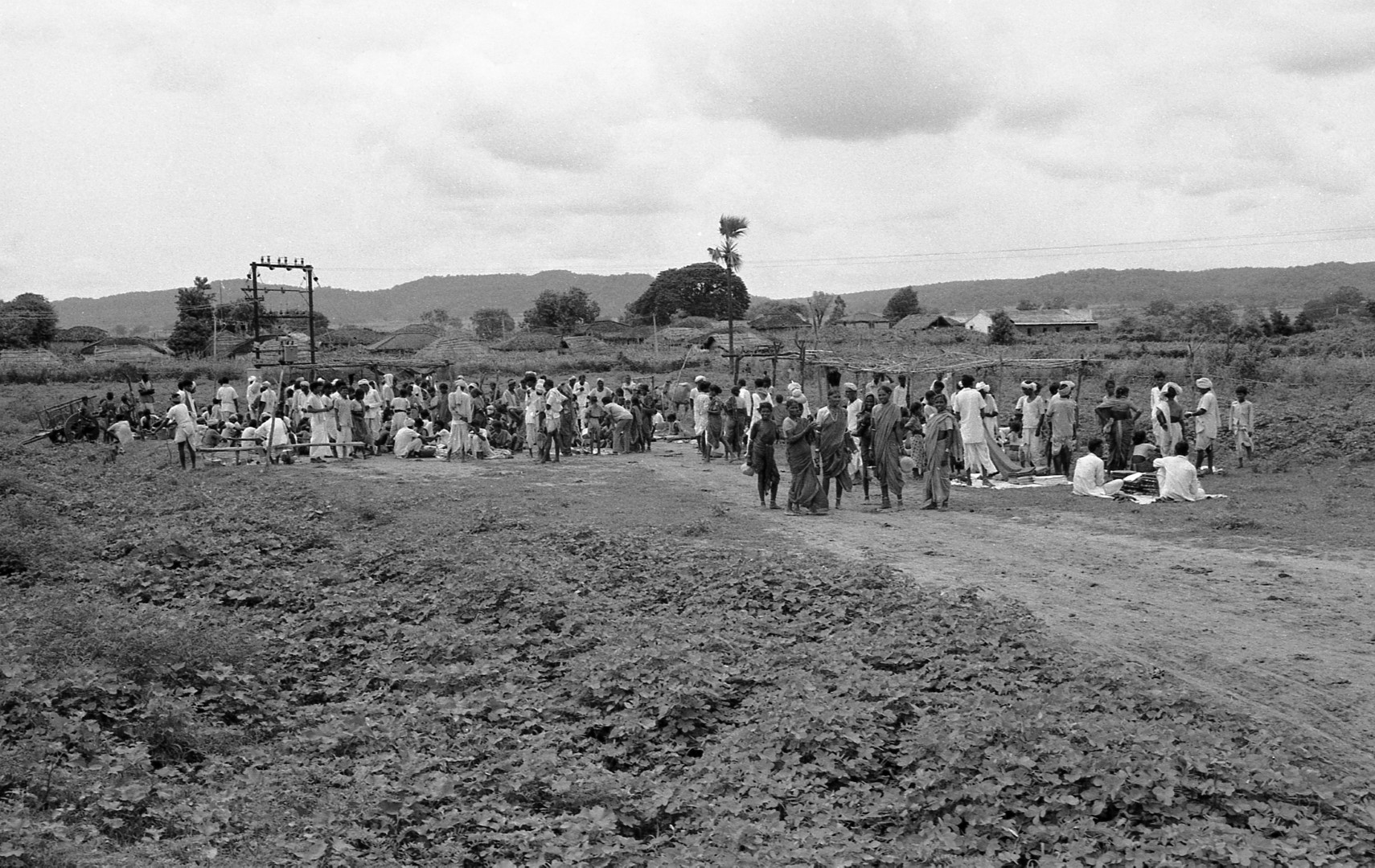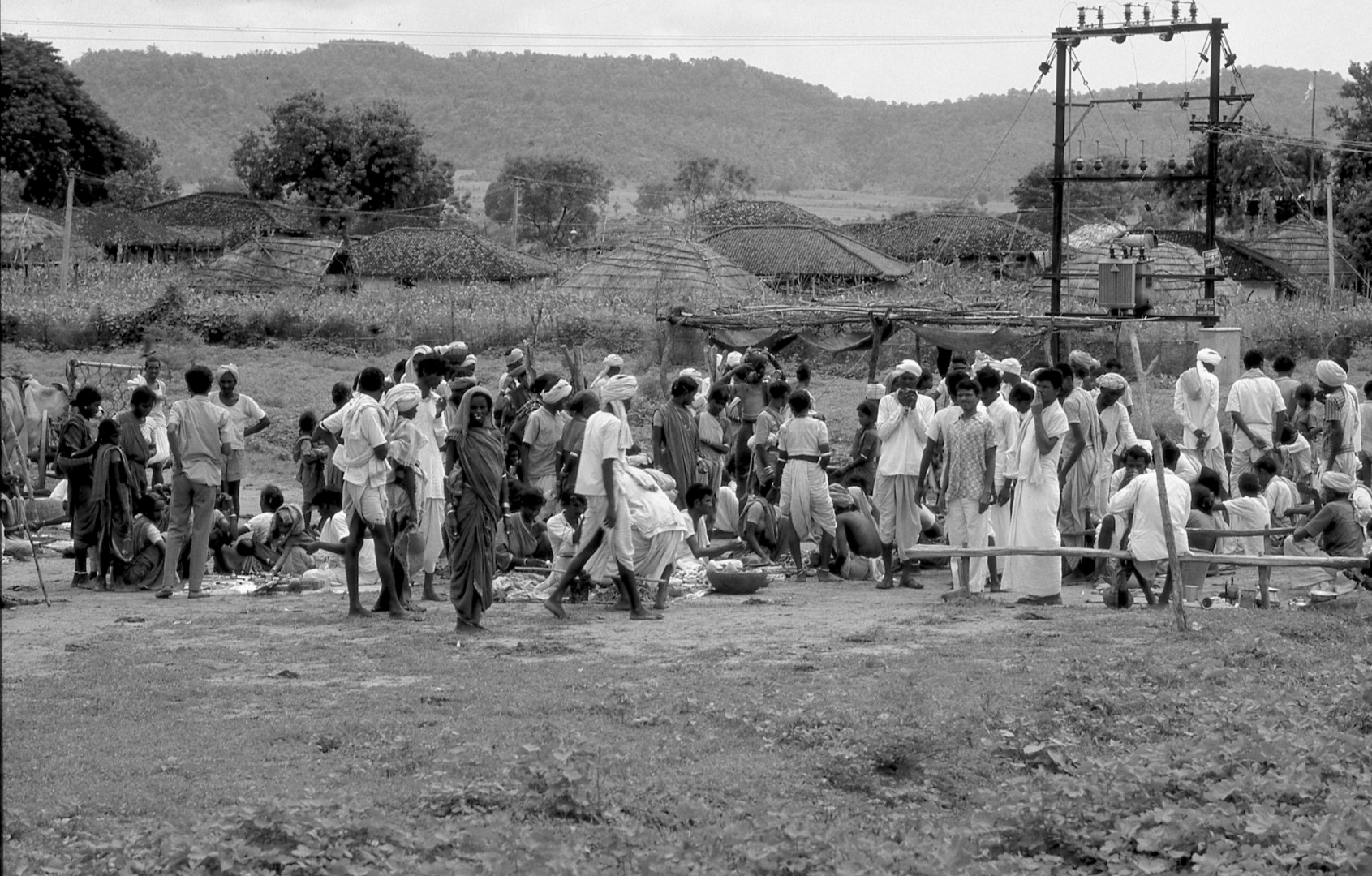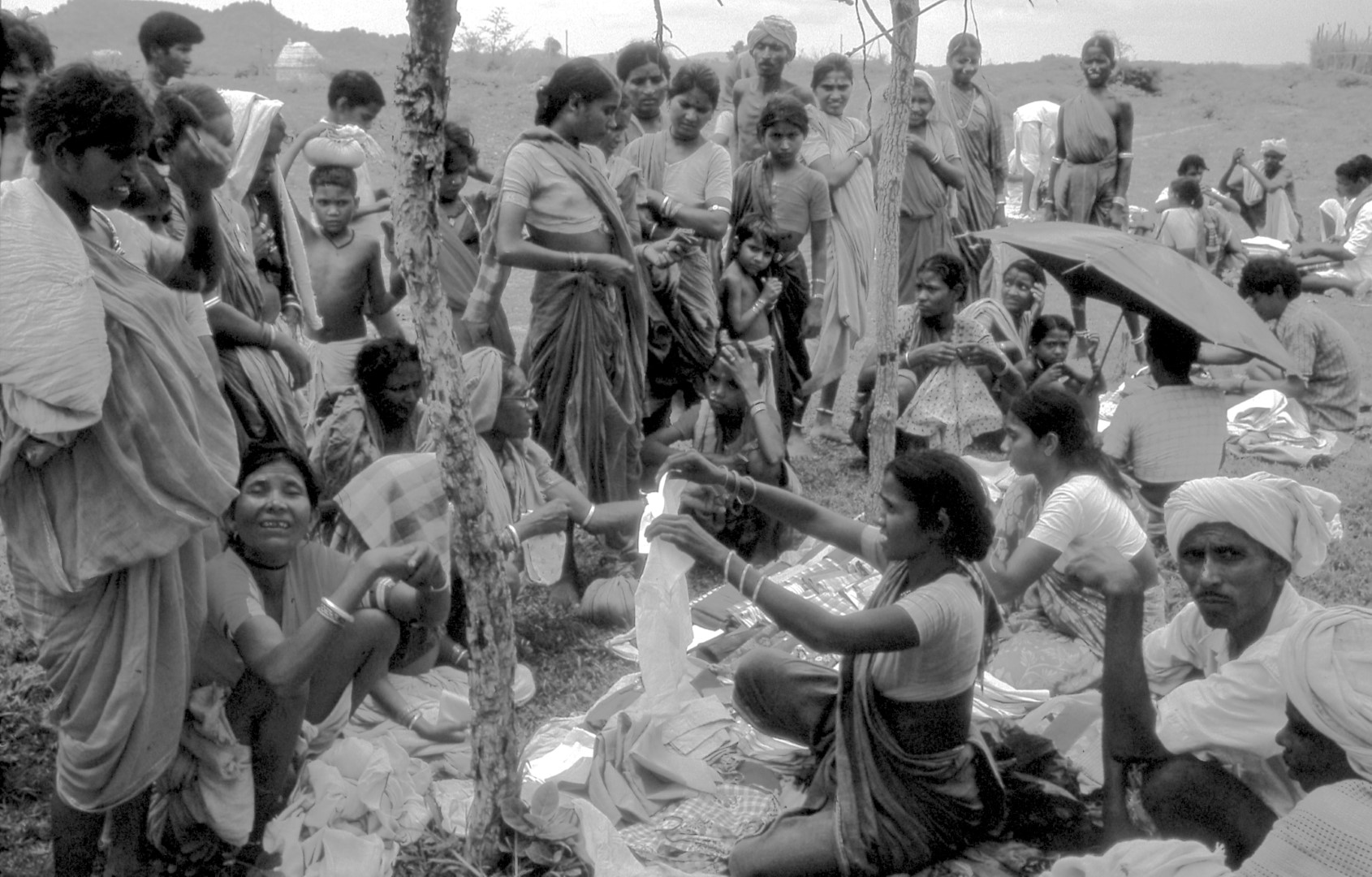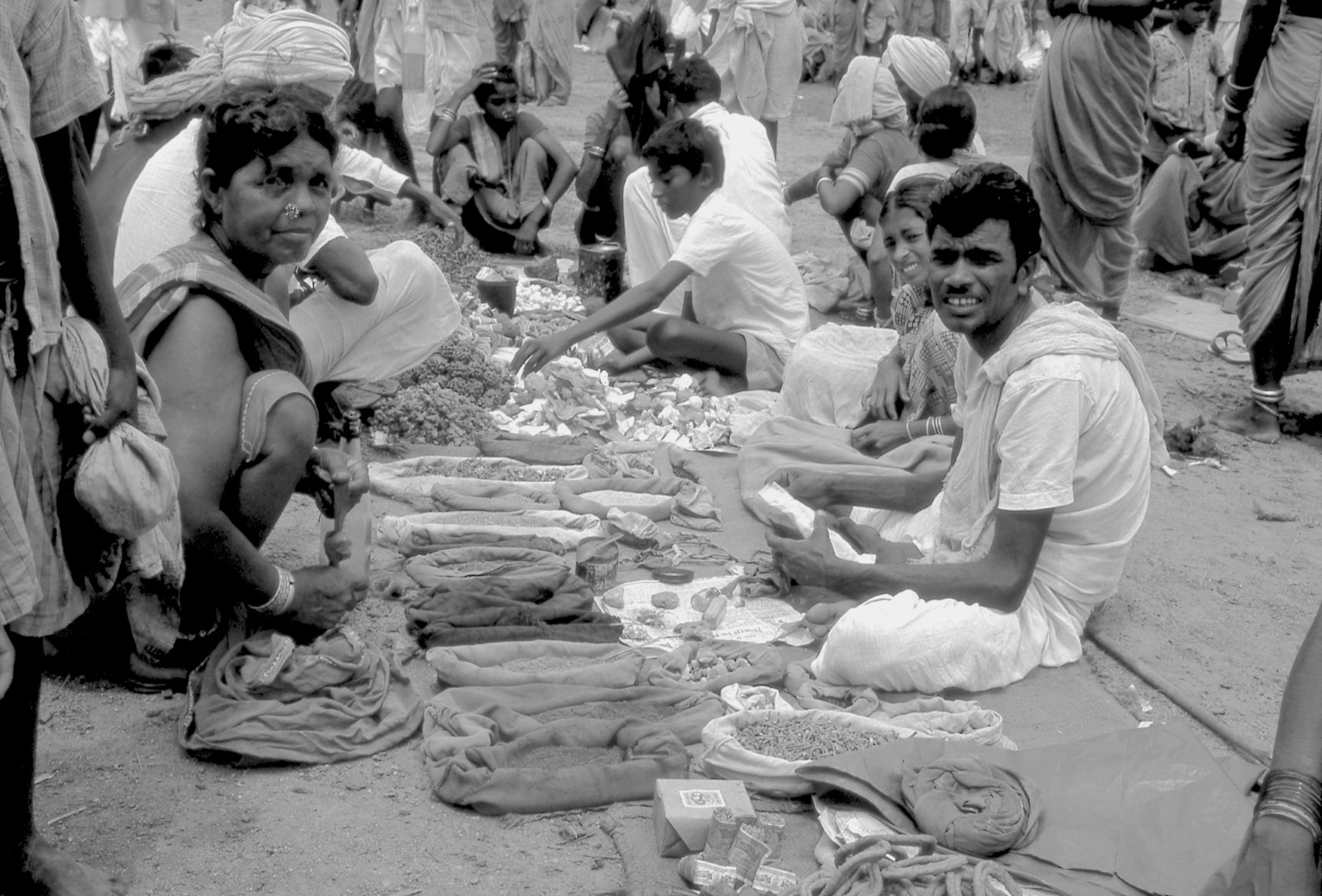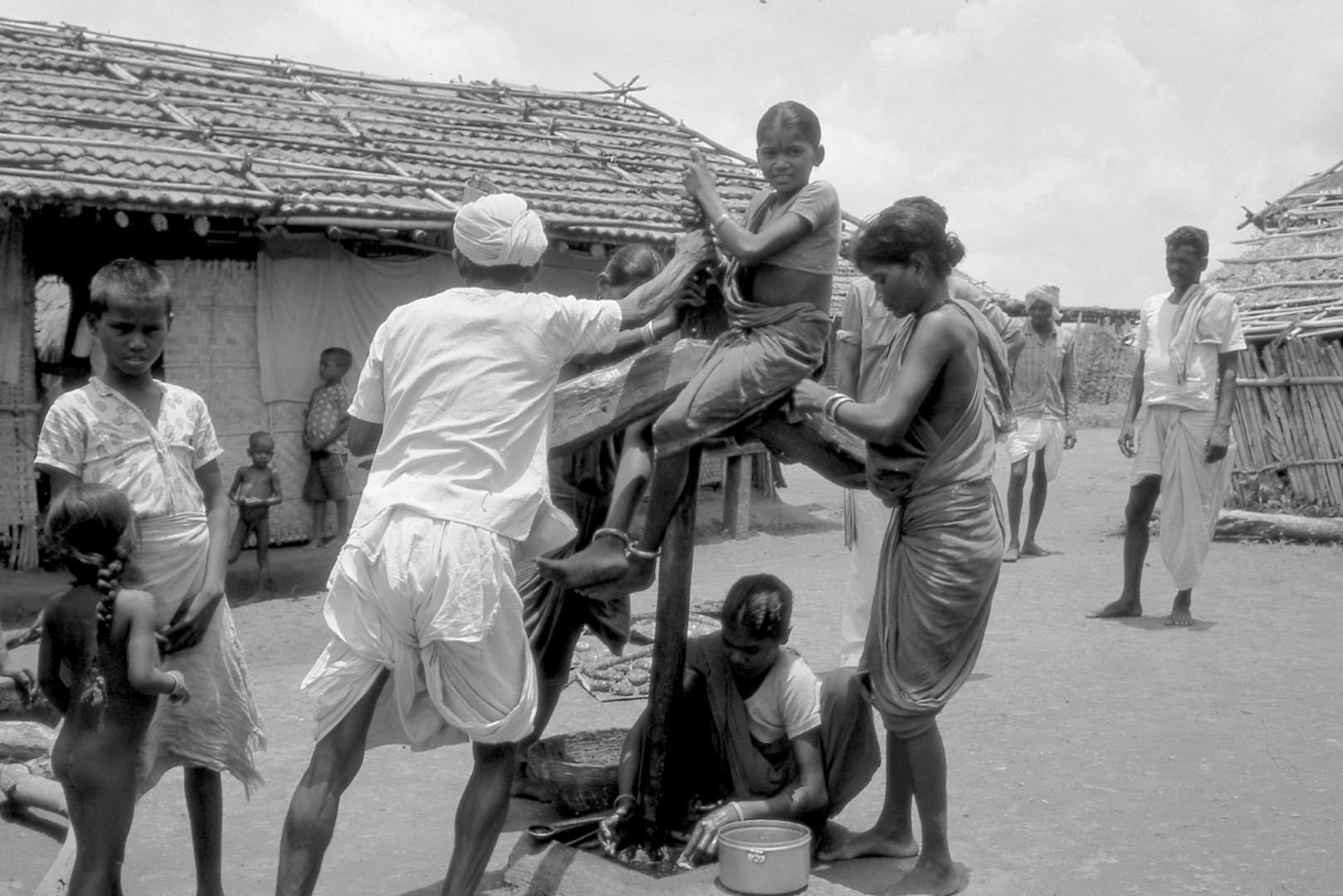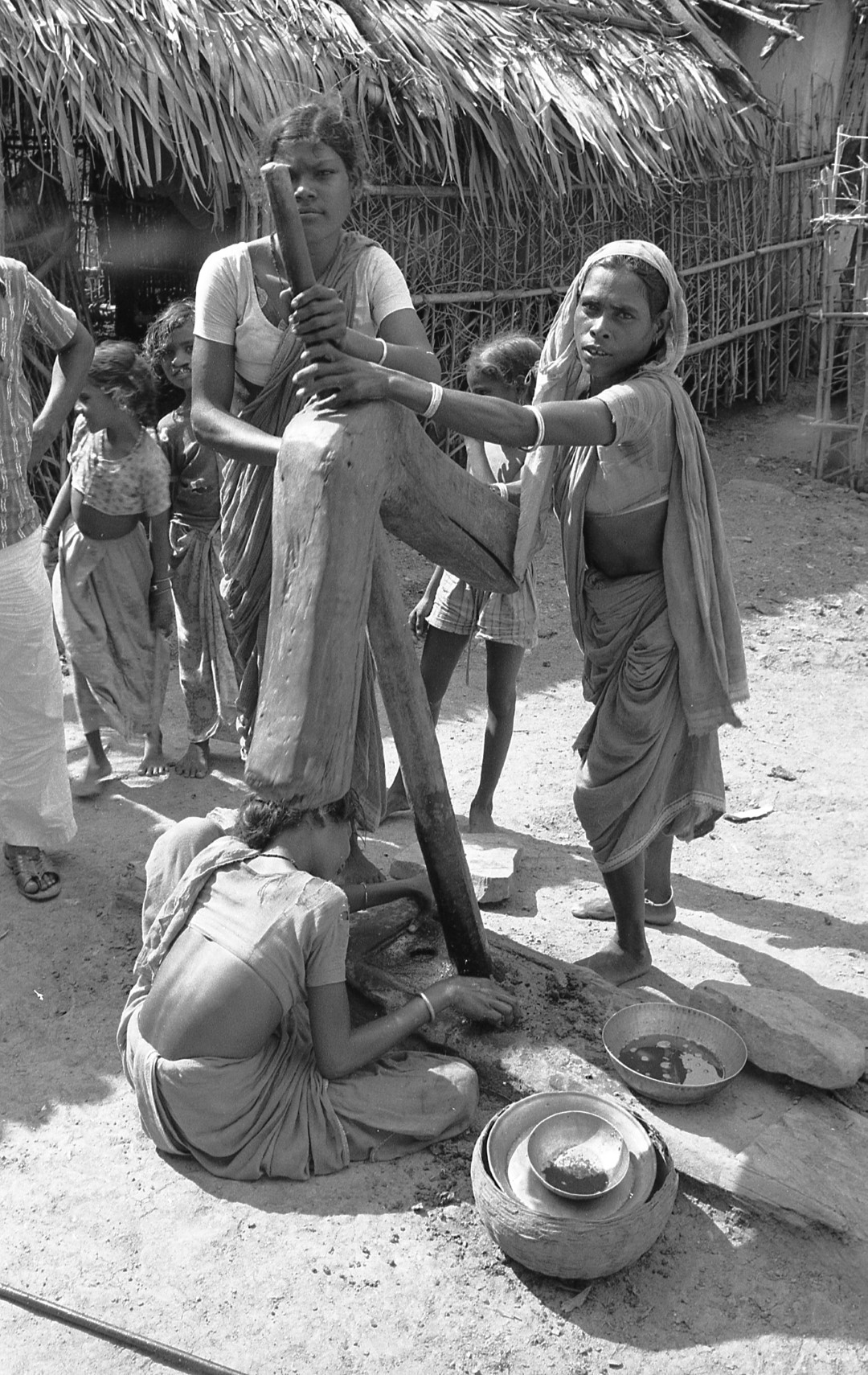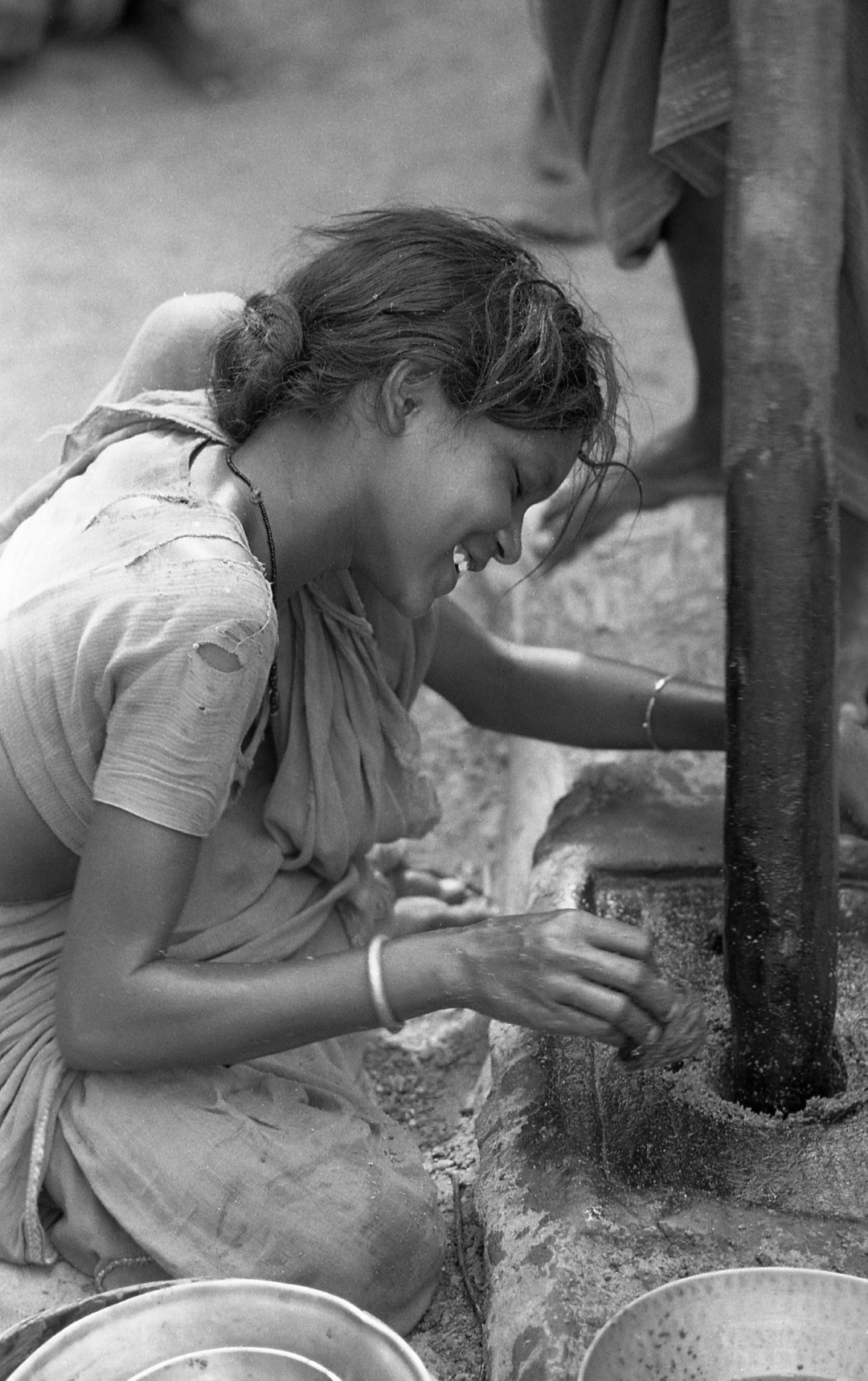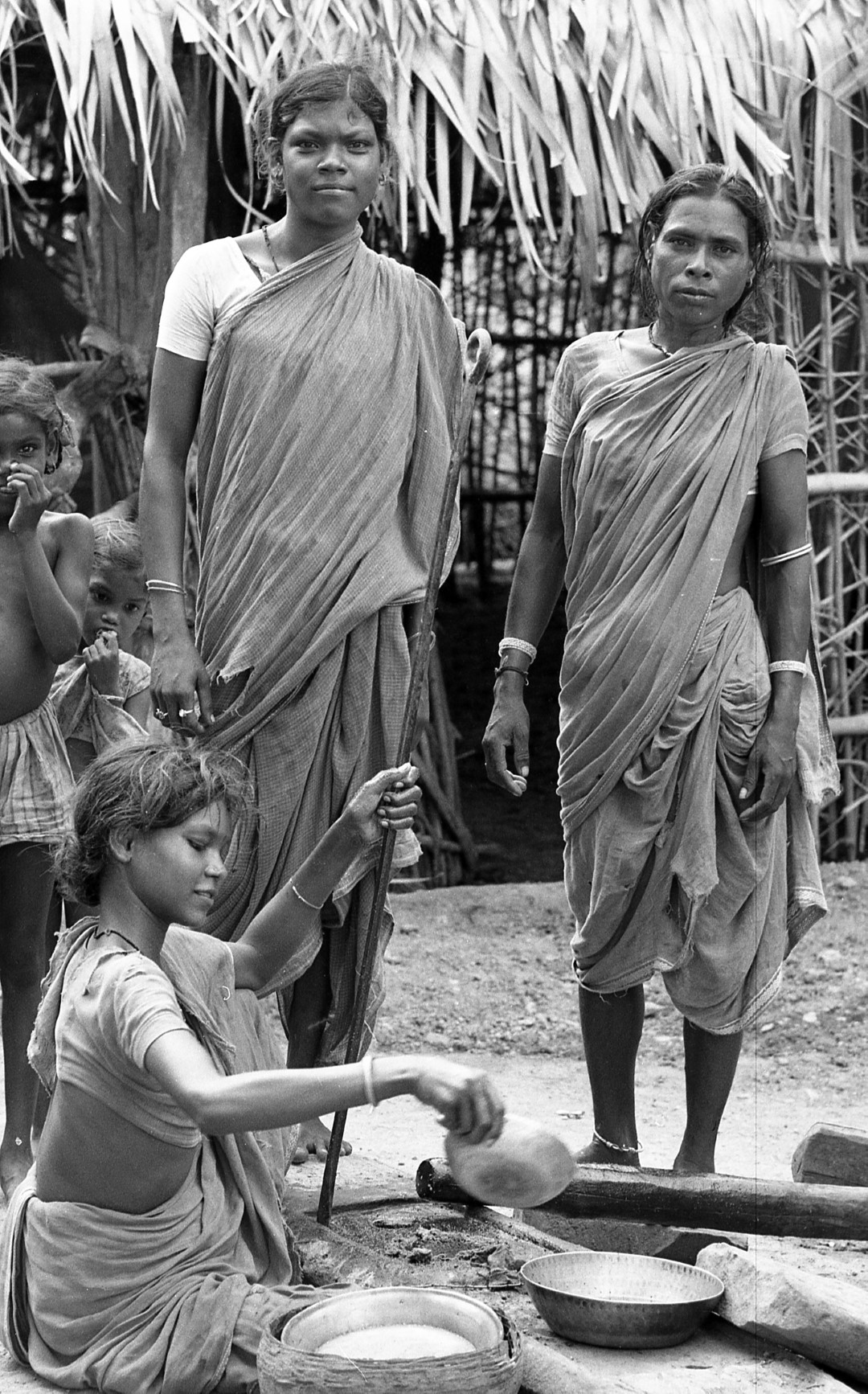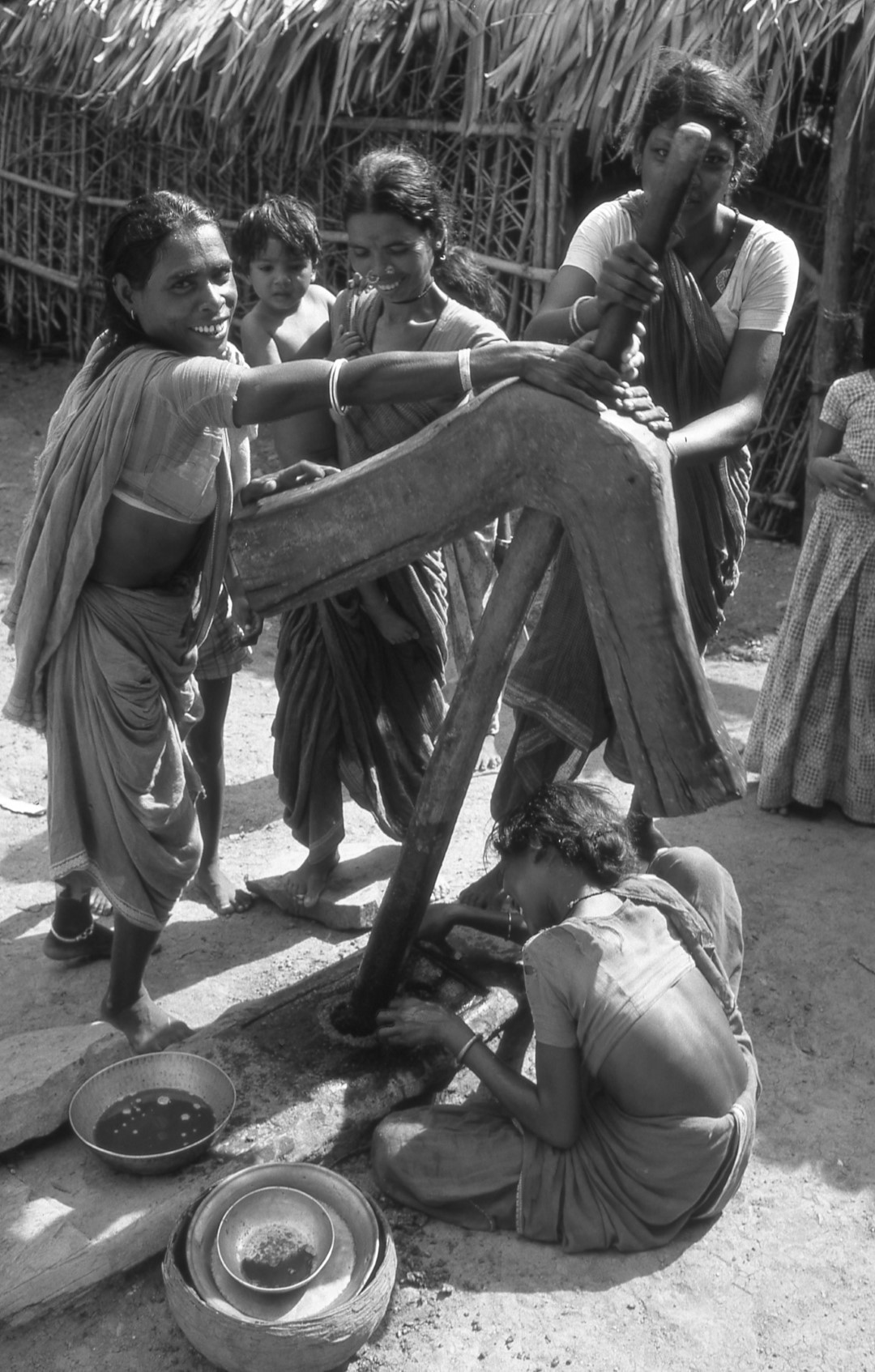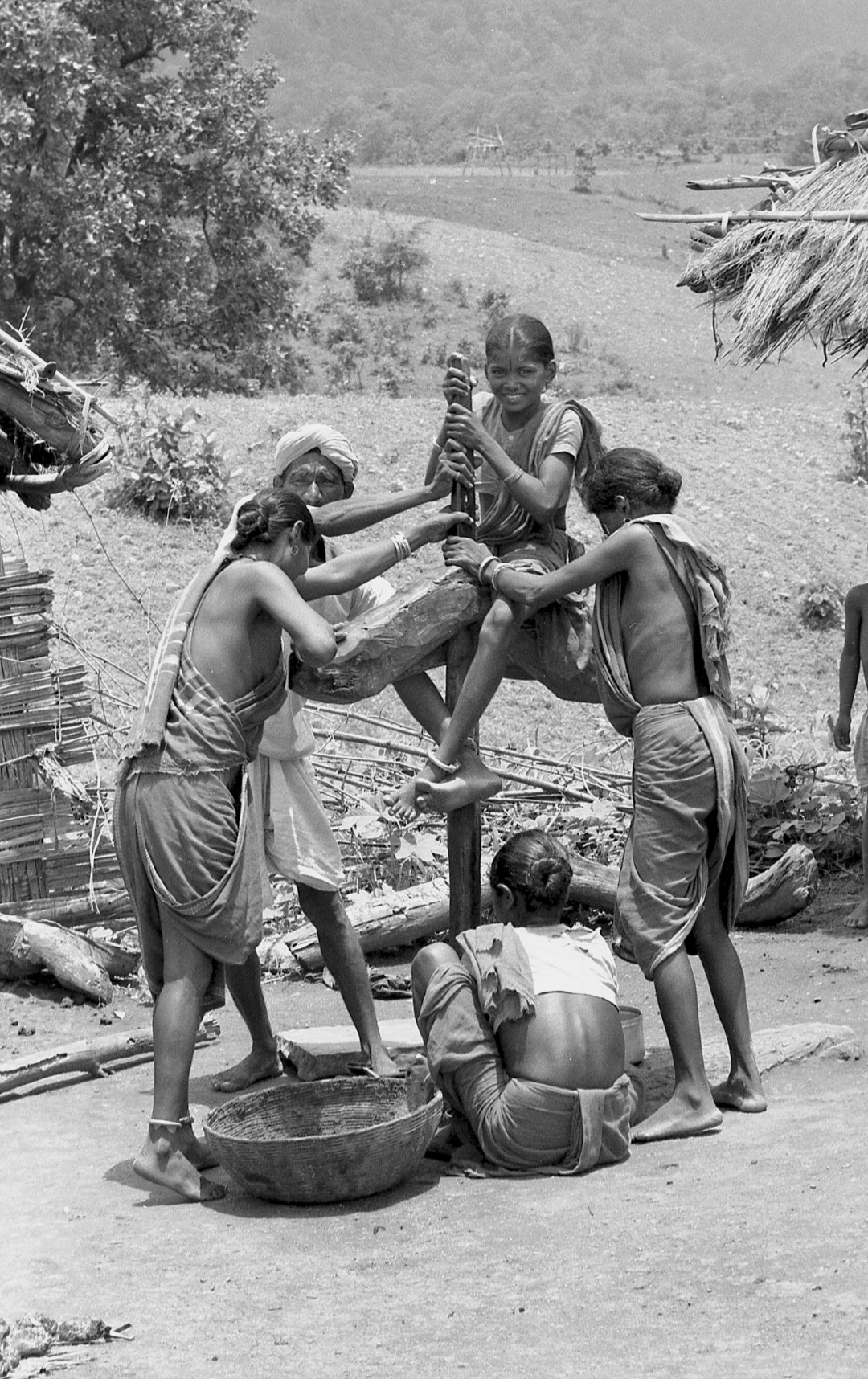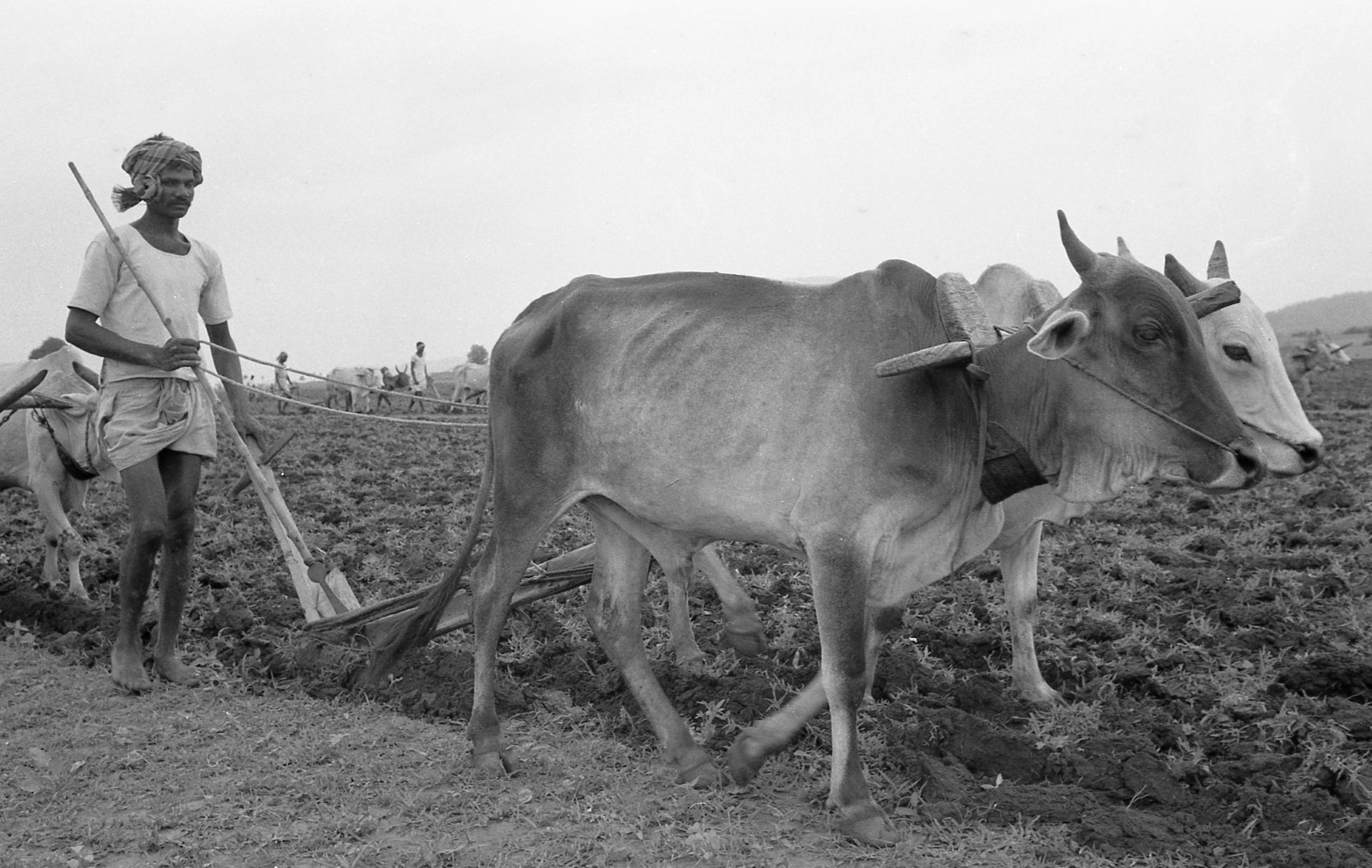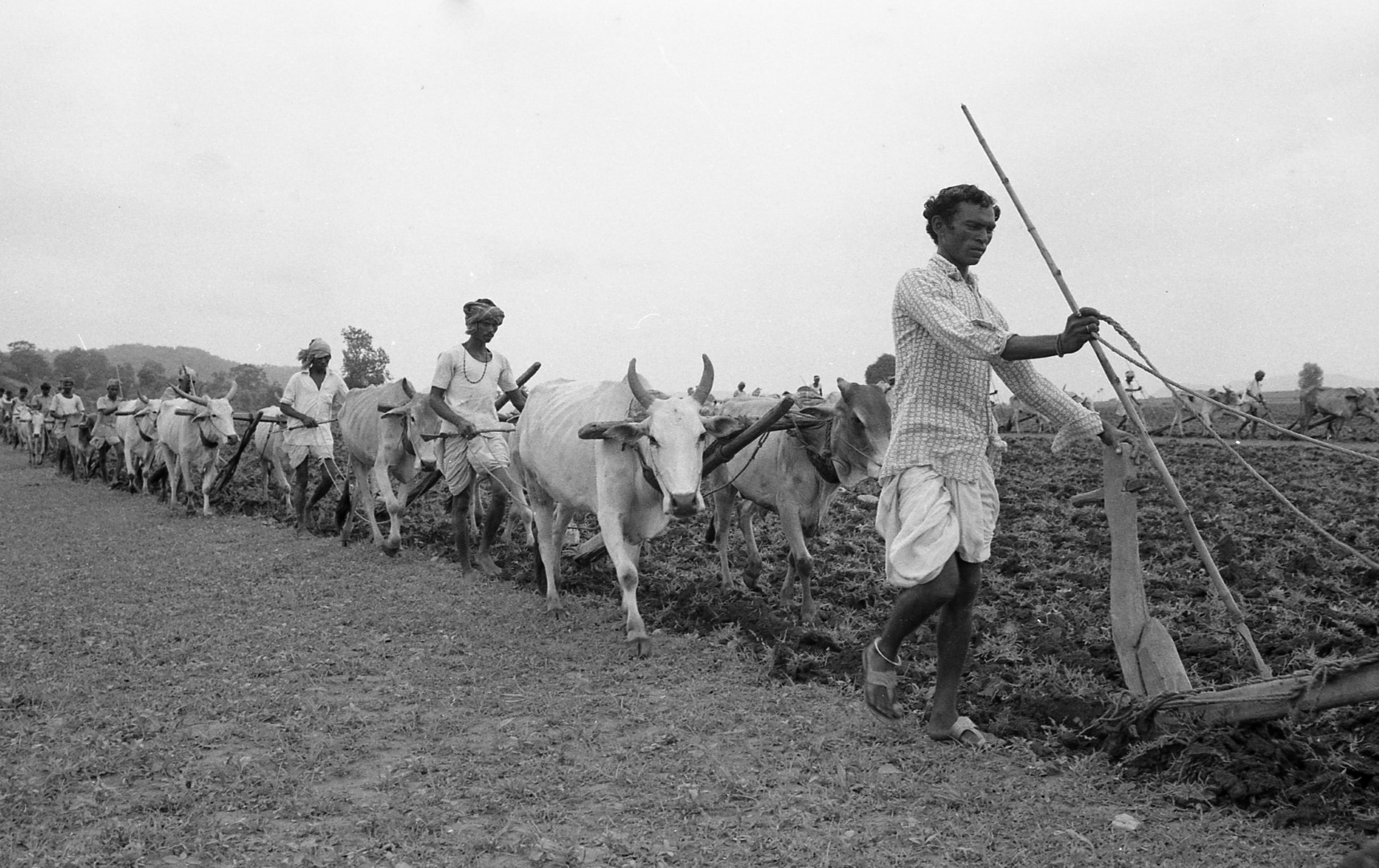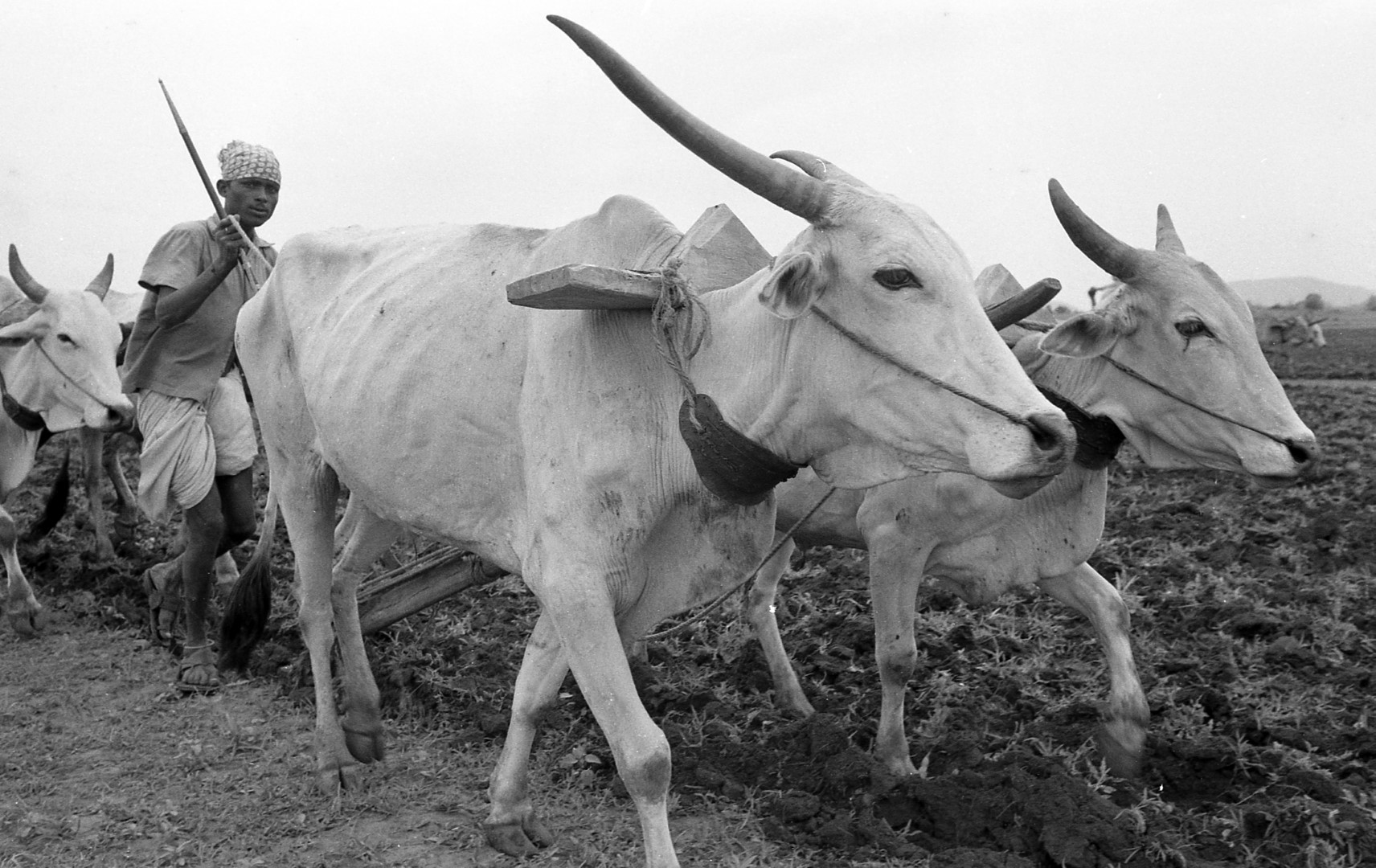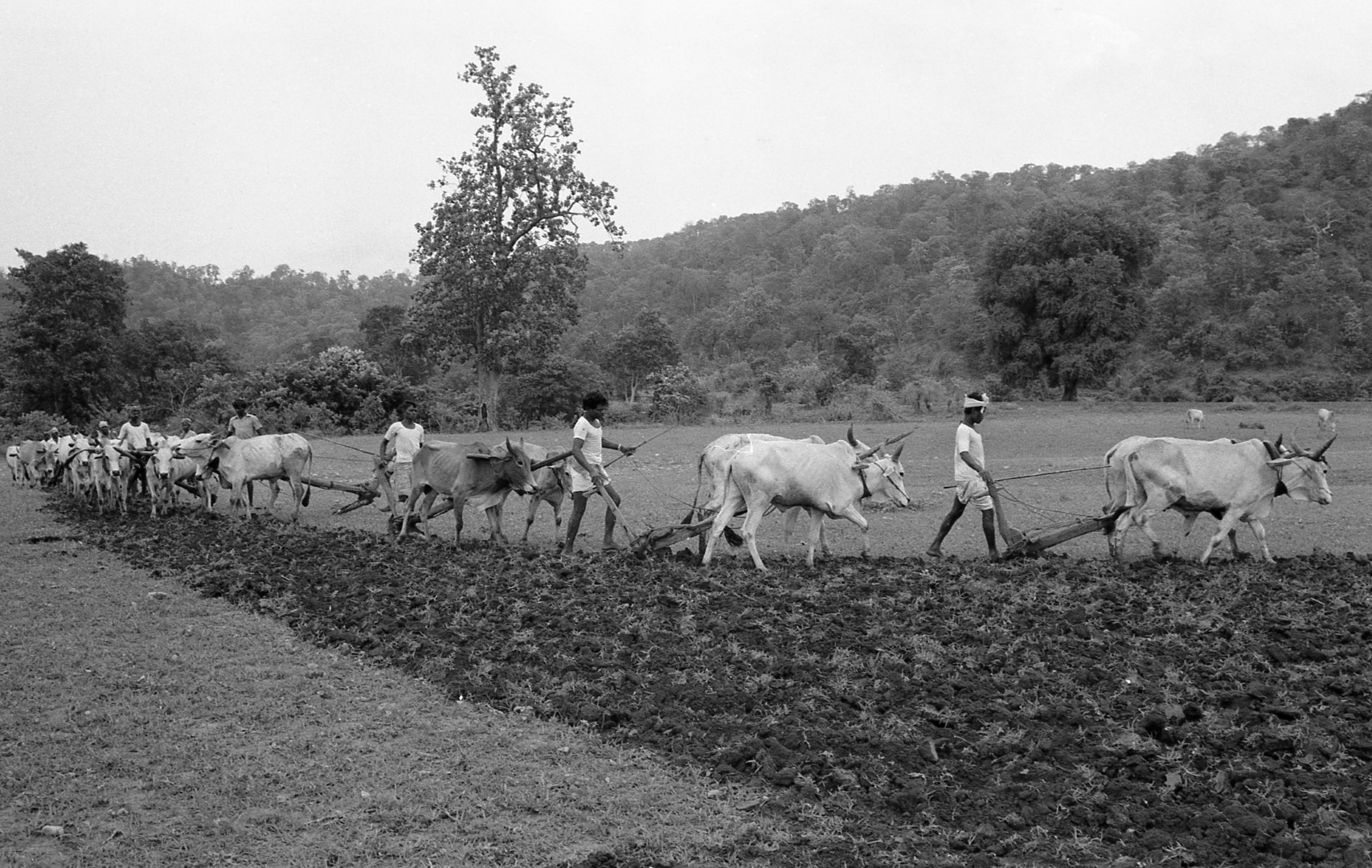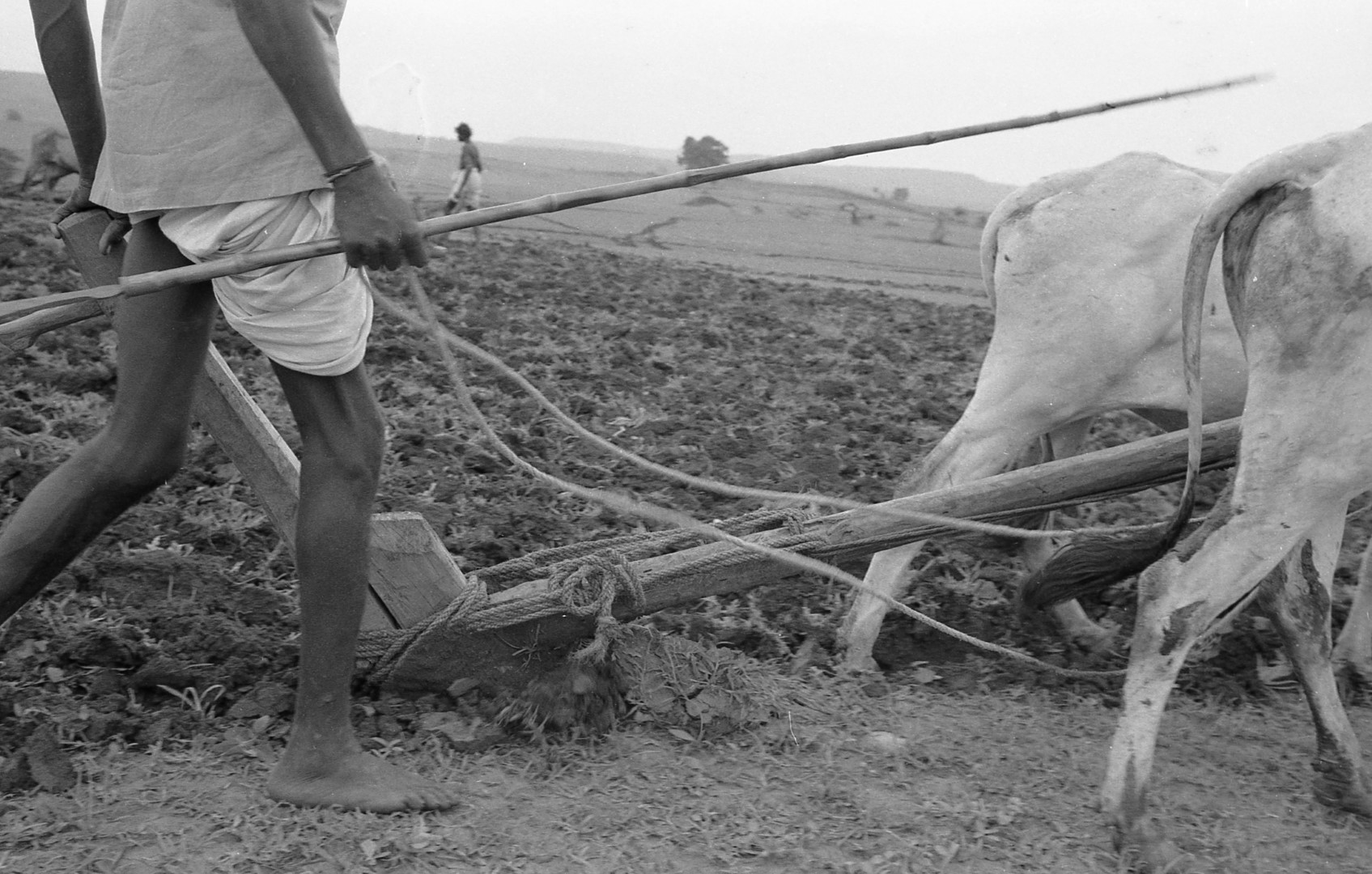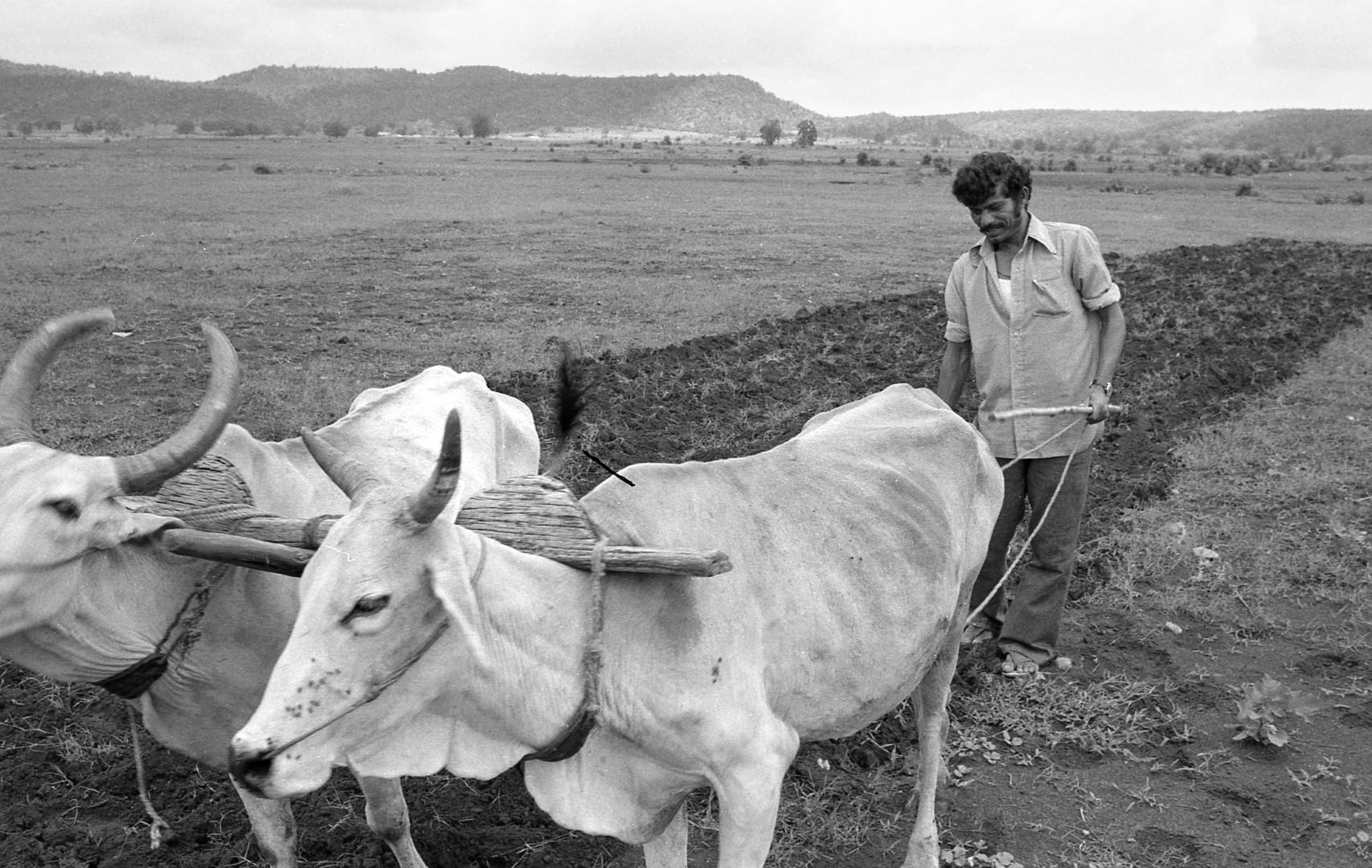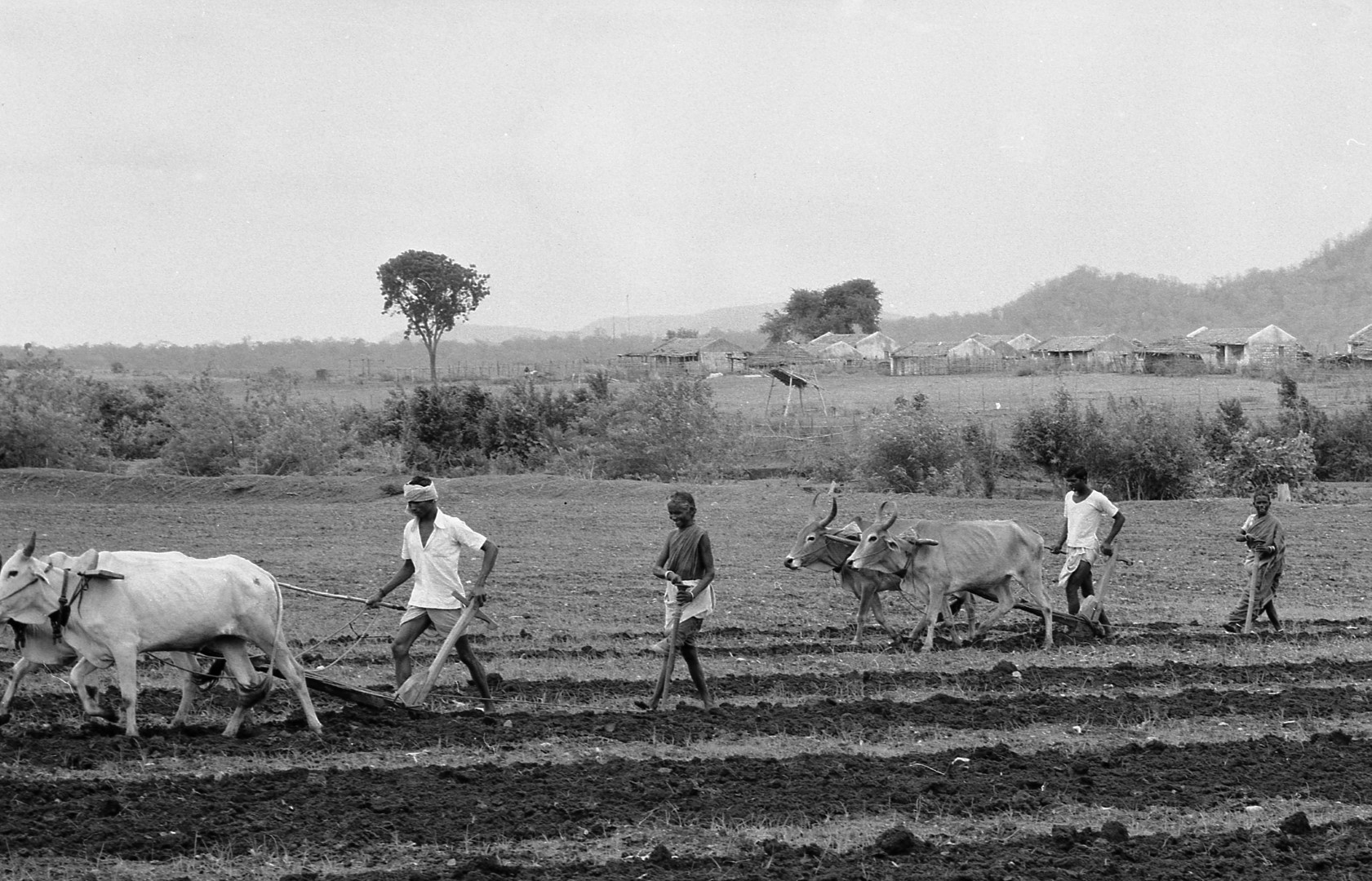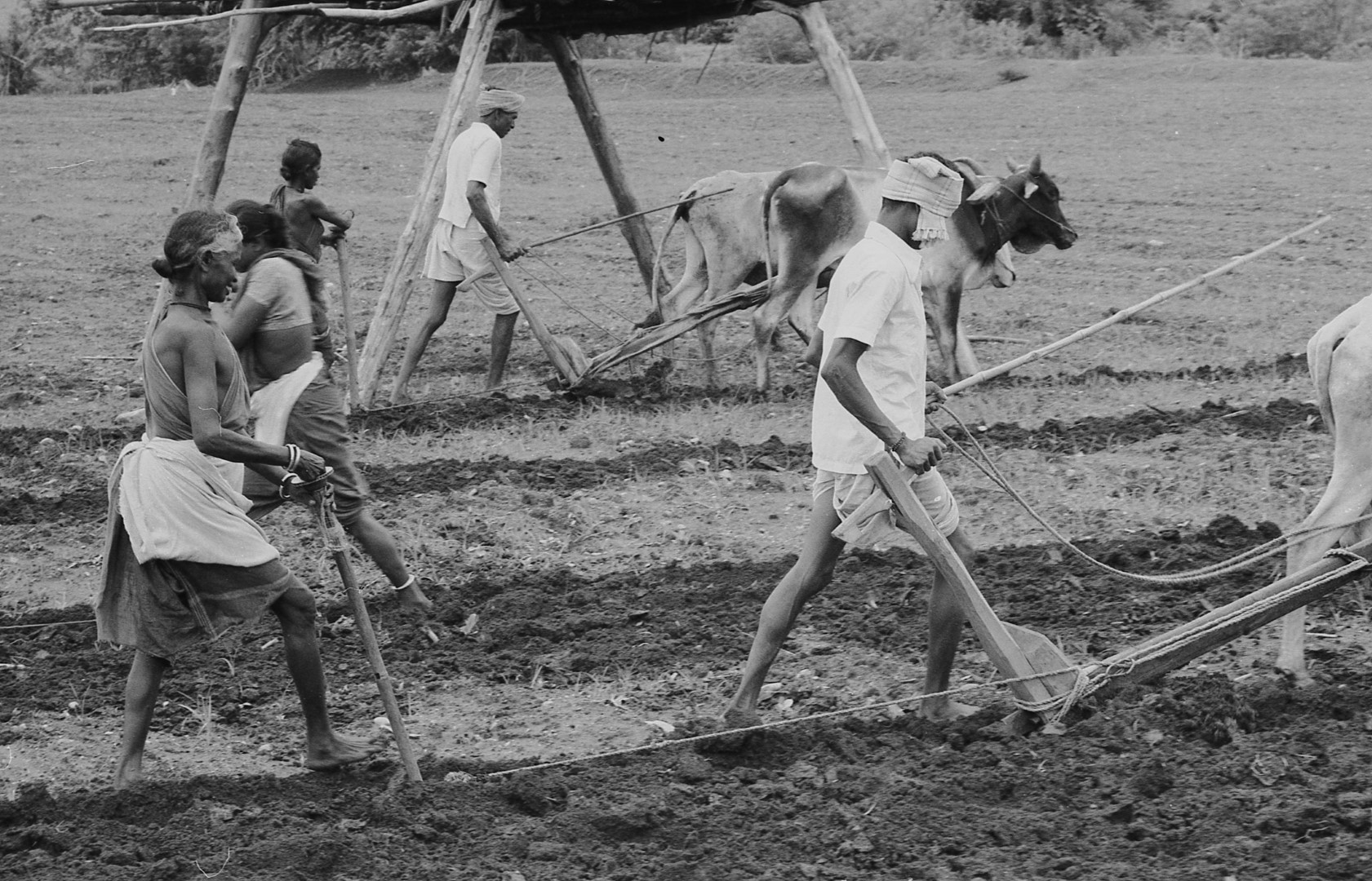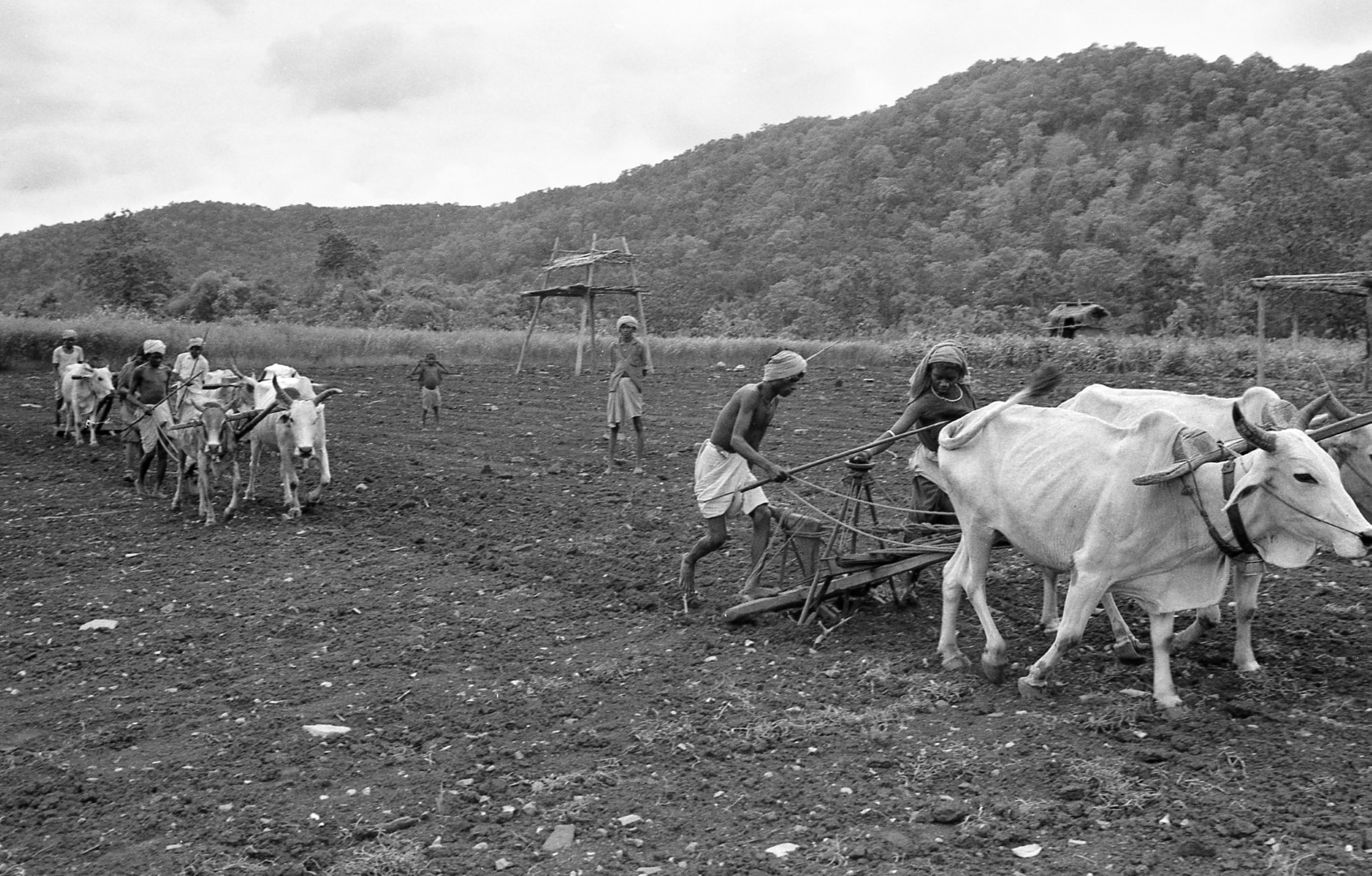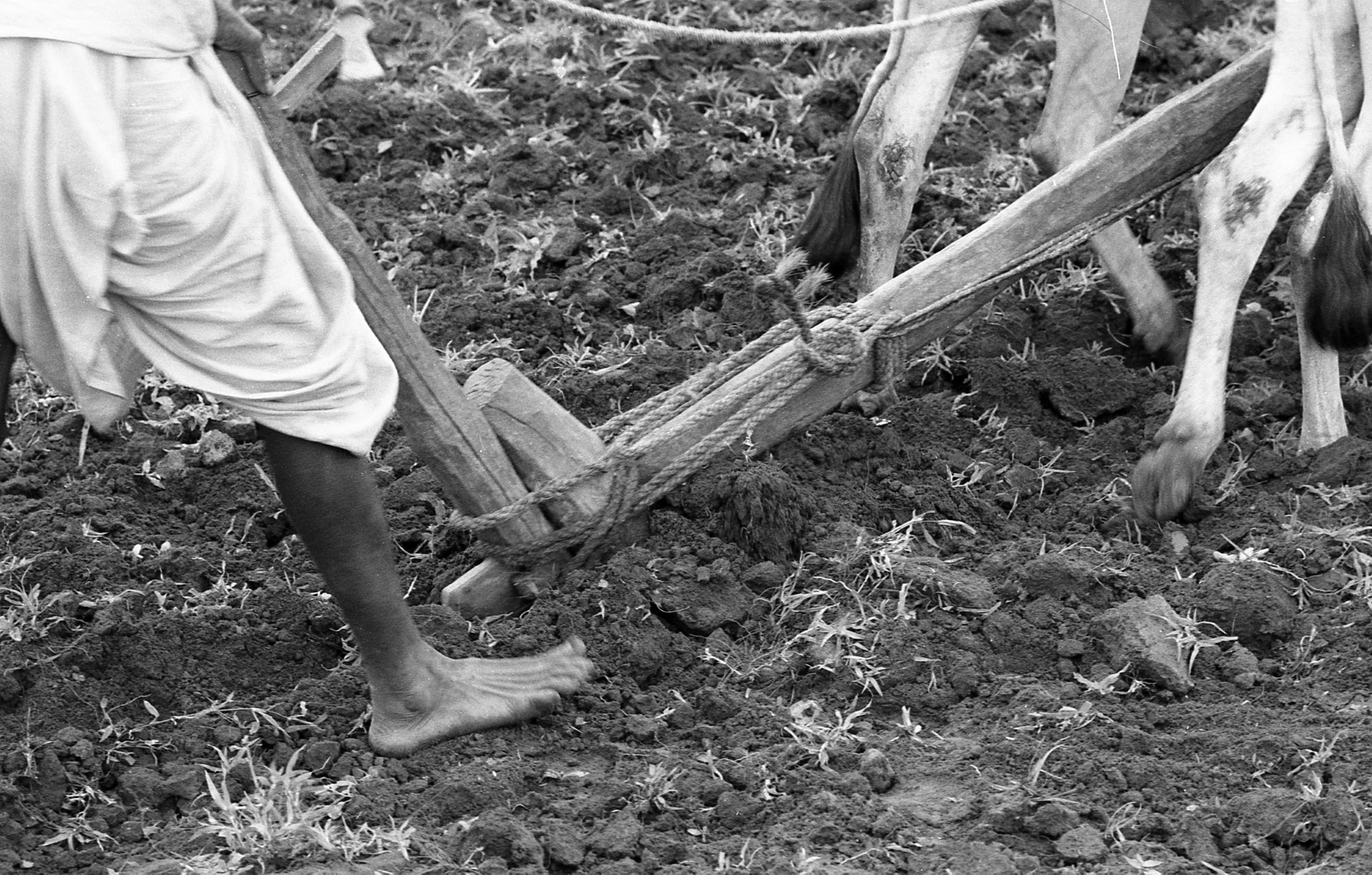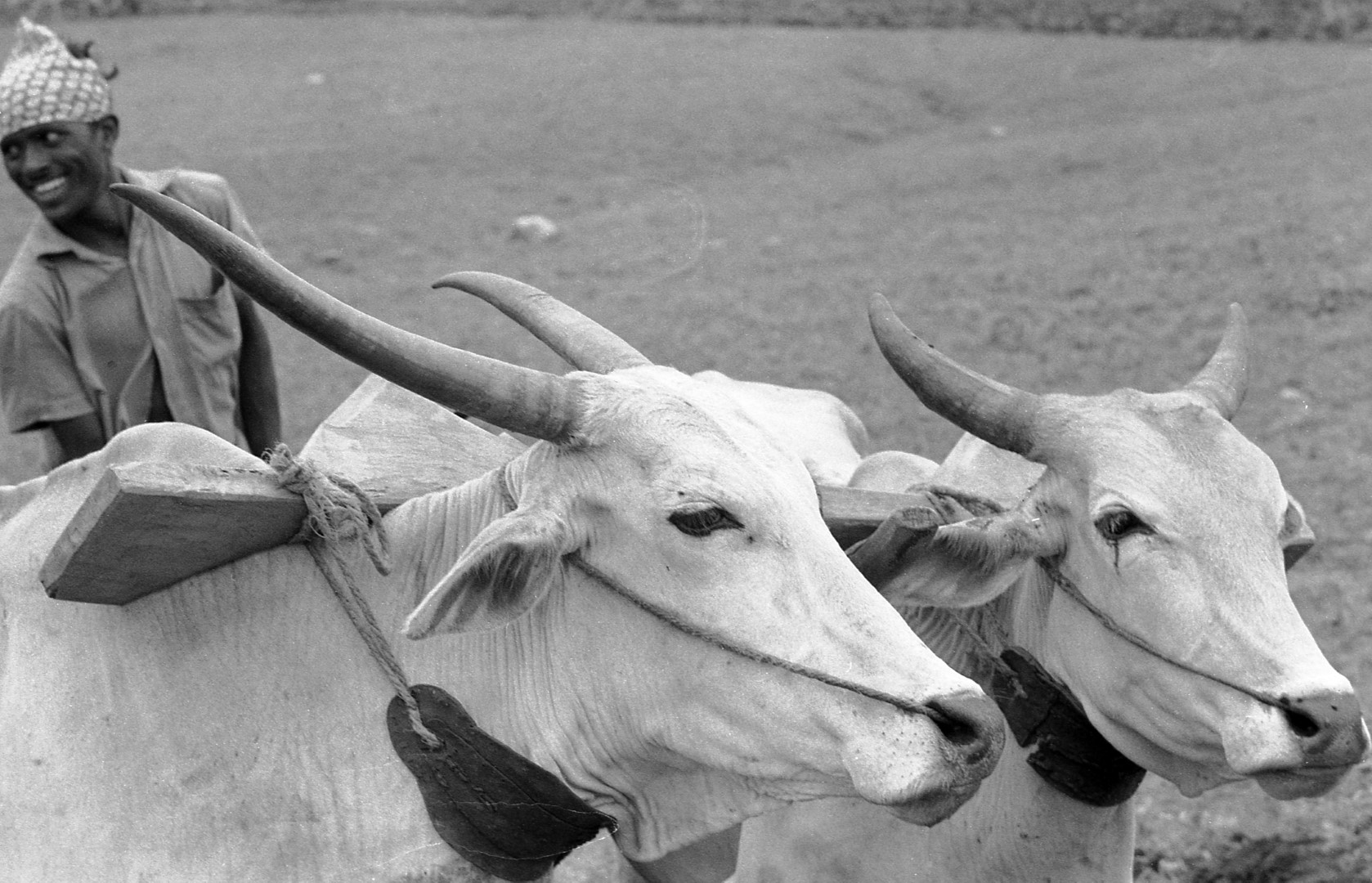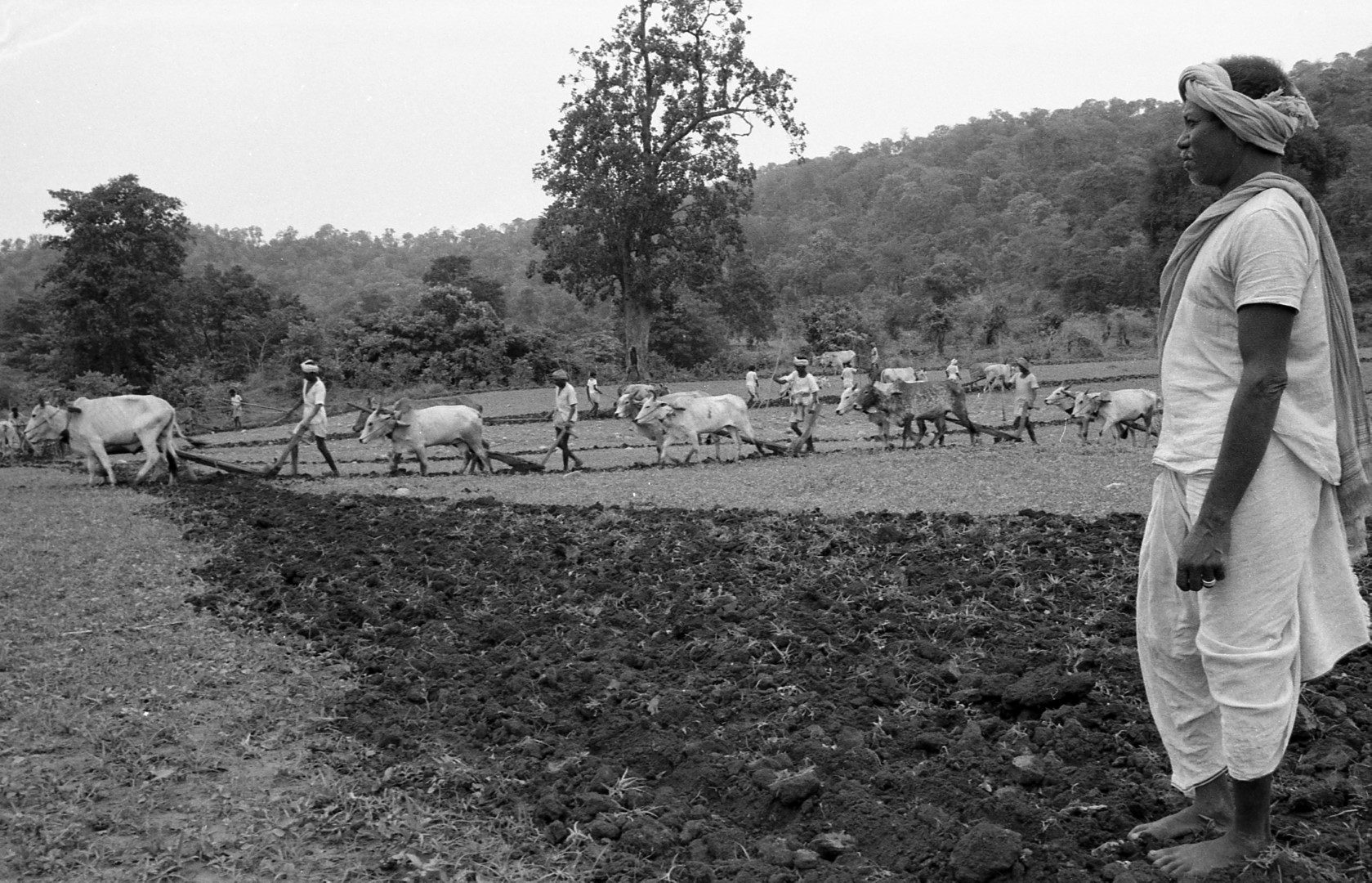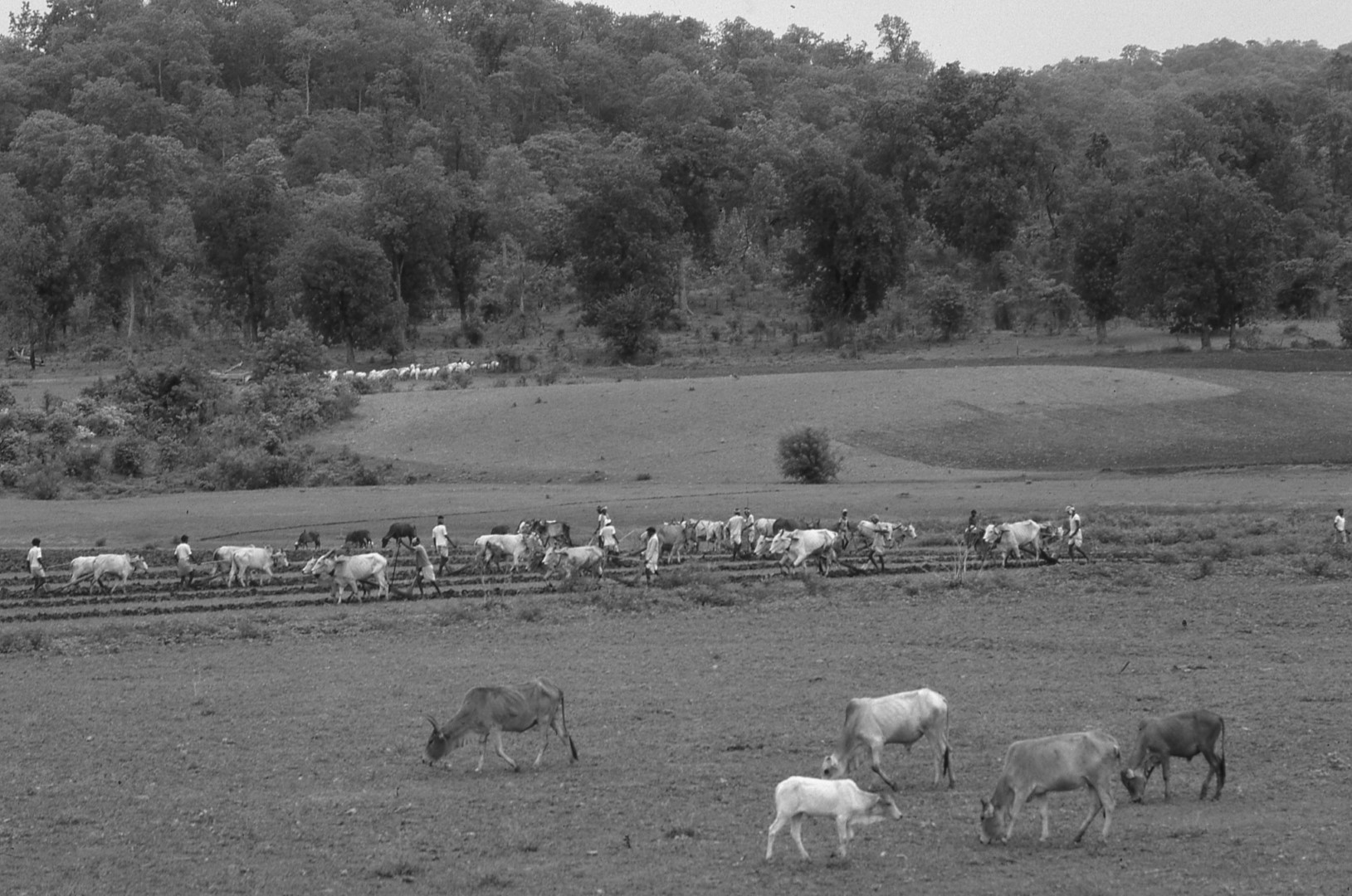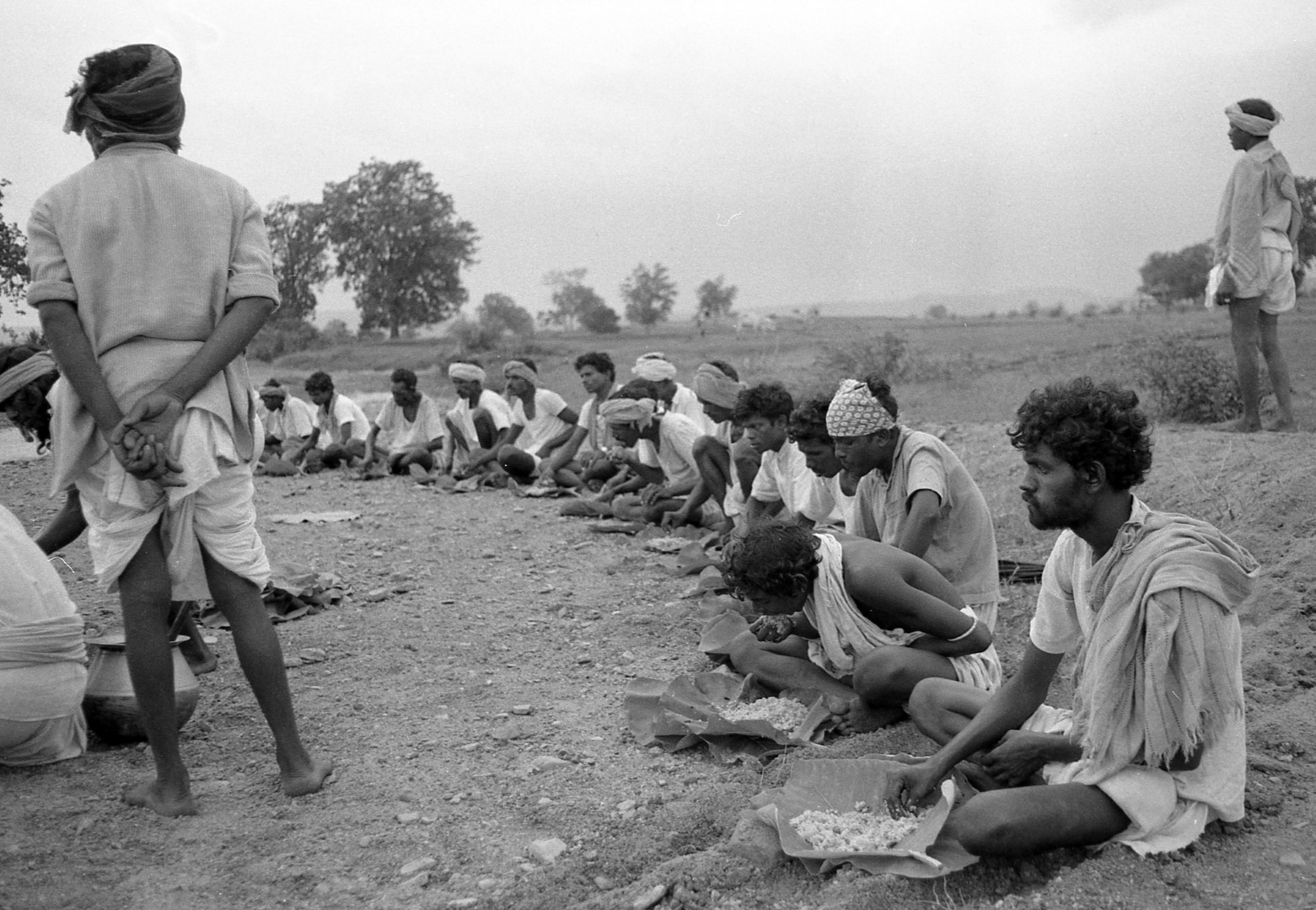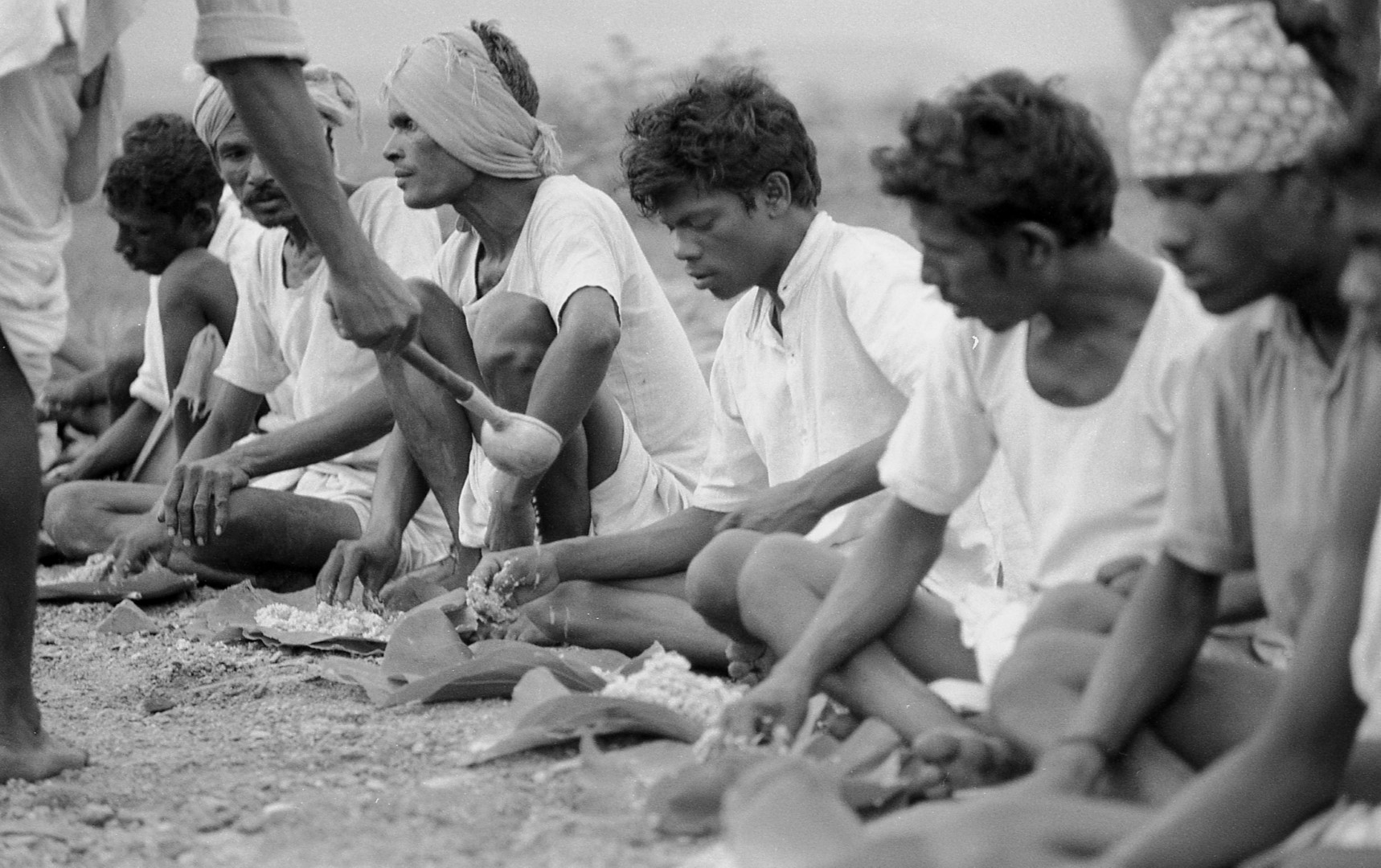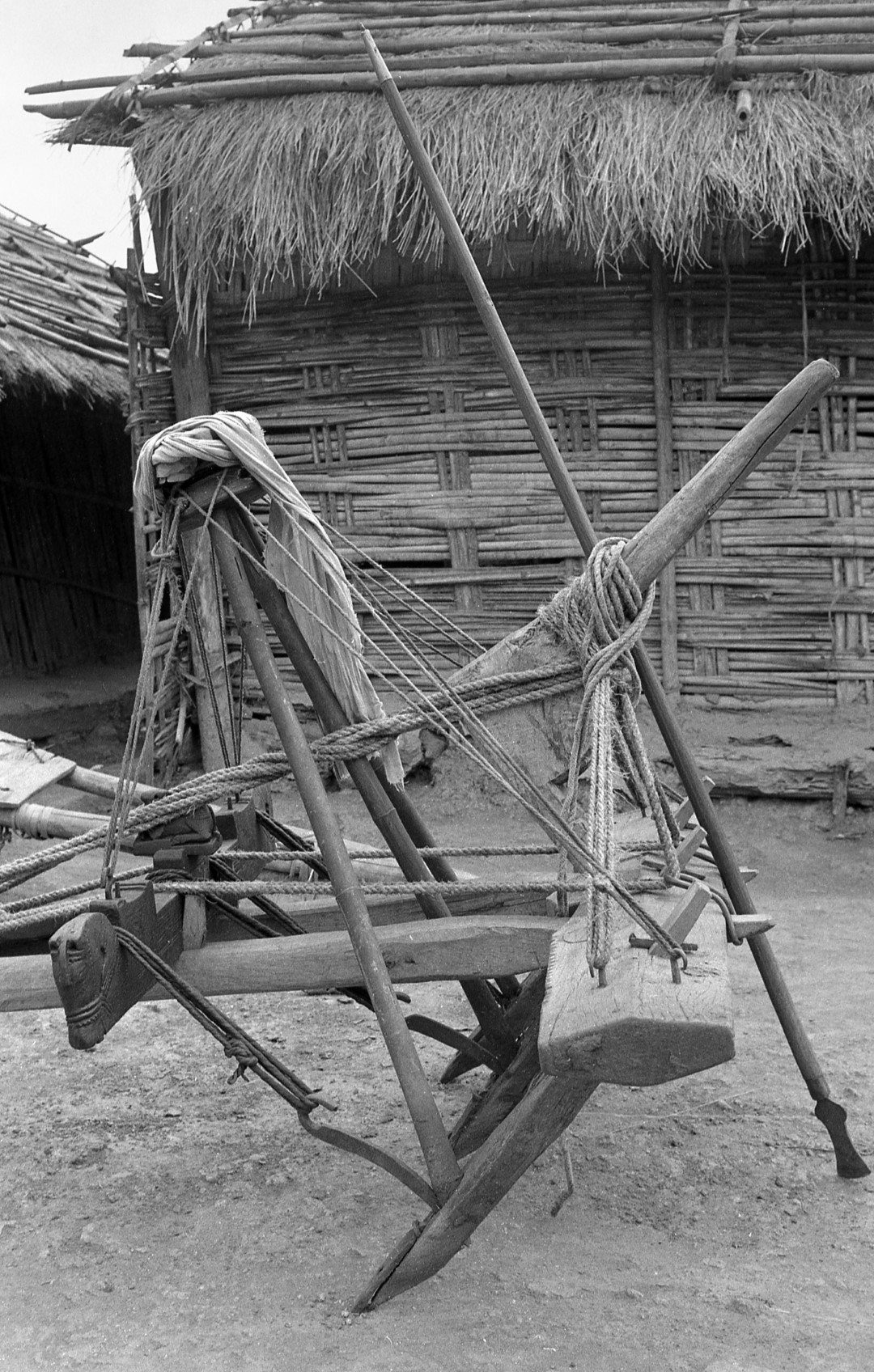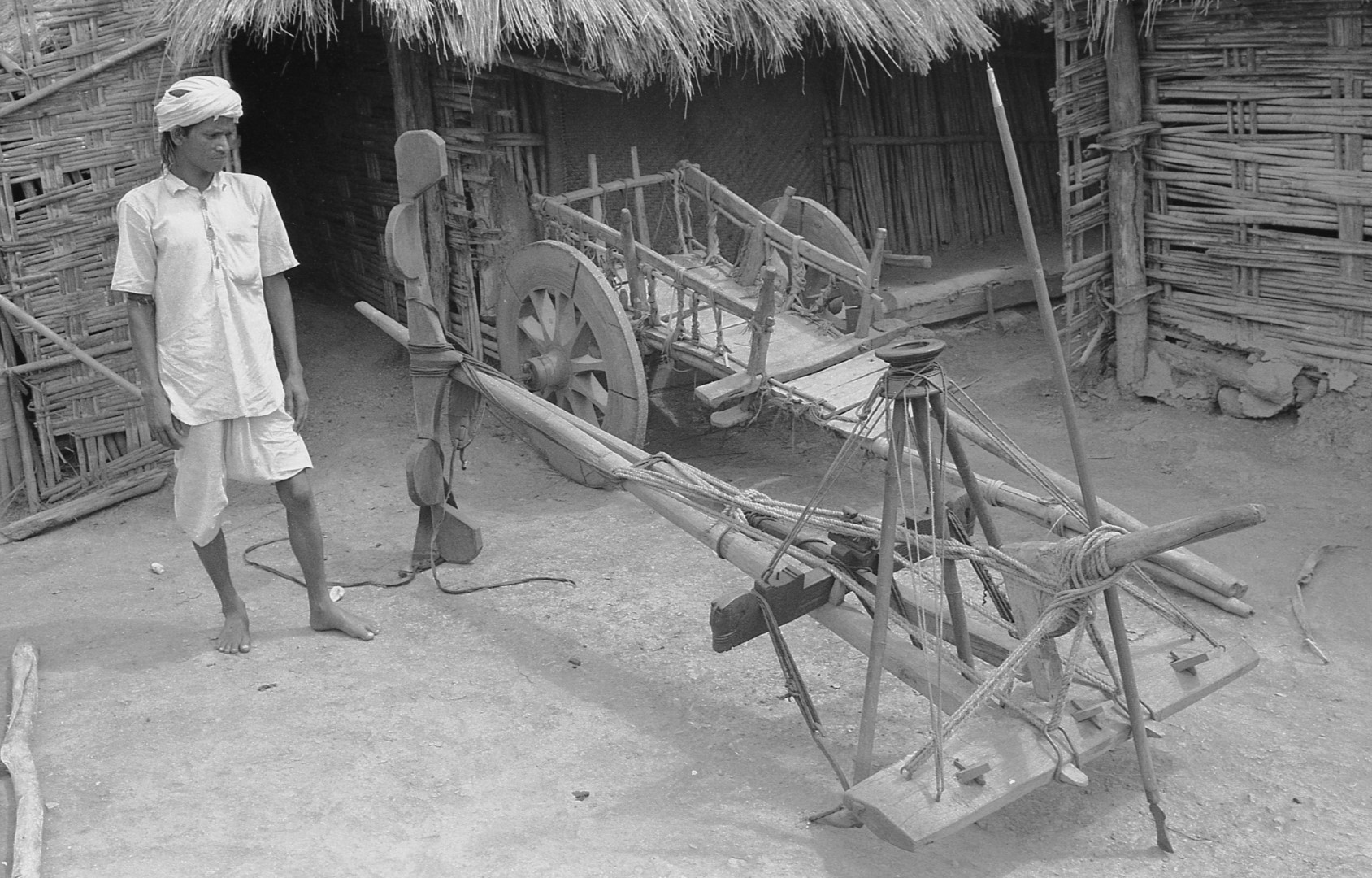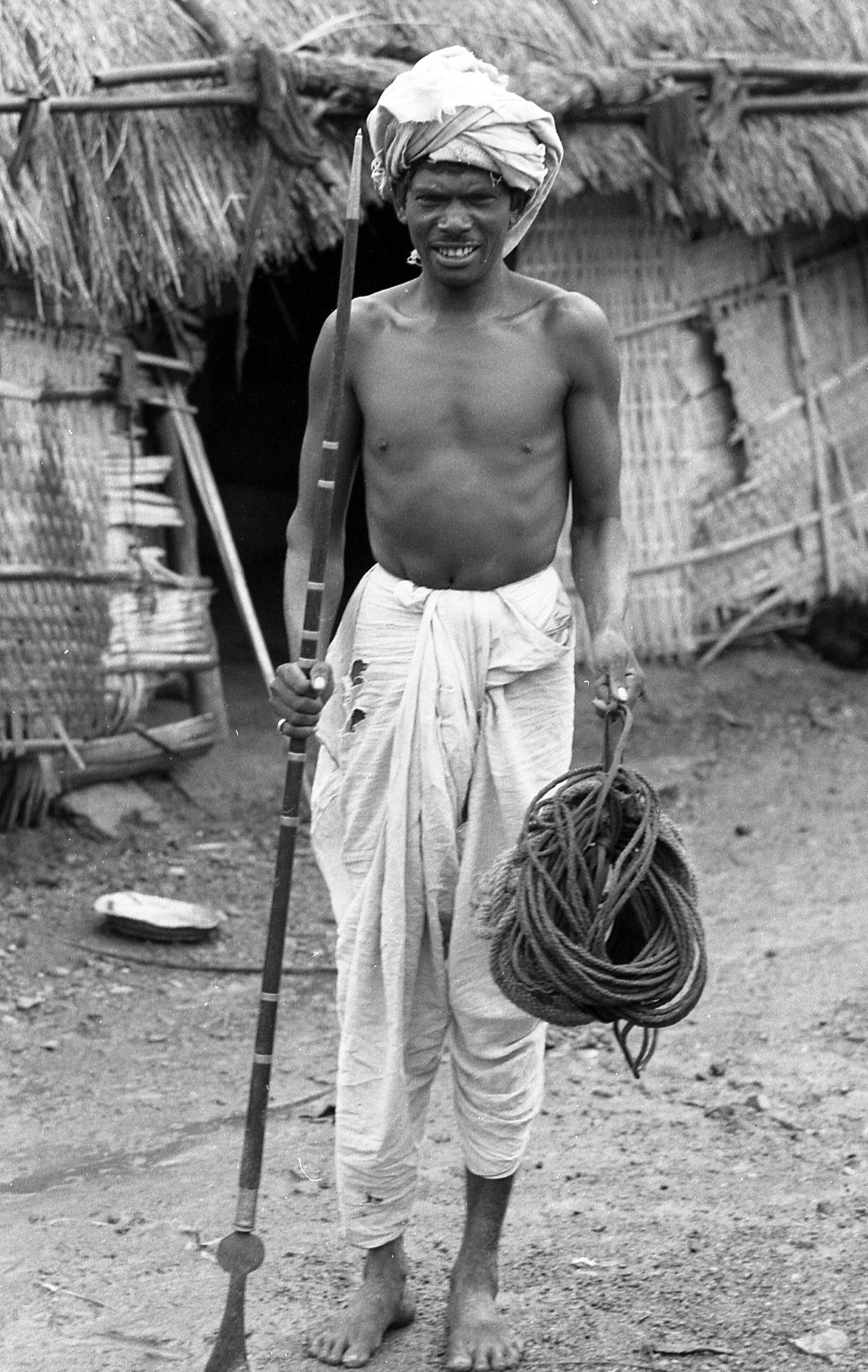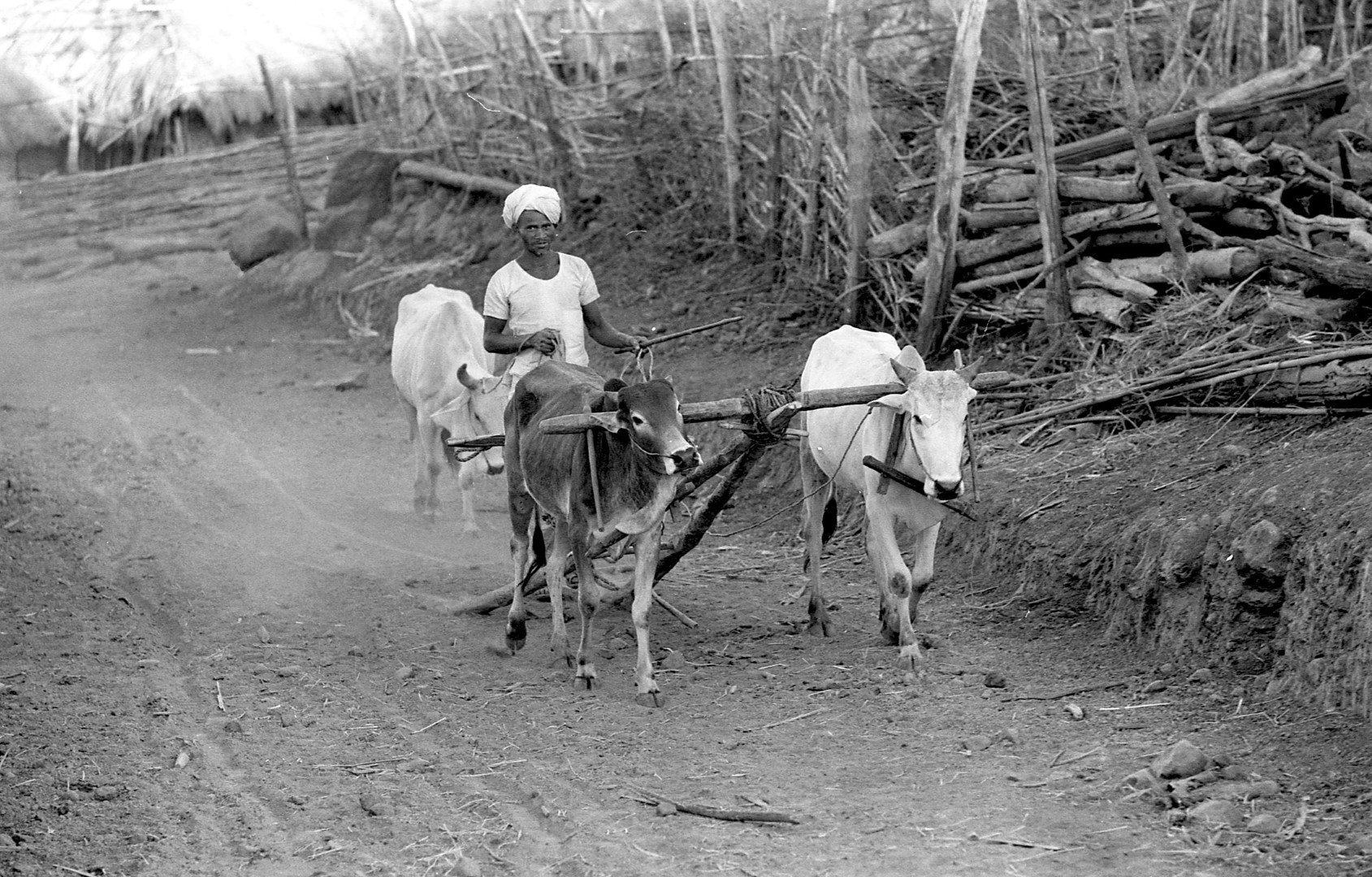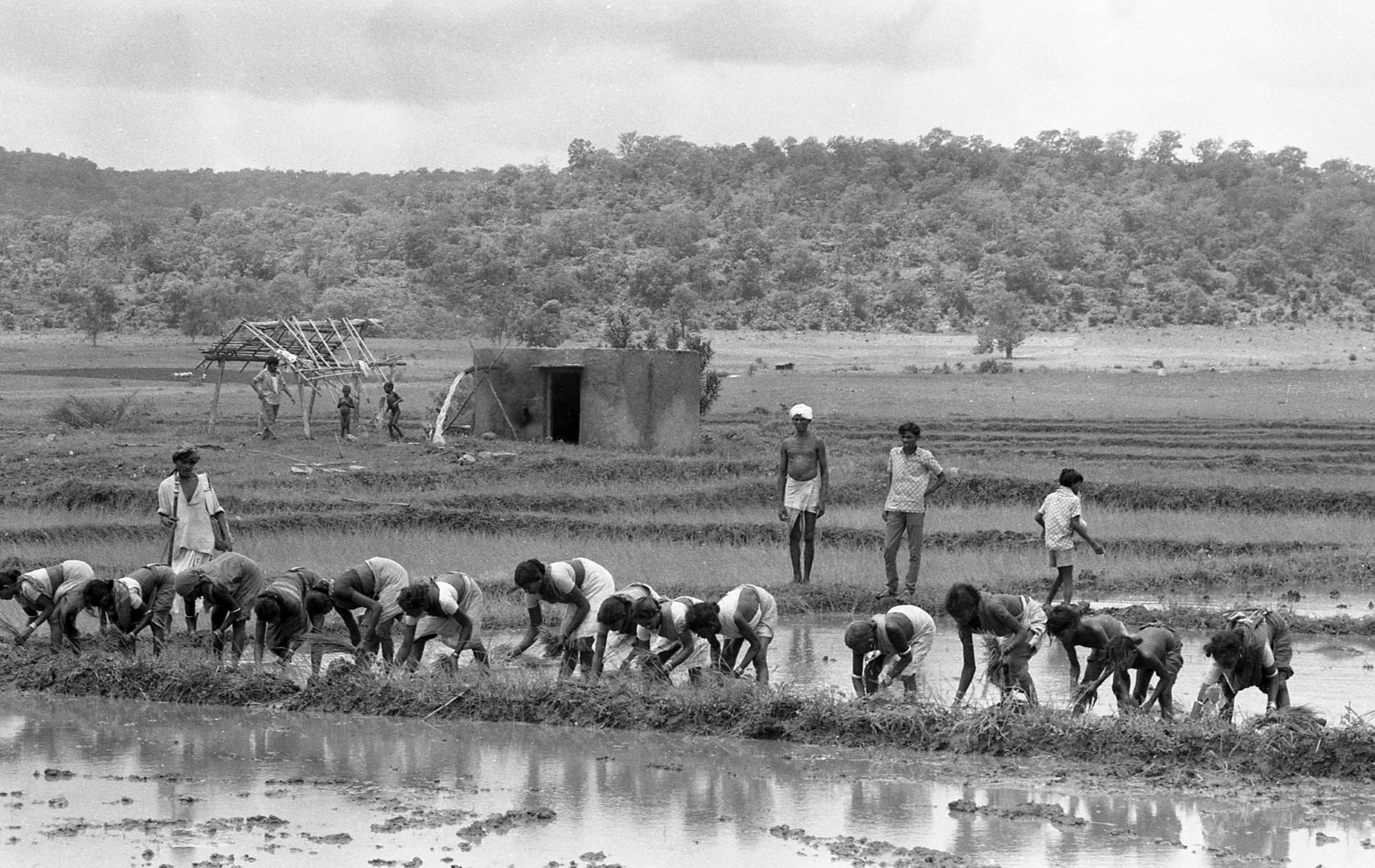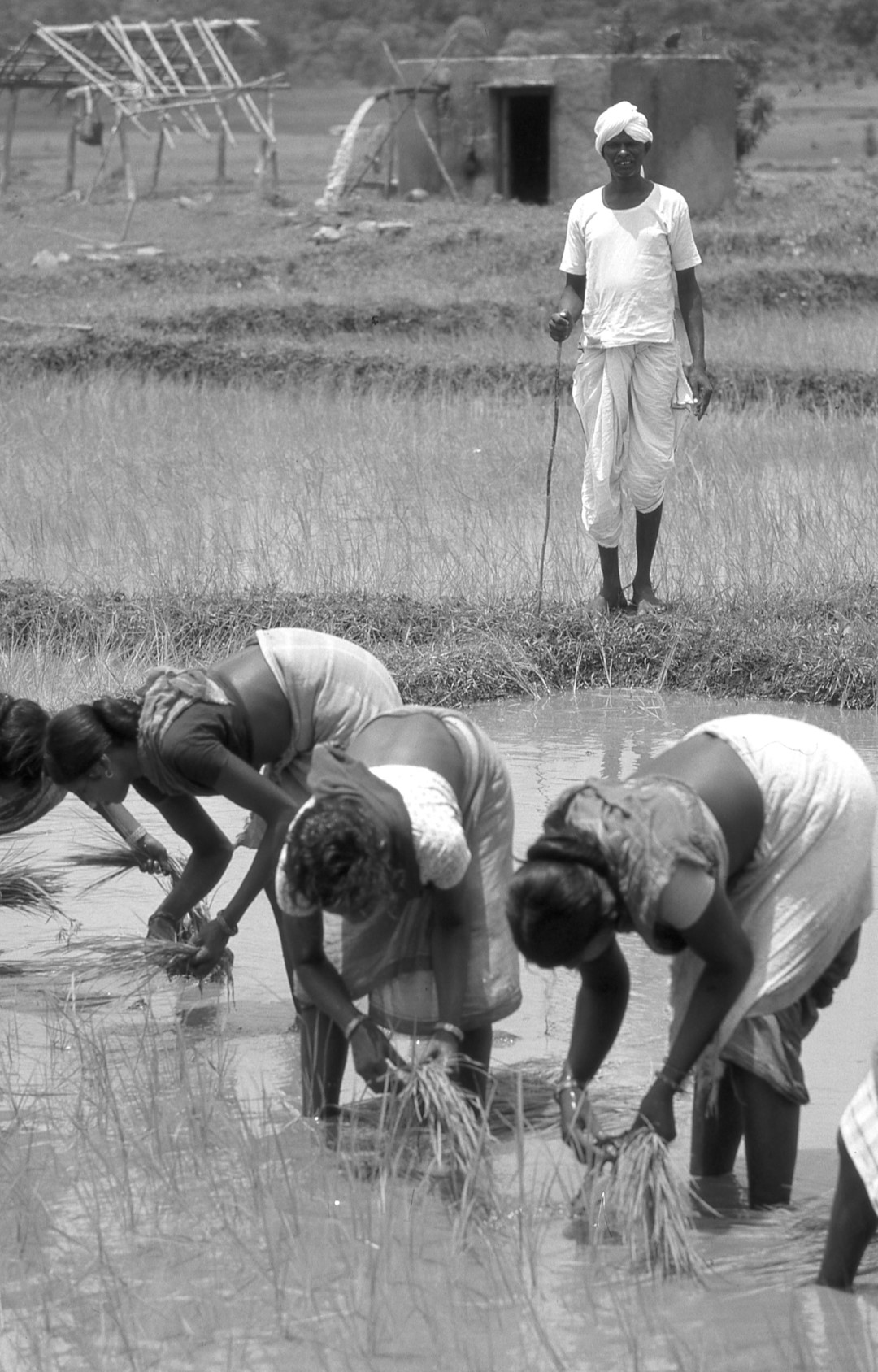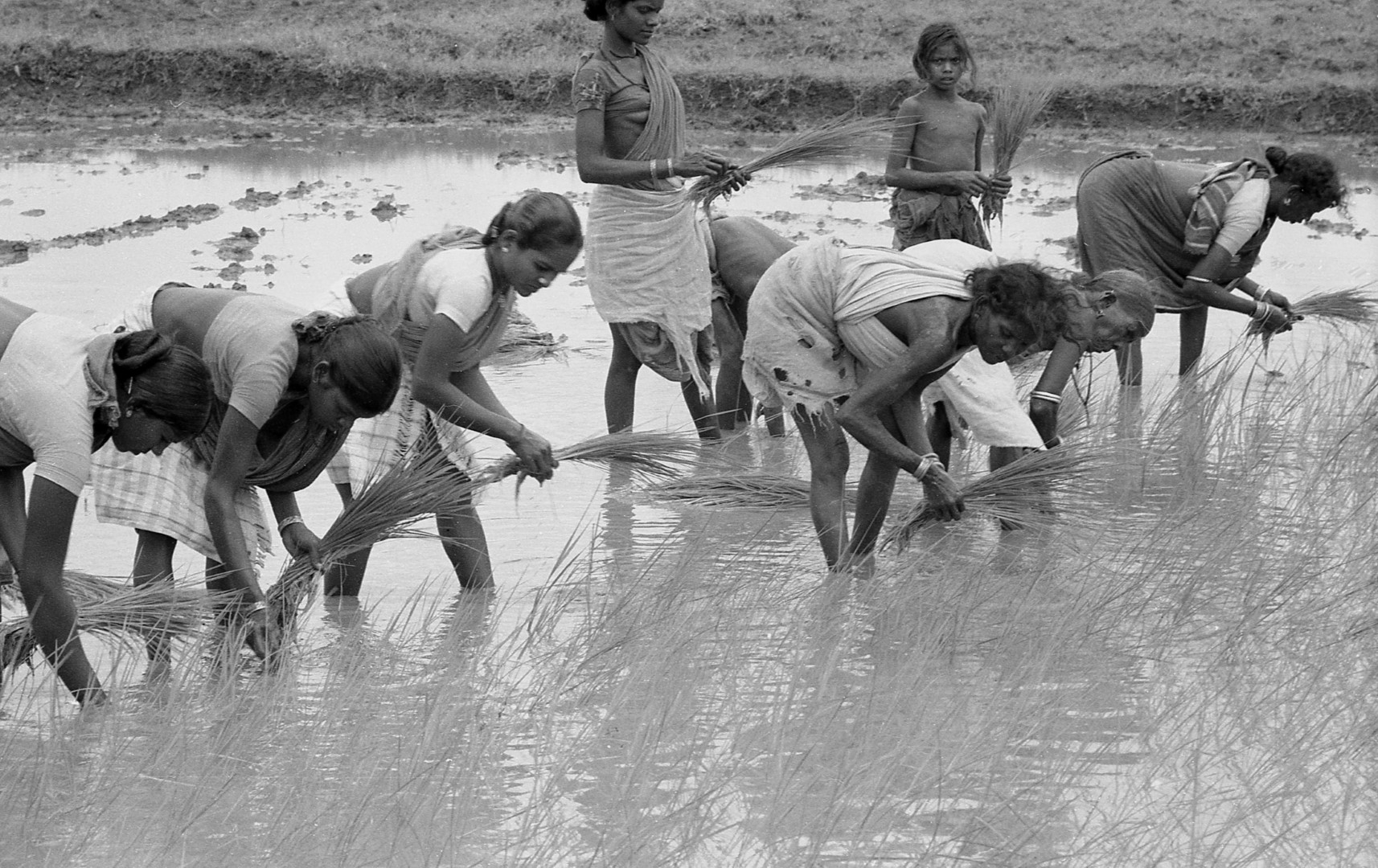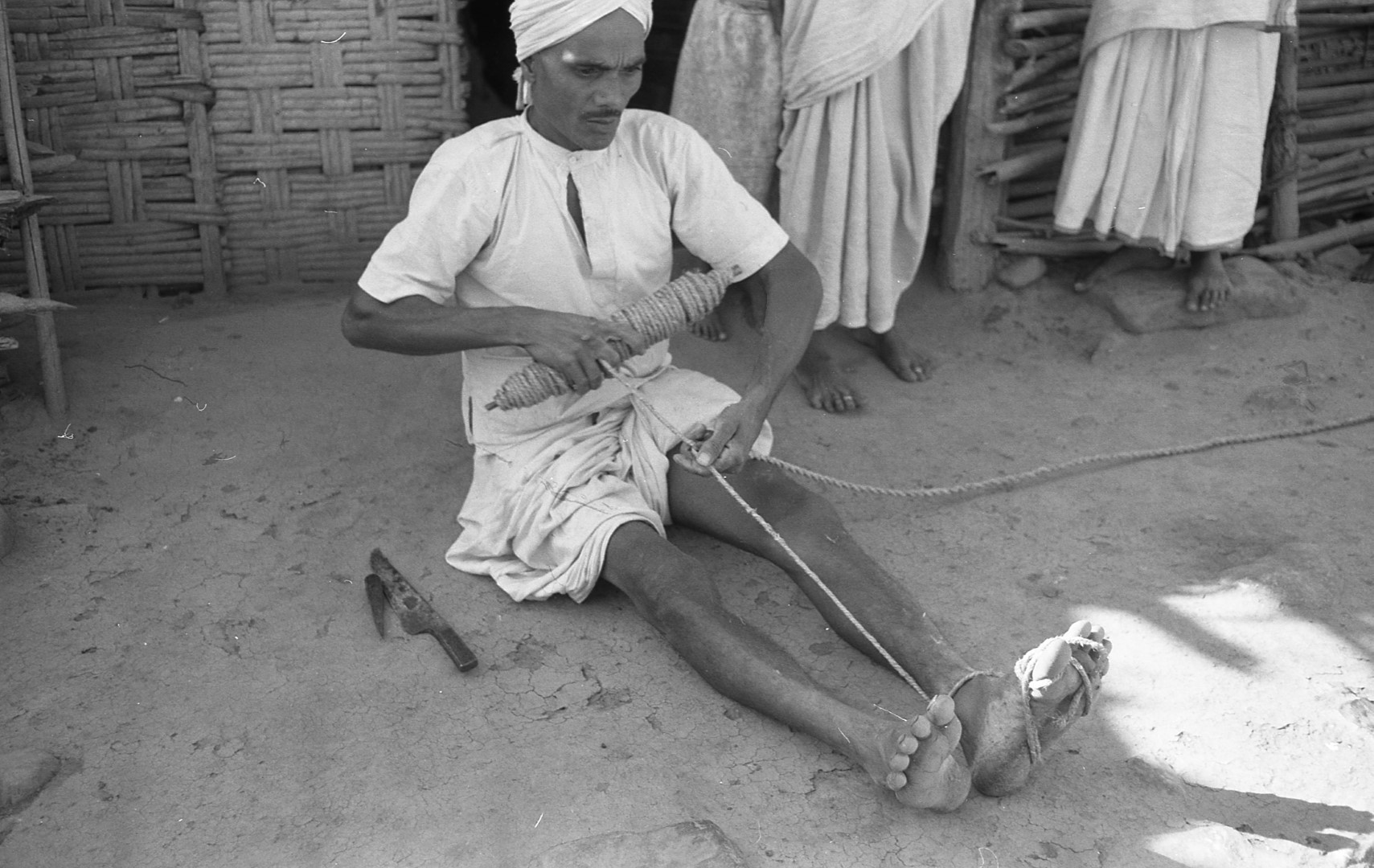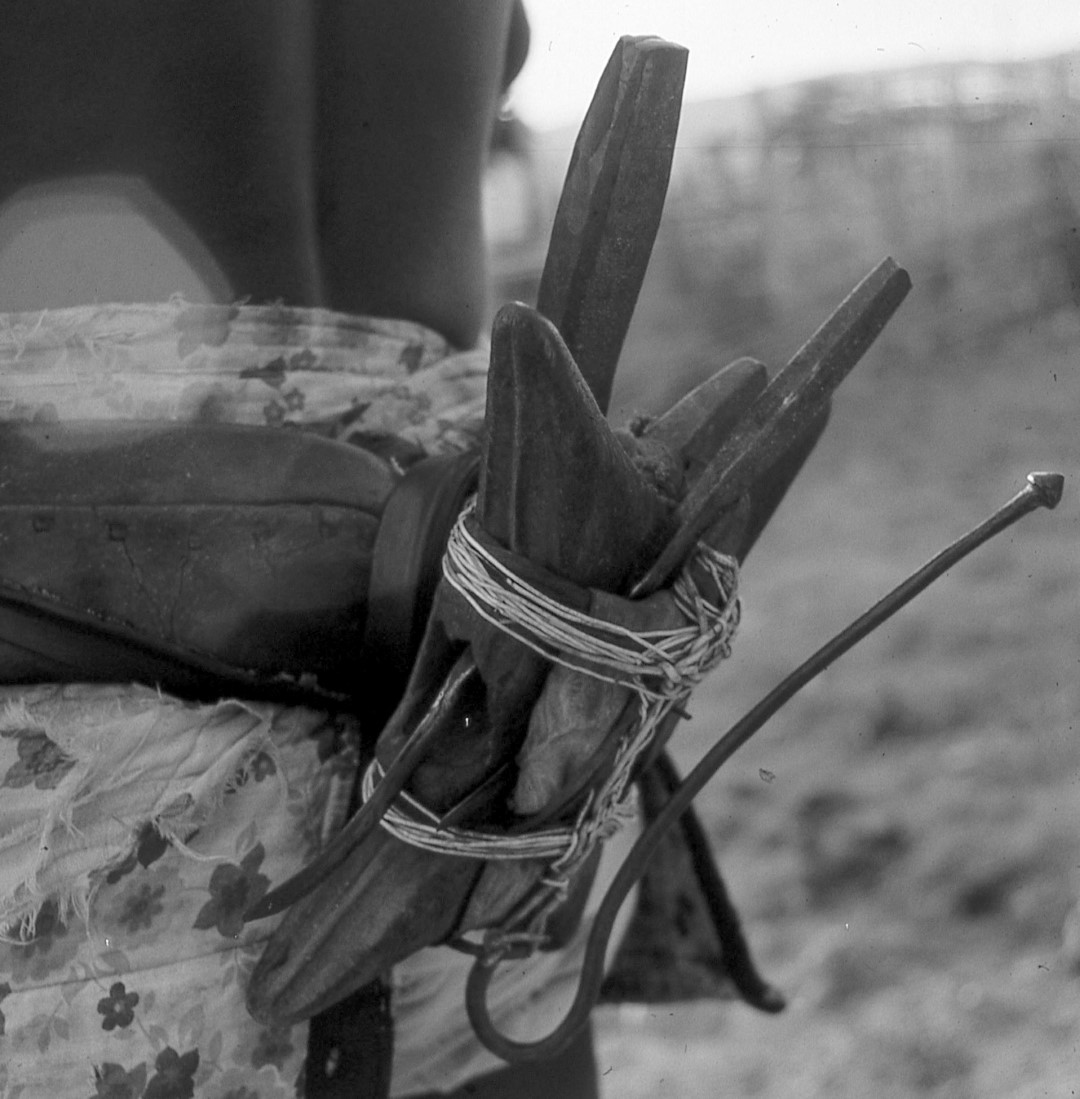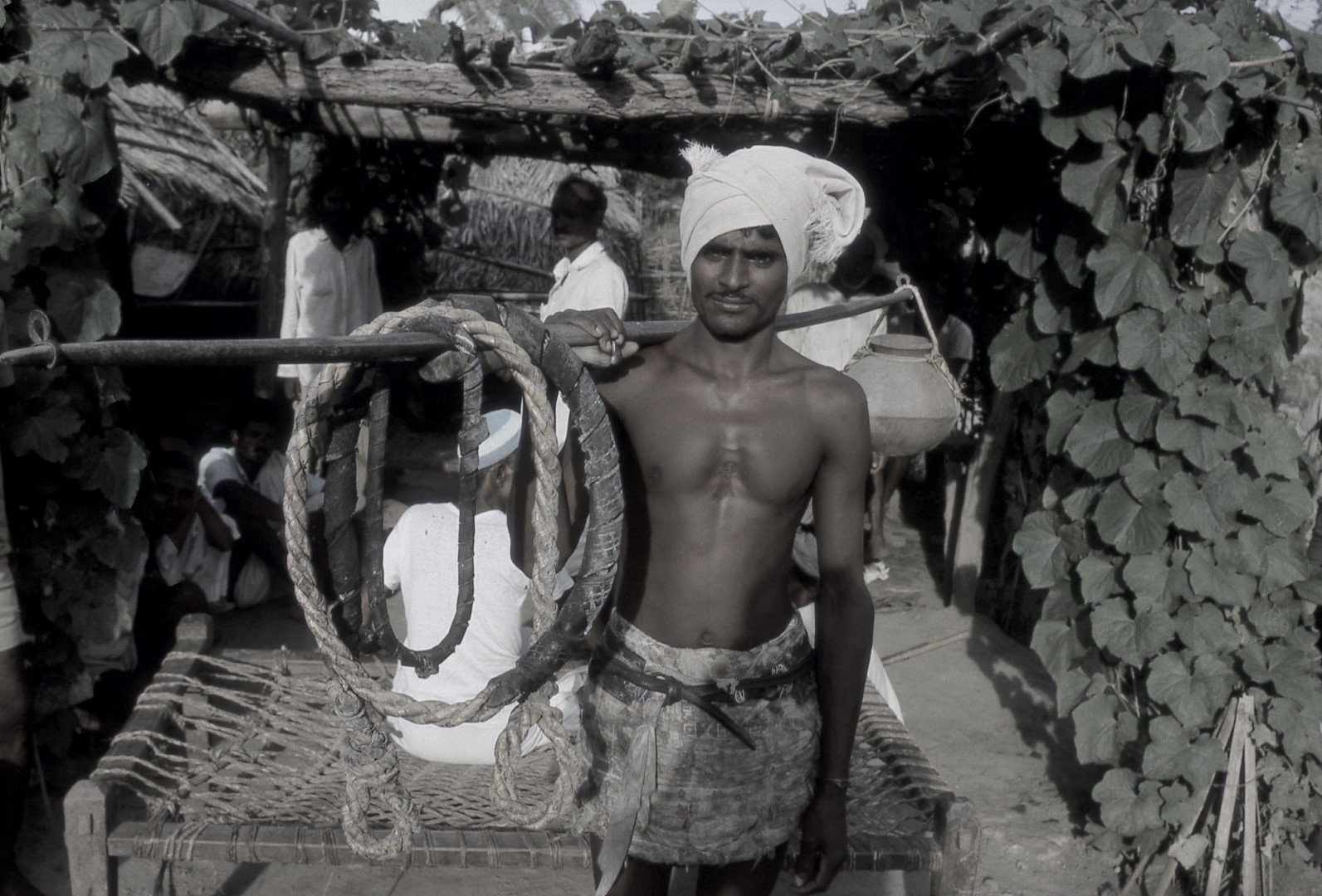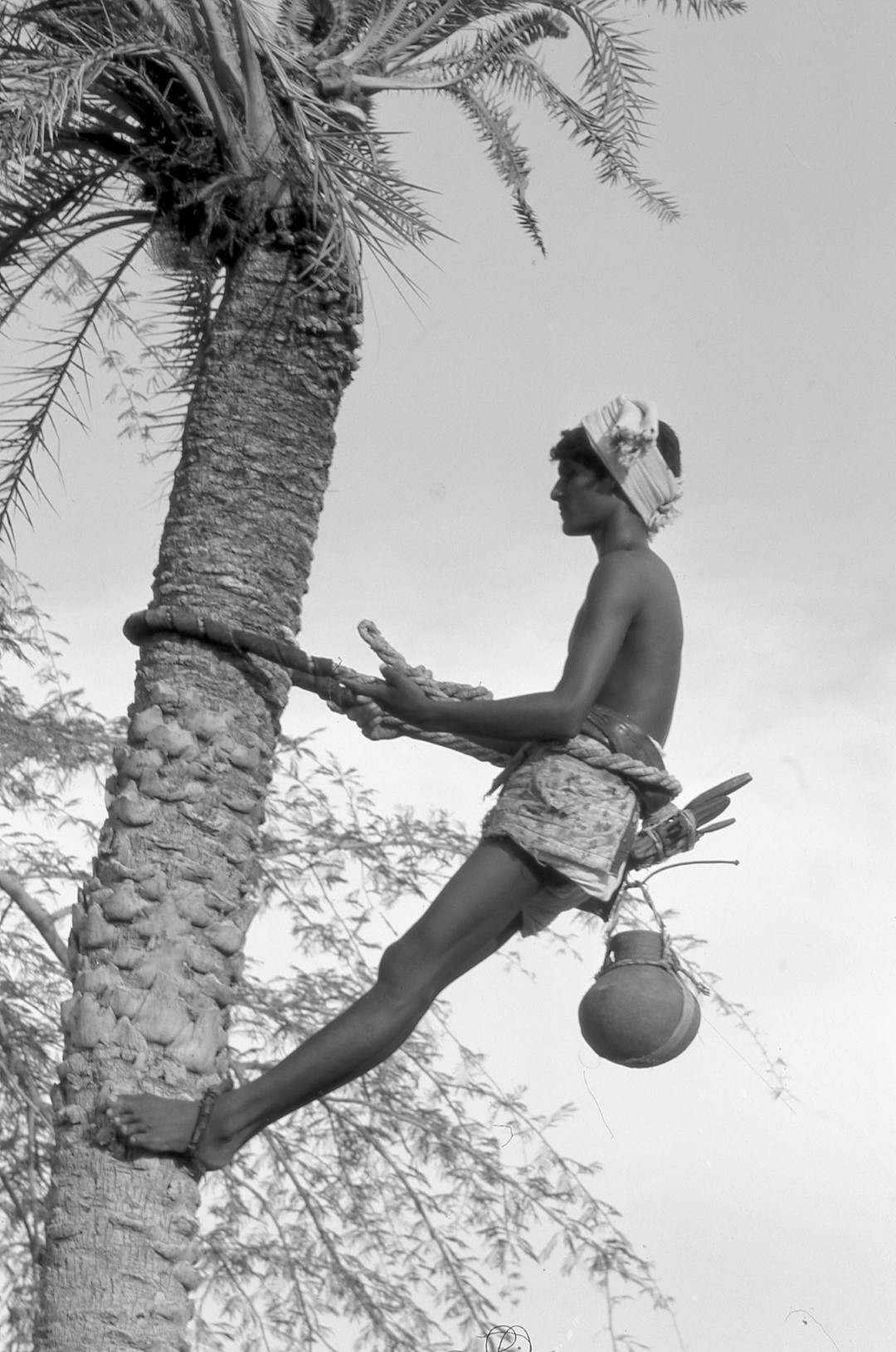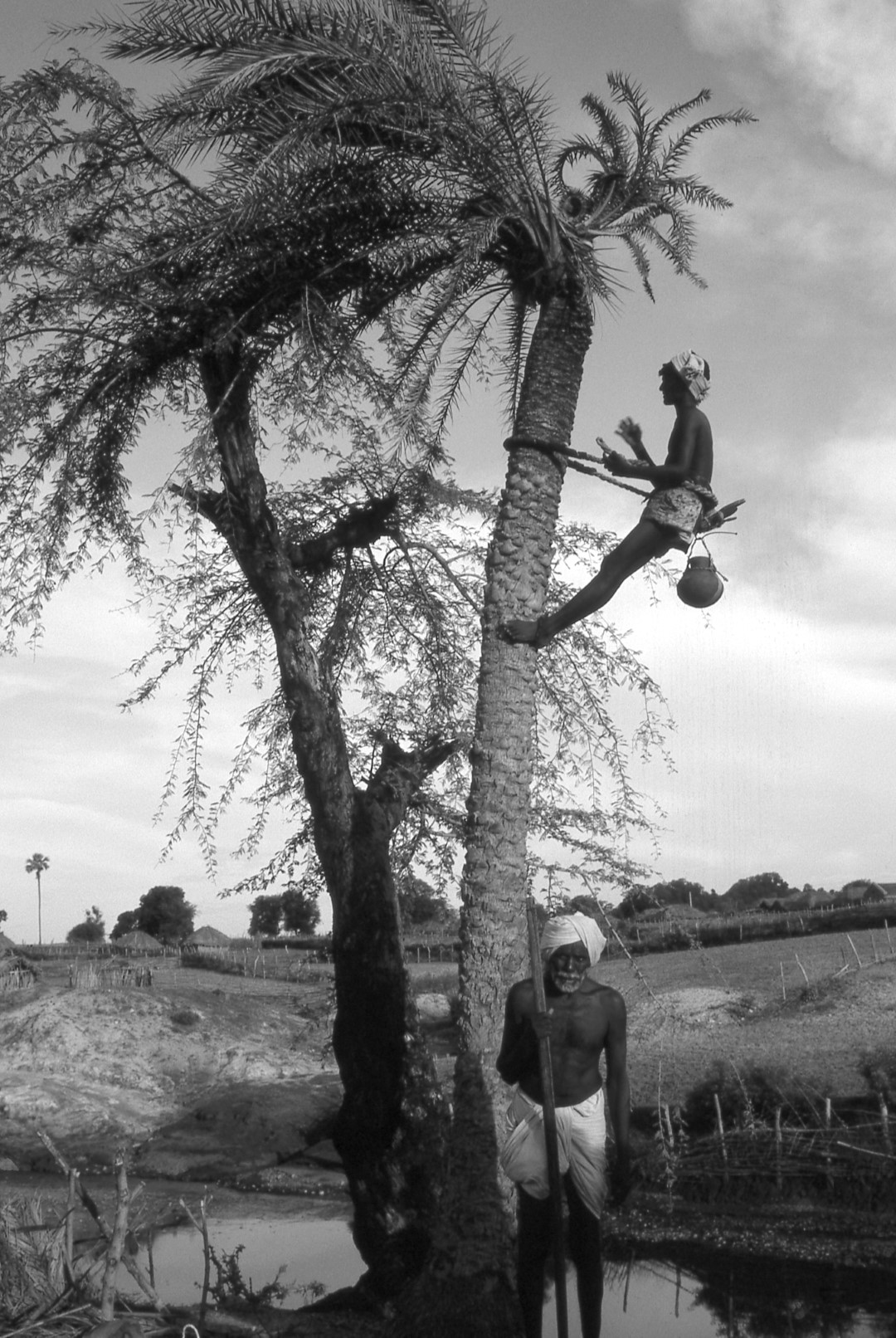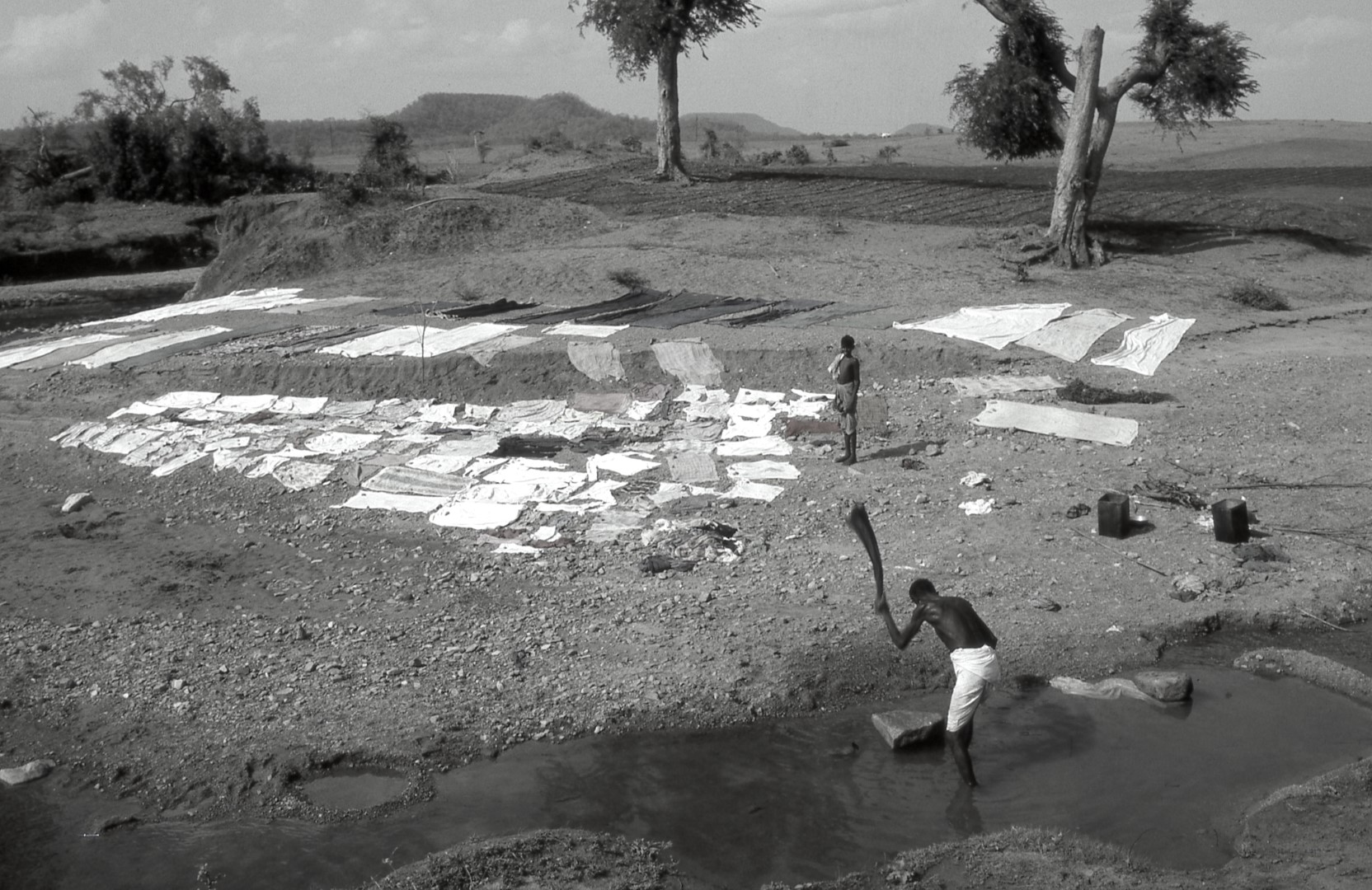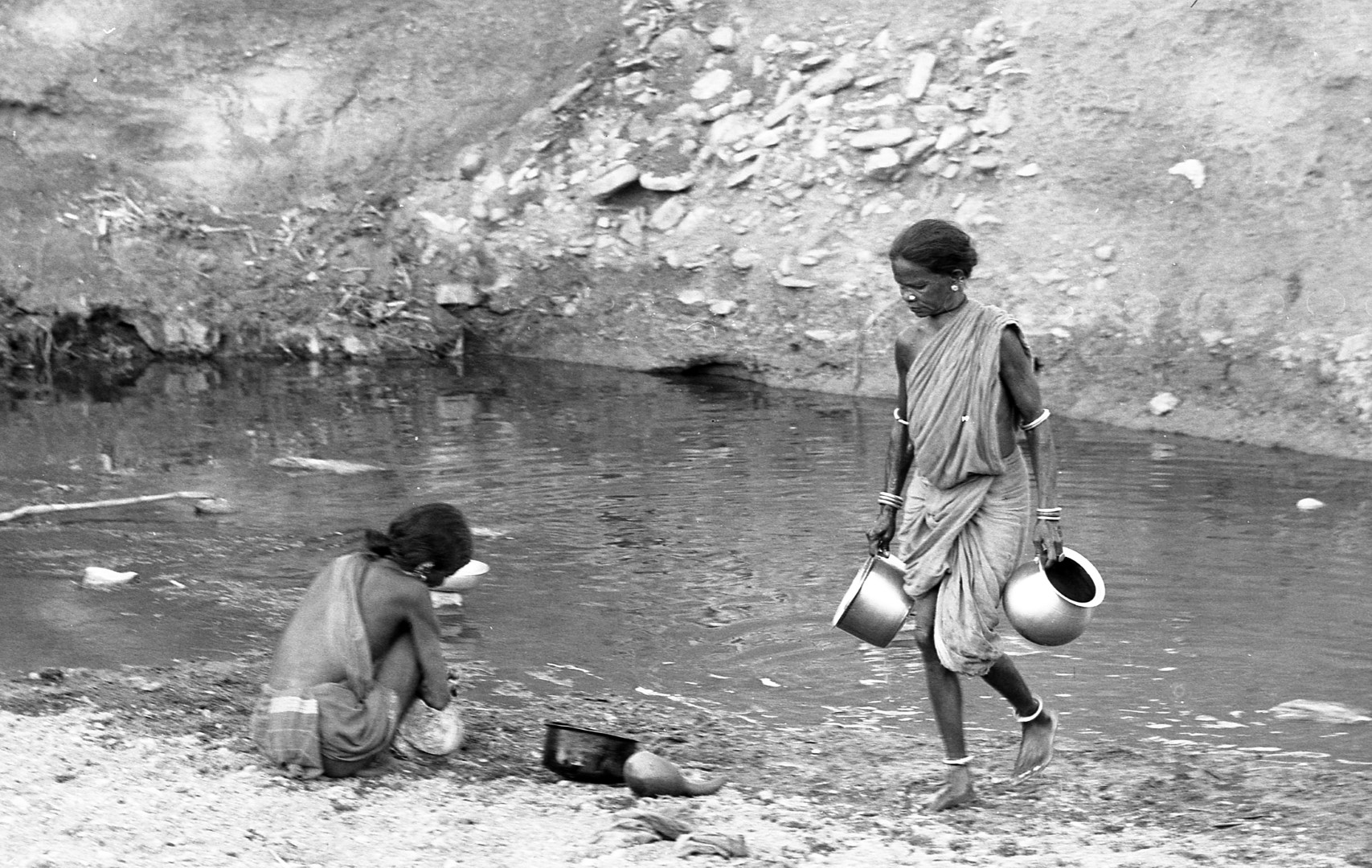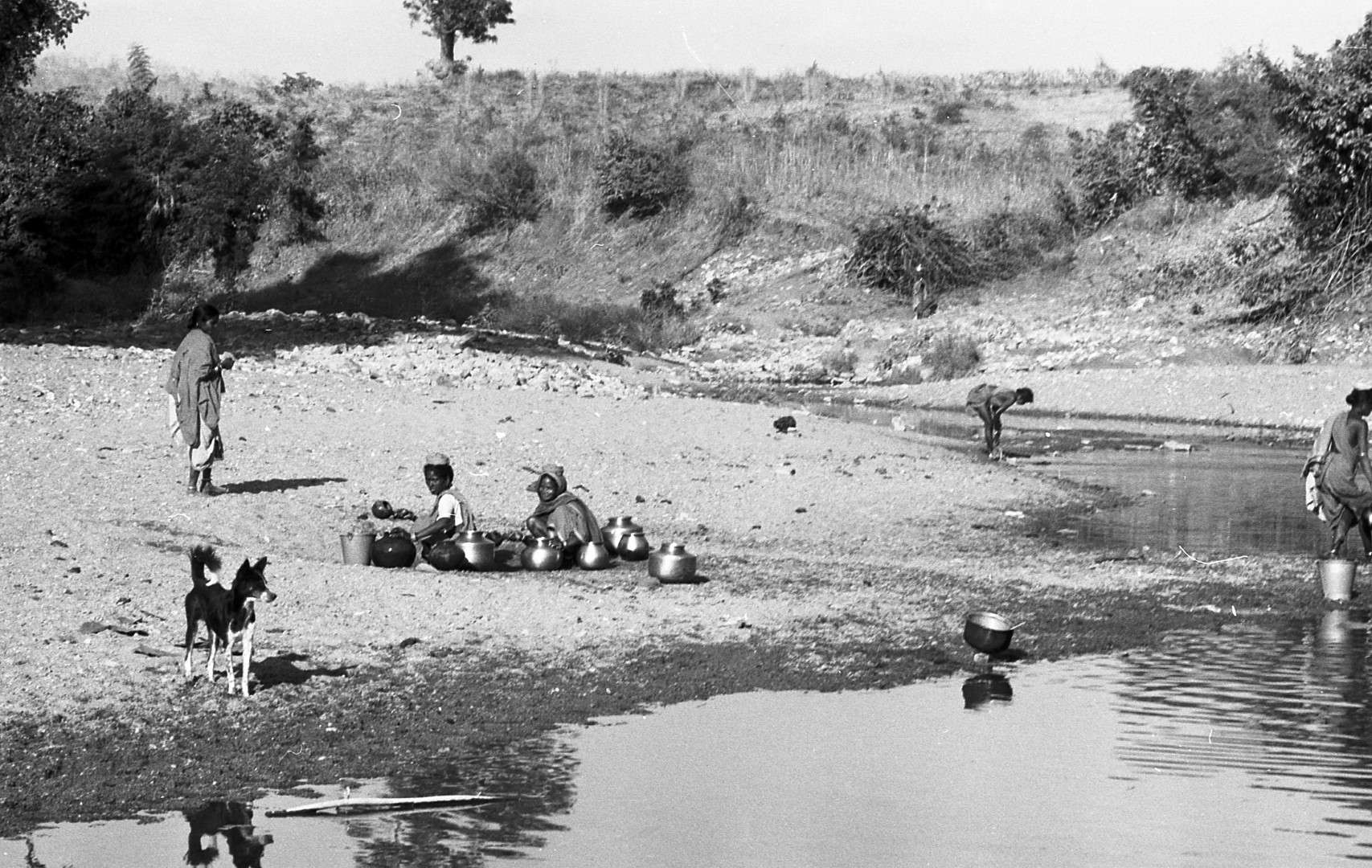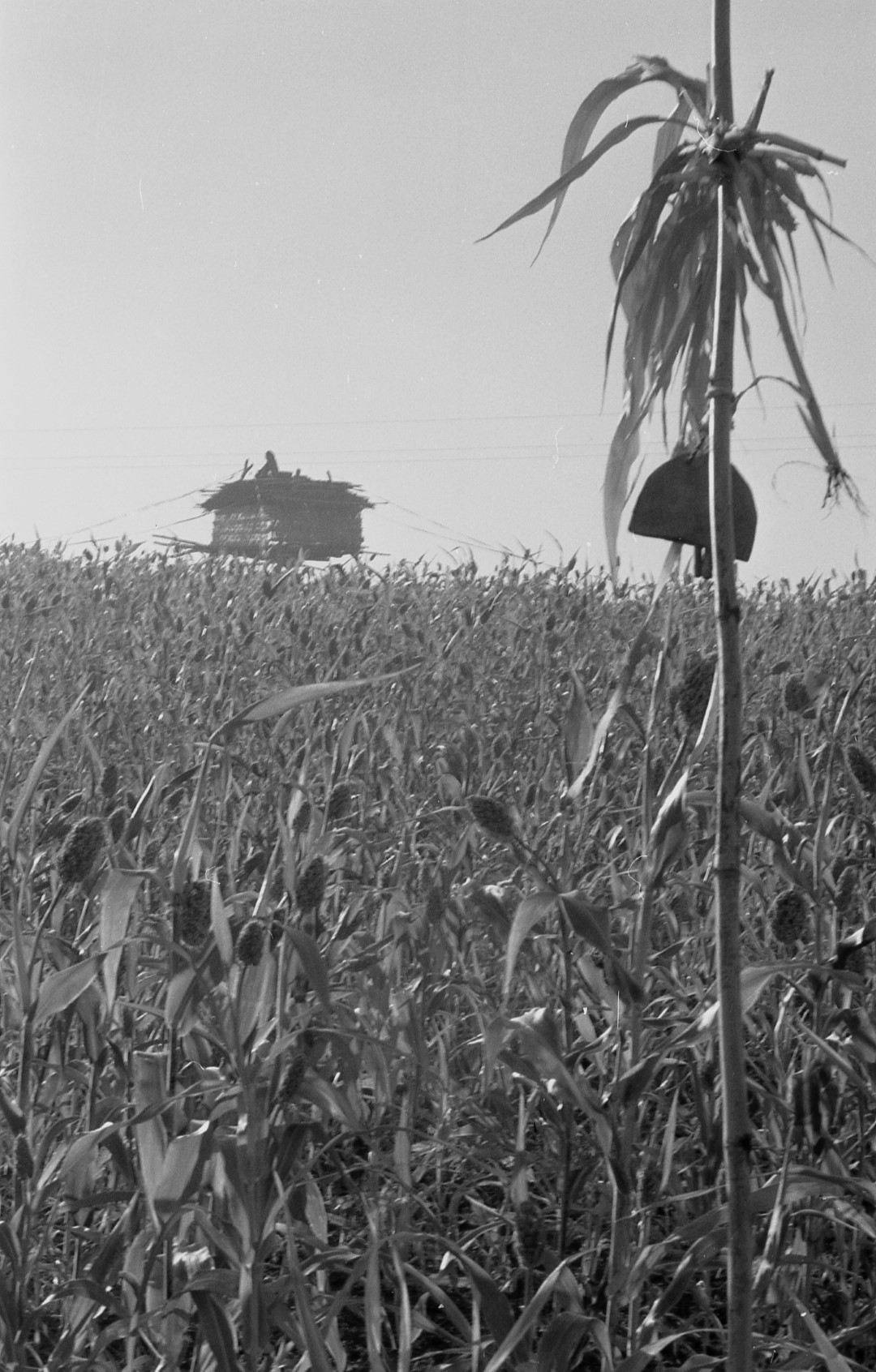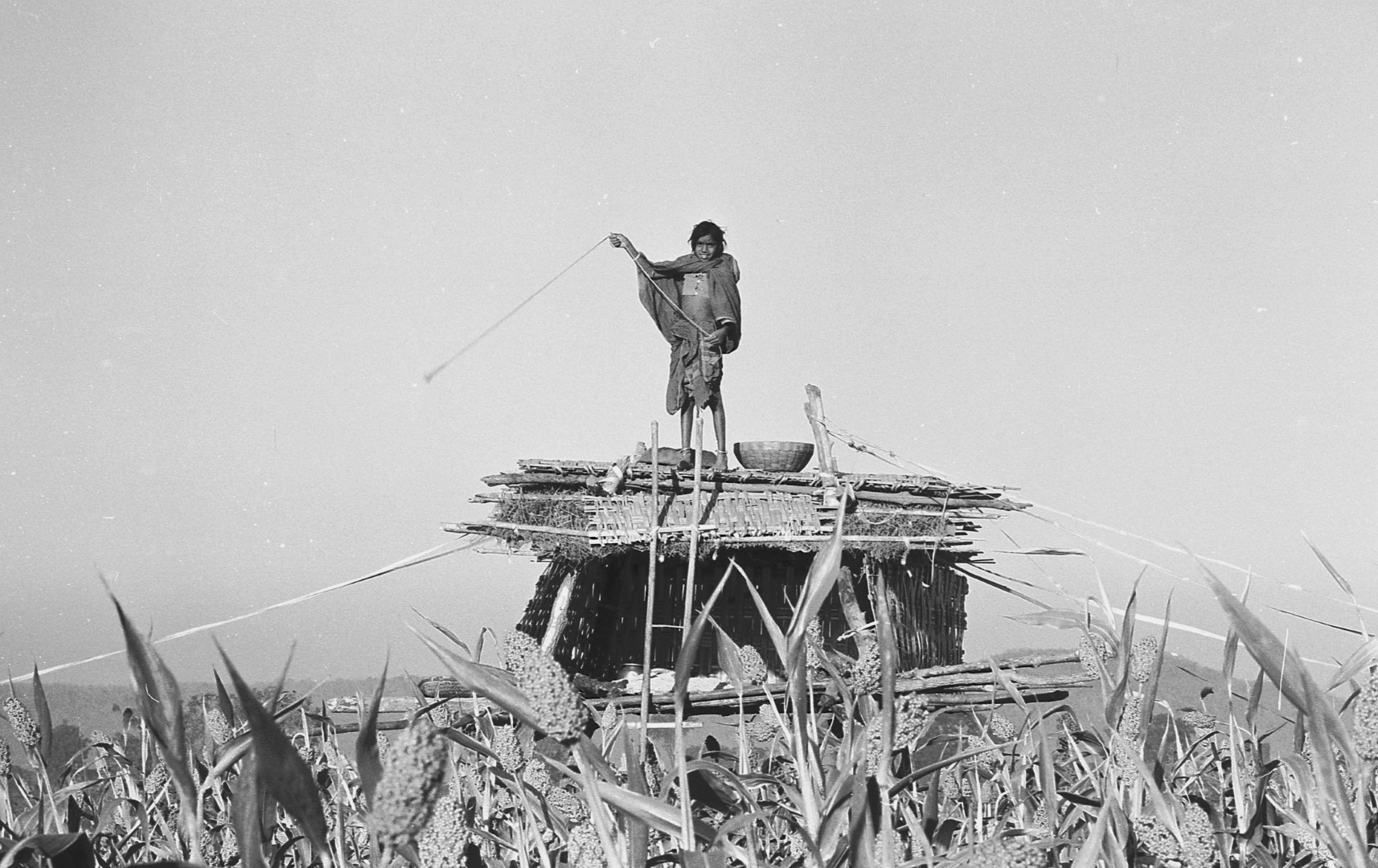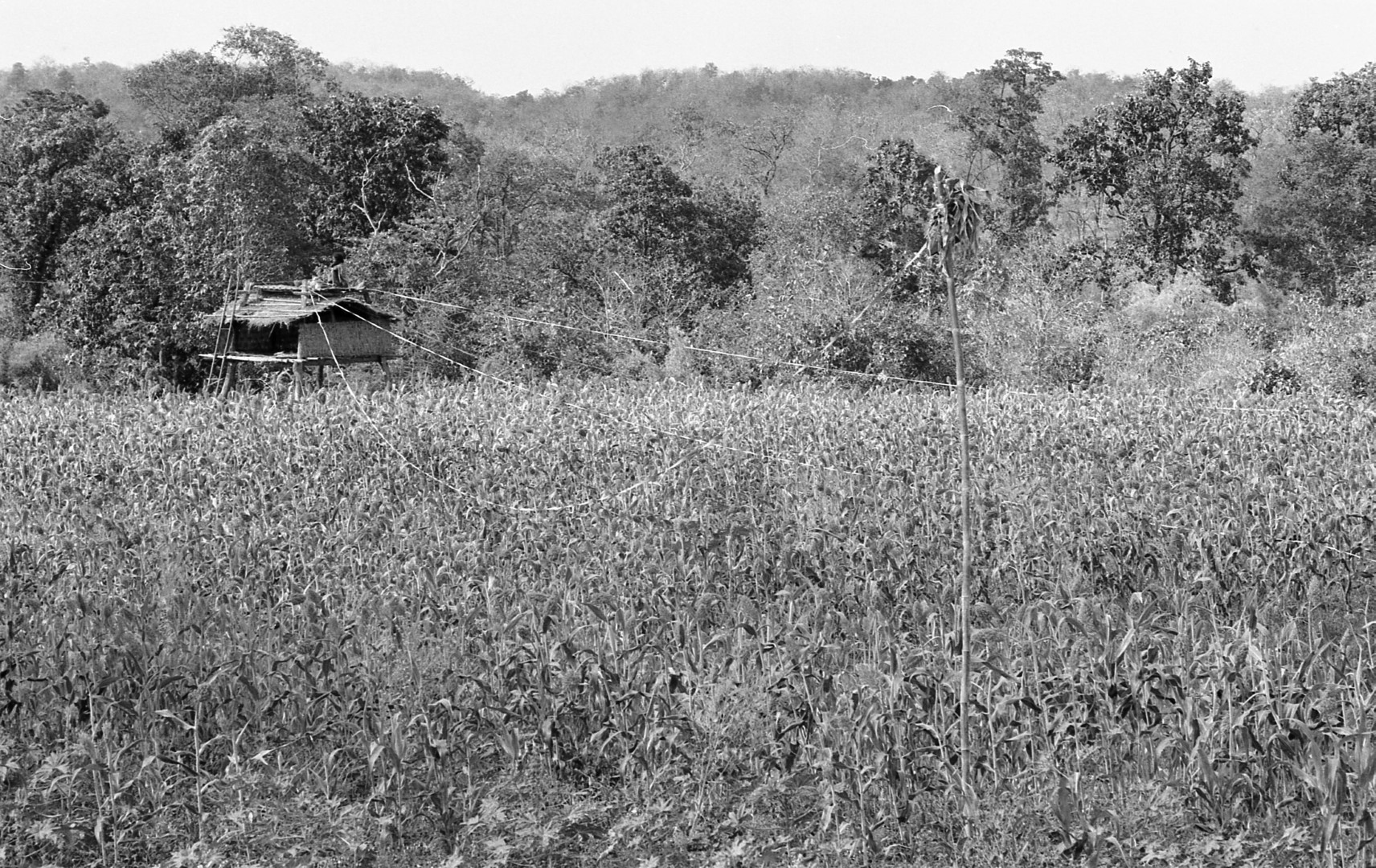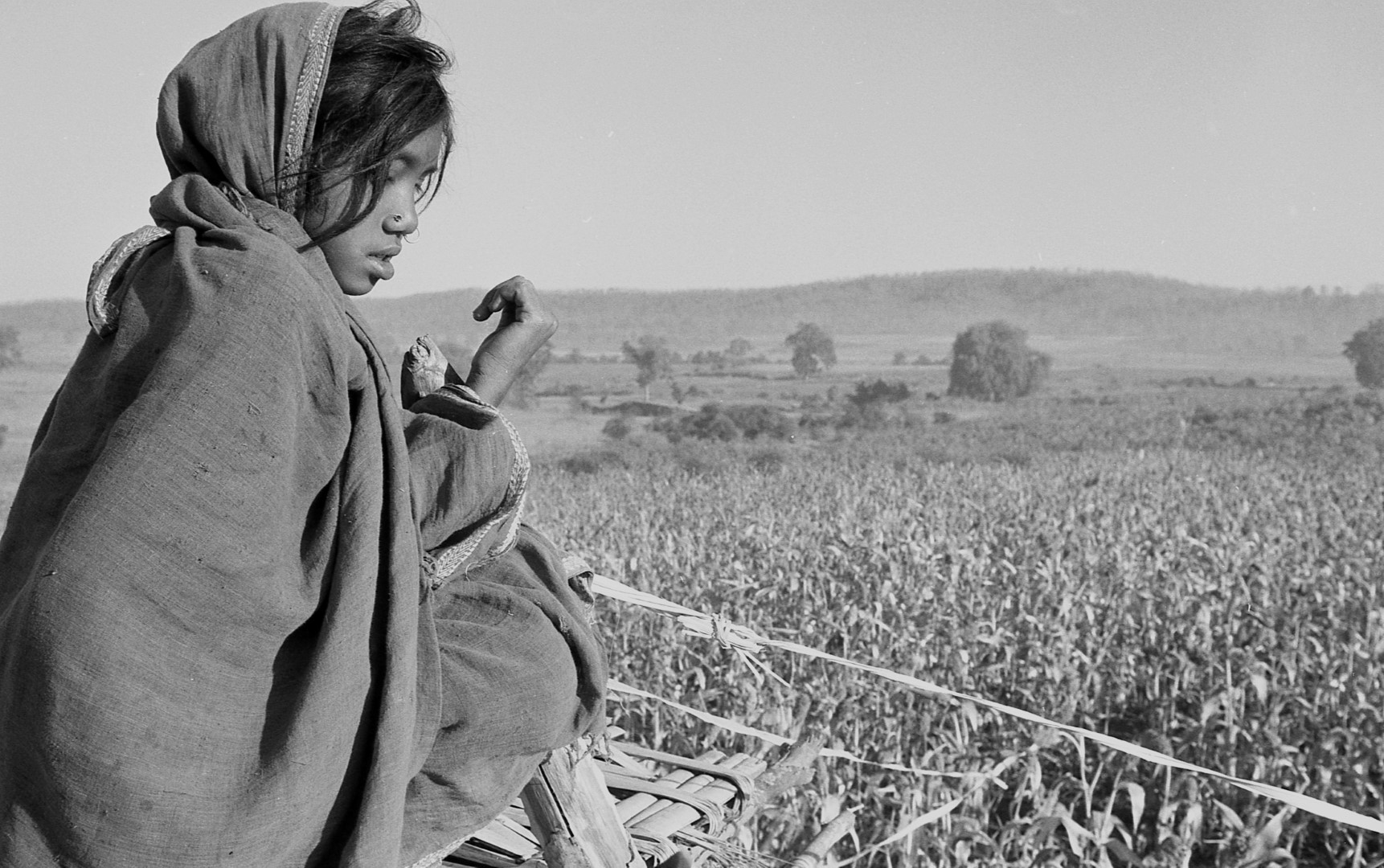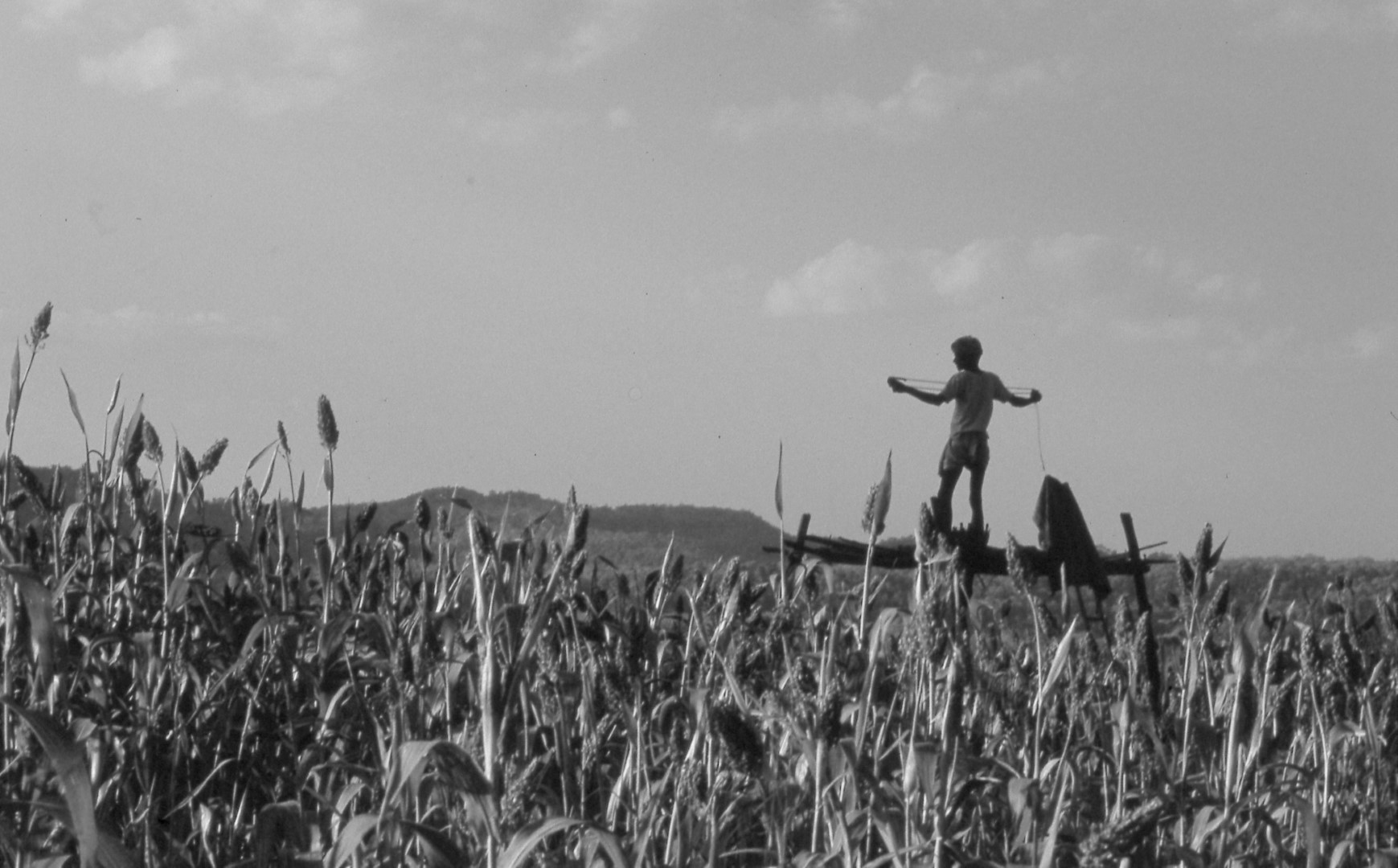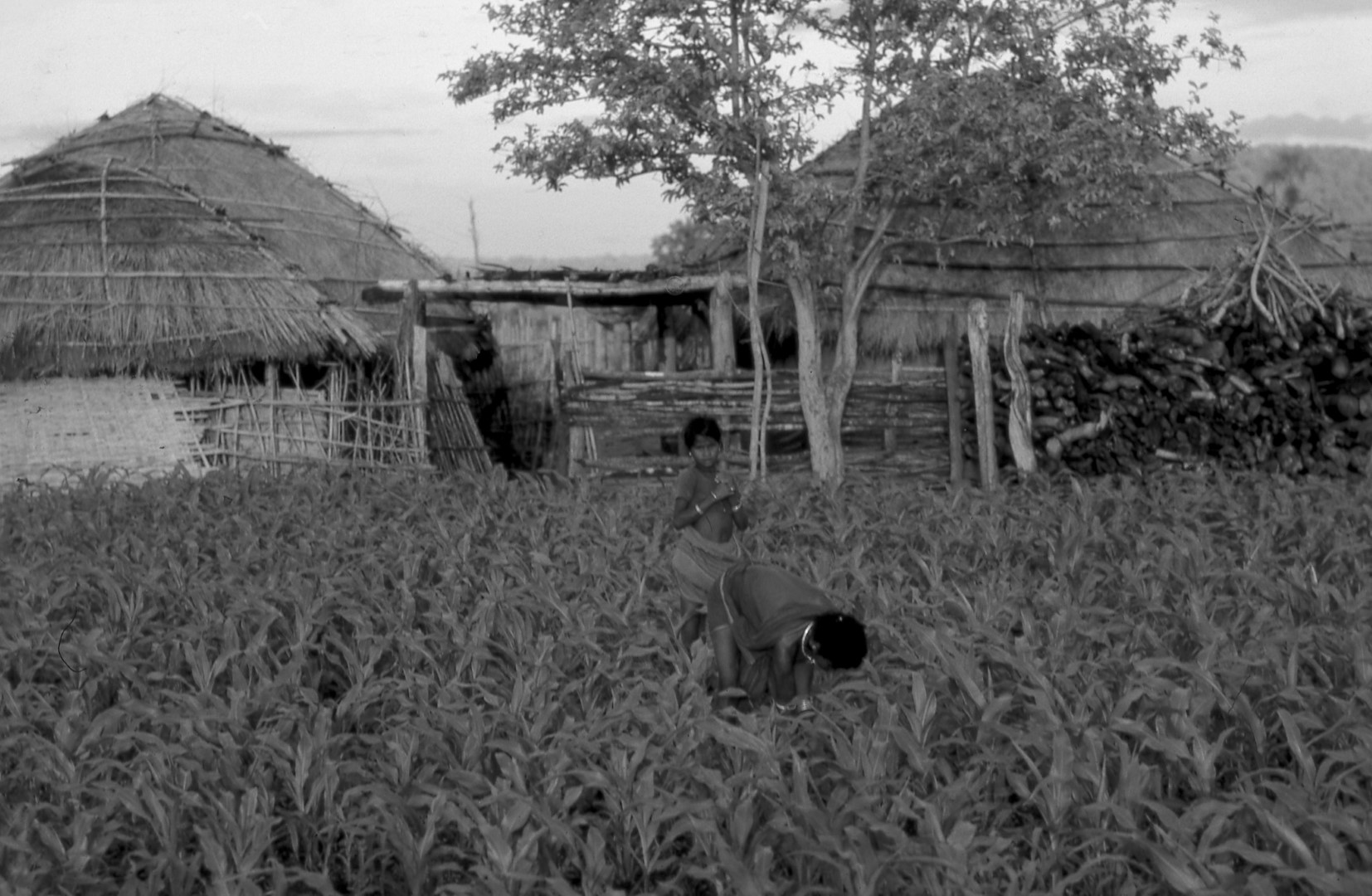Economy & Agriculture
Brass makers, 'Wojalir'
Among the Raj Gonds are a clan of brass makers, called ‘wojalir‘. Their specialised skill is to make brassware by the lost wax (cire perdu) method. They are part of the traditional phratry, ‘saga‘ and clan ‘pari‘ system, and intermarry with the Raj Gonds. They also own land and are agriculturalists. They make such objects as ‘poyla‘, bowls of volumetric measurement, table and hanging oil-lamps, incense burners and votive offerings for the gods. They have the traditional knowledge of collecting bees-wax from the cliff-hanging bee hives, which they use to make their wax moulds. These then encased in clay, and the beeswax is melted out to leave a space into which molten brass is poured. The baked clay is then removed to reveal the brass object. It is then polished and engraved and sold to the customers’ requirements.
The brass makers of Ginnedhari are members of the Vedma clan. Vedma Mahadu was a light-hearted and very intelligent man, who was one of my main informants. His two sons had inherited his specialist trade and followed in his tradition. These 12 photos show the intricacies of brass founding.
Carpentry
In the absence of specialist Hindu caste carpenters, ‘mistri‘, these tribal adivasis are self-sufficient in many skills, including carpentry.
Castor oil
2 photos of women sowing the seeds of castor oil plants. Feminine fertility is said to empower the seeds. It is preferred if they do this back-breaking work. Castor oil is used for both cooking and to fuel their nightlight lamps.
Clearing forest
The time for clearing virgin forest was after the cold season, in January and February. In past centuries the Raj Gonds practised shifting slash-and-burn agriculture, ‘jhum‘. However, now that most of the forest has been reserved by the central Government Forestry Department, ‘jhum‘ cultivation is forbidden. Now they cannot increase their landholdings.
Draught animals, Bullocks & cattle
Training draught animals is a vital in the lives of subsistence agriculturalists, before the arrival of petrol driven tractors, cars and mopeds. A lot of knowledge and experience was needed to maintain a source of power for ploughing and transportation. The manure they supply was vital for soil fertility before the arrival of fertilisers. The Raj Gonds do not keep cows for milkfor drinking as it is vital for calves to grow into healthy draught cattle.
Training a bullock to respond to the wishes of the driver is a time consuming and skilful task. A well-trained pair of bullocks can reach a high price when sold. A household that does not have good draught cattle is at a disadvantage and will have difficulty in maintaining itself. Every household needs at least one pair of well-trained bullocks.
Fishing
Fishing is not a major pastime in this area of black cotton soils, that does not have ponds, though nets are useful for fishing in the nearby rivers, such as the Vatti Vagu.
Grain drying
Keeping stored grain dry is important to prevent it developing fungi and mold. All their various grains are spread out in the sun, and freshly harvested grain has to be carefully sun-dried,
Grain grinding, flour making
The staple grain of the Raj Gonds was millet, or sorghum, ‘jawaar‘. This needs grinding between quern stones to make it into a flour for roasting or frying into a ‘chapati‘.
Grain storage
After drying the harvested sorghum or millet, ”jawaar‘, it is safely stored in large woven split bamboo baskets.
Grain winnowing and threshing
When harvested, all crops are brought to the family’s threshing ground to remove the grain from the stem. The seed heads must then be husked and dried. Each household will have its own threshing floor that will be carefully flattened, beaten and dunged. Small crops, like lentils, will often be threshed in the household’s courtyard.
Herding and livestock
Taking the family livestock out of the village to graze on wasteland surrounding the village, and to the forest, is a daily task, done by the young men and boys of the family. Taking them to a nearby river to drink is important.
Irrigation & Well building
In a monsoon climate irrigation wells make a major improvement in the reliability of crops. However building a large bore irrigation well means raising the costs from the Integrated Tribal Development Agency. This requires political influence. Some large and well connected landowners have managed this. This then requires diesel driven pumps.
Leatherworkers, 'Madgi'
The ‘Madgis‘ are a Hindu ‘dalit‘ caste, who have settled in a separate hamlet just outside Ginnedhari. As traditional leather workers they provide an essential service. It is interesting that the tribals of Ginnedhari, who are proud not to be part of the Hindu caste system, should have accepted a Hindu caste into their village. Maybe this is due to Ginnedhari being a large village, unlike the small hamlets in which most Raj Gonds live.
Markets
Ginnedhari, being one of the largest villages in the area, has a weekly market on Tuesday, where non-tribal traders from Asifabad, Tandur and Bellampali, on the main Nagpur to Hyderabad highway, come to sell their wares and buy a host of local crops and forest produce.
OIL PRESSING
Pressing oil seeds to extract many different types of oil is an important task. They grow castor oil seeds for making lamp oil, mustard seeds and sesame seeds for cooking oil. It is a job when all the family works together to produce such a commodity.
PLOUGHING & SOWING
The Raj Gonds are a settled farming community dependent on subsistence agriculture. The local soil is a soft friable black-cotton soil called ‘regar‘, that turns into a soft mud in the monsoon rains. It is ideal for growing sorghum or millet, locally called ‘jawaar‘. They grow many different varieties. April, May and June is the season for ploughing and harrowing the land befor the monsoon rains in June and July, when the seeds can be sown. Each family needs at least one pair of trained plough bullocks (castrated bulls). The ploughs and their yoke are made by the farmer with timber from the forests. The ropes, reins and harnesses are made from forest grasses and vines.
RICE TRANSPLANTING
Three of the original settlers in Ginnedhari, who have ample land in the centre of the village, and have been able to raise funds from the Integrated Tribal Development Agency, to grow rice in paddy fields. This is always done by women and requires a large labour force.
ROPE MAKING
The Raj Gond farmer has an endless need for rope and string for all his ploughs and harrows, the harnesses and reins for his draught animals, horses and plough bullocks. He also needs string for his household, in particularly for his cot-beds and stools. He collects ‘sabai‘ grass or hemp from the wastelands and forests. After drying it and soaking it in water, it has to be twined into a strong rope of whatever strength and thickness he needs.
TODDY TAPPING, GAUR
Toddy is the sap from the flower stem of the ‘toddi‘ palm. It is extracted from high up in the tree by the Hindu low caste ‘Gaur‘ toddy tapper, who live in a nearby non-tribal village. In the early morning it is a sweet and energy giving drink. By the evening it has fermented and is strongly alcoholic, which people like. It brightens up conversation and can make you very drunk. The ‘Gaur’ goes round the village selling it to his tribal and Hindu clients.
WASHING, CLEANING
Washing and cleaning pots, pans, and clothes is an almost solely female task. Small scale washing is done at home with water from the village well. But if there is a lot to do it will be done in nearby river or stream.
WATCHING THE CROPS
Watching the ripening crops is an important task for all farmers. It is mostly done by children and teenagers. Wild forest animals, and grazing animals from the village, can do enormous damage to the owners’ economy and wellbeing. Grazing animals like elephants, wild boar, goats, buffaloes and cattle will frequently raid the fields by night or day. But the main problem comes from flocks of birds when the seed heads ripen. The worst raiders are flocks of wild green parakeets, who decimate large areas.
